

Safari Animals
A guide to african safari wildlife.
Enjoying a game drive in Africa to take in a variety of safari animals must be hands down one of the most thrilling natural attractions in the world.
Sub-saharan Africa – and Southern and East Africa in particular – provides an infinite opportunity for incredible wildlife sightings, with a very broad cast of characters. Over 1,100 mammal species live in Africa, 2,600 bird species spend part of all of their lives in Africa, and the African rivers and great lakes are home to around 3,000 species of fish.
Along with the diversity of wildlife, Africa is a continent where wildlife can be showered with the most superlatives – the biggest animals , the most dangerous animals , the fastest animals , the strongest animals , the largest herds , the longest migrations , and so on.
With this breadth and variety in mind we’ve put together the below list of the 15 most iconic African safari animals to roam the continent, along with the best places to spot each of them:
Iconic safari animals list

A pair of lions – the ultimate African safari animals
Leaping in at first place is the lion, also known as the king of the jungle. Lions are the largest and most sociable of Africa’s cats . At up to 225 kg, the lion ( Panthera leo ) really is the king of all savanna animals (not jungle!).
These big cats live in prides of up to 40 lions, and it’s the lionesses who do all the hunting, usually sharing their catches with the males of a pride. Lions are very territorial, and the females generally spend most of their lives within their home ranges.
When you hear them roaring during the night, or the day, you’ll be amazed at how loud and powerful they actually are – don’t worry about not hearing the lions snarls or roars, as they can be heard from up to 8 kilometers away. It really is a once in a lifetime opportunity to see lions hunting, or lion cubs playing with each other (but watch out for those man-eating lions !).
Best places to see Lion: Kgalagadi Transfrontier Park, South Africa, Kruger National Park South Africa , Maasai Mara National Reserve, Kenya , Ngorongoro Conservation Area , Tanzania , Okavango Delta , Botswana .
2. African Elephant
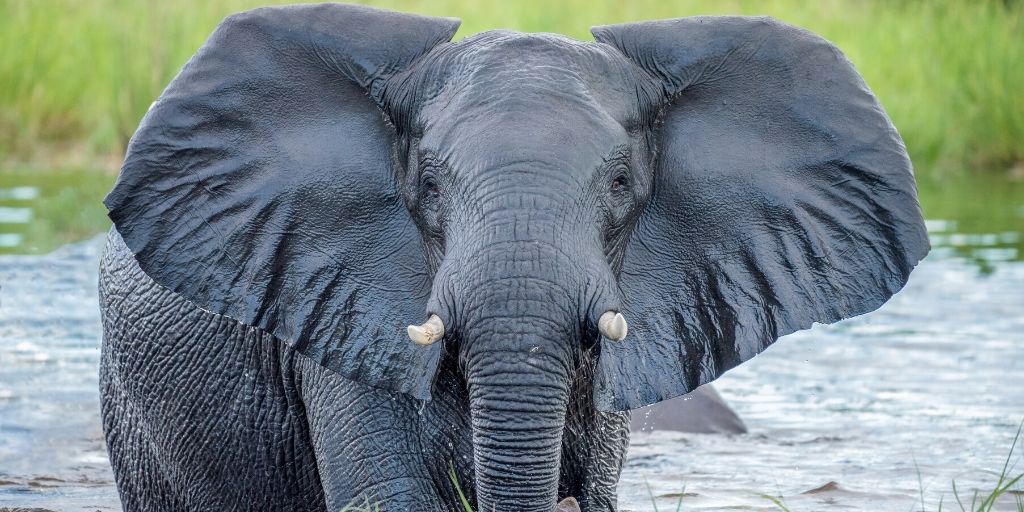
An African elephant – one of the iconic African animals
The African elephant ( Loxodonta africana ) is the largest land mammal and heaviest land animal in the world , weighing up to 6 tonnes. You will be stunned by the sheer size and presence of these creatures, not only on the first time you see one, but each and every time. The good news is, they’re fairly easy to spot!
Elephants play a vital role in the survival of other species by digging waterholes in dry riverbeds, spreading seeds through theirs faecal matter, and creating natural fire breaks in the landscape with their trails, and they do all this on only 2 hours sleep in a 24 hour period!
Best places to see African Elephant: Addo Elephant Park, South Africa, Chobe National Park , Botswana , Etosha, Namibia , Hwange National Park, Zimbabwe, South Luangwa National Park, Zambia.
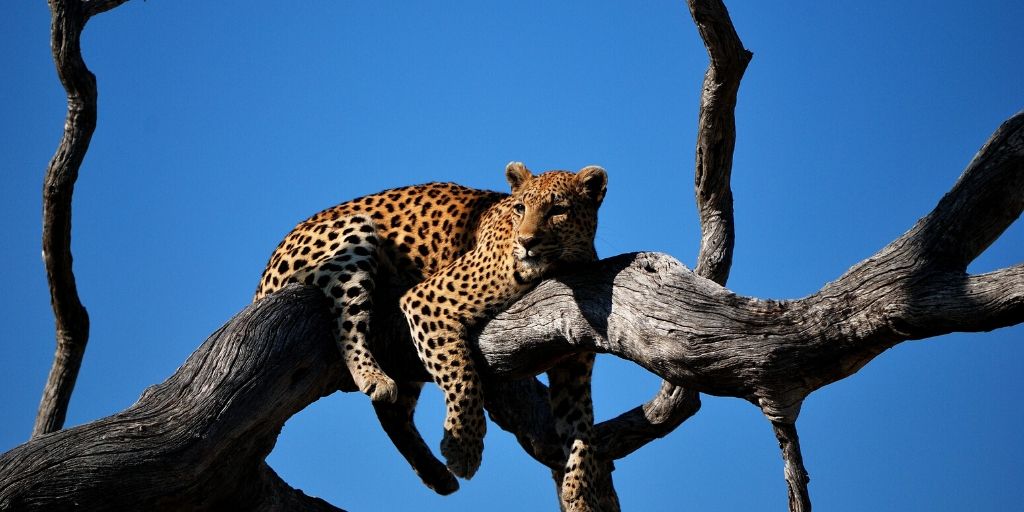
A beautiful leopard doing what it does best… lounging in a tree
The elusive leopard is one of the shyest and least sociable animals in Africa (though not one of the ‘shy five’ ), but are still opportunistic hunters and are highly adaptable. Watching a leopard carry its prey up a tree is a fantastic sight and one of the best African safari sightings you could hope for.
Slightly smaller than their lion cousins, leopards ( Panthera pardus ) are less rare than you might think, but rely on camouflage and being active at night to stay hidden.
Leopards are solitary, independent creatures, and rarely seen together except during mating, or a mother with cubs. As such they are totally self-reliant, and expert hunters – sometimes killing prey up to twice their size. During the daytime they often lounge around in trees and come to the ground after dark to hunt, taking their prey up into a tree to eat at their leisure.
Best places to see Leopard: Londolozi Game Reserve, South Africa , Moremi Game Reserve , Botswana , Samburu National Park Kenya , South Luangwa National Park, Zambia.
4. Rhinocerous

The most elusive of the big five animals?
Rhinos are something you just need to see in real life to understand how impressive they really are.
Once widespread through sub-Saharan Africa, the rhino has been hunted to the brink of extinction, and is probably the hardest of the big five animals to spot in the wild. There are two species of rhinoceros in Africa – the black rhino ( Diceros bicornis ) and the white rhino ( Ceratotherium simum ).
Whilst white rhinos have made a comeback through conservation efforts across the continent, black rhinos are still very much one of Africa’s most endangered animals , and hardest safari animals to spot. The fundamental differences between the white and black rhino are not color, but rather size, temperament, food preference, and mouth shape.
Best places to see Rhinoceros: Etosha National Park , Namibia ,Hluhluwe–Imfolozi Park, South Africa , Lewa Wildlife Conservancy, Kenya , Mkomazi National Park, Tanzania .
5. Cape Buffalo

Cape buffalo – the grumpiest of all safari animals!
Weighing in at not too far short of a ton, the African buffalo ( Syncerus caffer ) has a reputation for being bad-tempered and dangerous. Whilst solitary buffaloes can be unpredictable (and dangerous, hence their inclusion in the big five animals), they are usually a docile beast when in a herd… aside from their tendency to stampede en masse when alarmed.
Not sure about the differences between a bison and buffalo ?
Best places to see Cape Buffalo: Chobe National Park , Botswana , Katavi National Park, Tanzania , Kruger National Park, South Africa , Lower Zambezi National Park, Zambia.

Cheetah -the fastest land animal
The cheetah is famous for being the world’s fastest land animals , reaching speeds of 120 kilometers per hour and can accelerate from 0 to 95 kilometers in just three seconds. These cats need land and space, and seeing one running at full speed is the highlight of any animal safari. But there is more to this cat than just speed; it is beautiful and graceful, and sadly, it’s endangered.
For an animal that hunts during the day, good eyesight, stealth, a spotted coat, and top-notch speed are crucial for survival. The tear marks are among the top distinctive features used to tell the cheetah and the leopard apart .
Best places to see cheetahs: Etosha National Park, Namibia , Okavango Delta, Botswana , Savuti, Botswana , Ruaha, Tanzania.
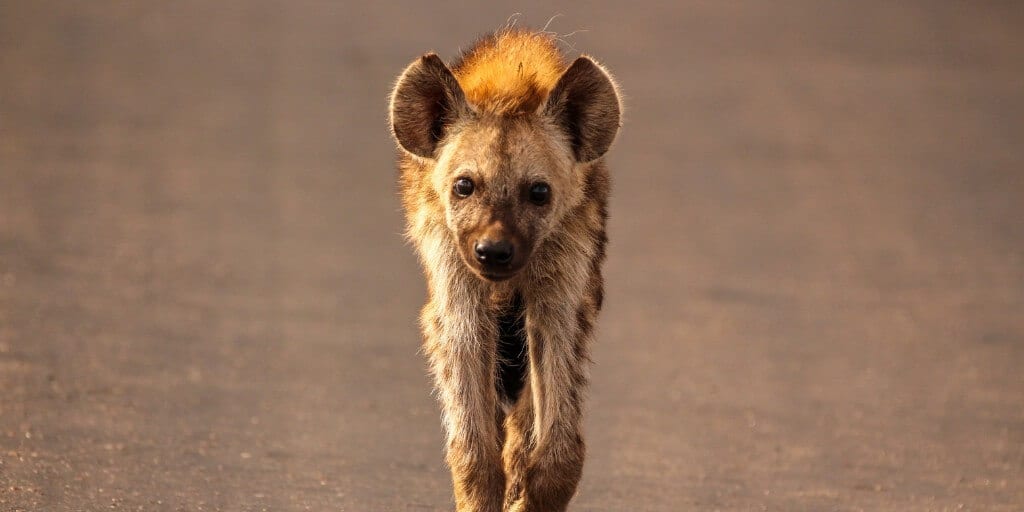
A cute hyena strolling…
There are four species in the hyena family , varying in size and shape.
Hyenas are unique and vital components of most African ecosystems, both taking advantage of other animals’ kills for easy meals and hunting themselves. The size of a hyena kill or scavenge is generally determined by the size of the hyena’s clan, which can run to dozens. They often hide extra food in watering holes, since nothing is wasted. Hyenas eat every part of an animal, including bones and hooves.
Best place to see hyenas: Ngorongoro Conservation Area in Tanzania , Serengeti National Park in Tanzania , Masai Mara in Kenya , Chobe National Park in Botswana .

Giraffe mother with two young
Perhaps the ultimate icon of the African savanna , the giraffe is an unmistakable land mammal known for their long necks and spotted coat (and super-weird giraffe tongue !). They were known by Arab prophets as the ‘queen of the beasts’ because of their delicate features and graceful poise.
With nine subspecies sharing its distinctive characteristics, this African safari animal is the tallest in the world by some way, and amongst the heaviest and largest animals anywhere . The giraffe’s coat is characterized by dark blotches on lighter hair. With age, male giraffes may become darker, and while calves inherit spot patterns from their mothers, each giraffe has a unique coat pattern that sets it apart.
Giraffes have a sharp sense of hearing and smell, another defense against predators, while it can close its nostrils during sandstorms and against ants.
Best places to see giraffe: Etosha National Park in Namibia, Kruger National Park in South Africa, Serengeti National Park in Tanzania, Maasai Mara National Reserve in Kenya.

Zebras at a waterhole
Zebra are perhaps the most stylish of African animals, with their characteristically stunning coats of black and white stripes. These distant relatives of the horse are a frequent sight on any African safari and consist of three different species.
There are many theories about why zebras have stripes , and it seems that perhaps the most likely answer is that the stripes function as a way to deter biting insects like tsetse flies and mosquitos.
Plains zebras play a particularly interesting role in the ecosystem, as they are pioneer gazers, nibbling and feeding on the top-most layer of grass, thereby opening up the grassland for more specialized grazers looking for the short grasses tucked below.
Best places to see zebra: Etosha National Park, Namibia, Makgadikgadi Pans in Botswana, Masai Mara in Kenya, Okavango Delta in Botswana, Samburu National Reserve in Kenya, Serengeti National Park in Tanzania.

A hippo – one of Africa’s most dangerous animals
Spending most of their days keeping cool in the water or mud, hippos are semi-aquatic safari animals. They resemble large pigs but are in fact related to the whale species, and despite their large, cumbersome appearance can easily outrun a human, and are known as one of Africa’s most dangerous animals .
Best place to see hippos: Hluhluwe National Park & Kruger National Park in South Africa, Kazinga Channel in Uganda, Liwonde National Park in Malawi, Masai Mara National Reserve in Kenya, Okavango Delta, Botswana.
11. African Wild Dog
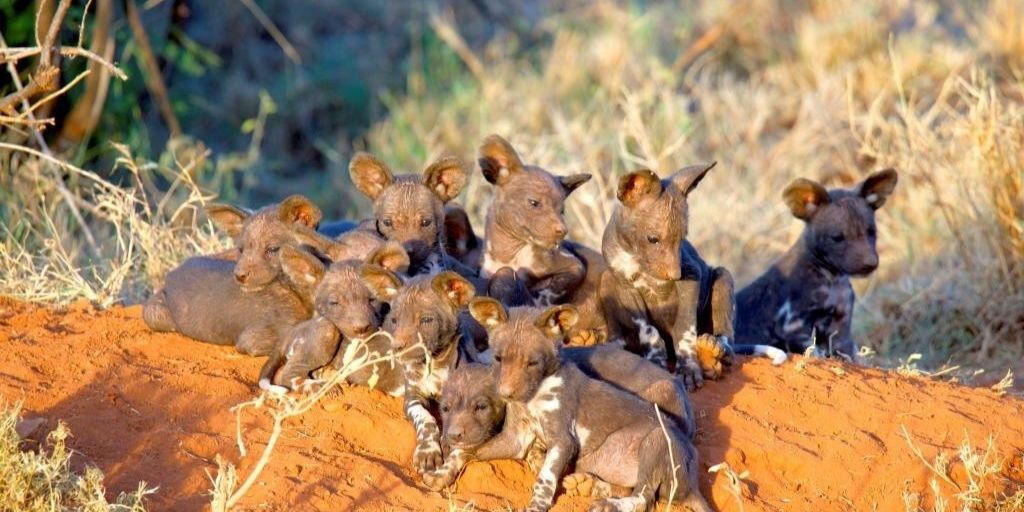
An African wild dog litter
African wild dogs live in packs of around 6-20 and are highly intelligent and sociable. One of the most fascinating sights when watching African wild dogs is the bond they display before a hunt; the wild dogs begin mingling within the group, vocalising and touching each other, working each other up into a frenzy of excitement. Sadly, these animals are highly endangered
Best places to see wild dogs: Hluhluwe-Imfolozi Game Reserve, Tswalu Private Wildlife Reserve and Kruger National Park in South Africa, Hwange National Park in Zimbabwe, Niassa National Reserve in Mozambique, Kwando, Selinda & Linyanti in Botswana.
12. Crocodile
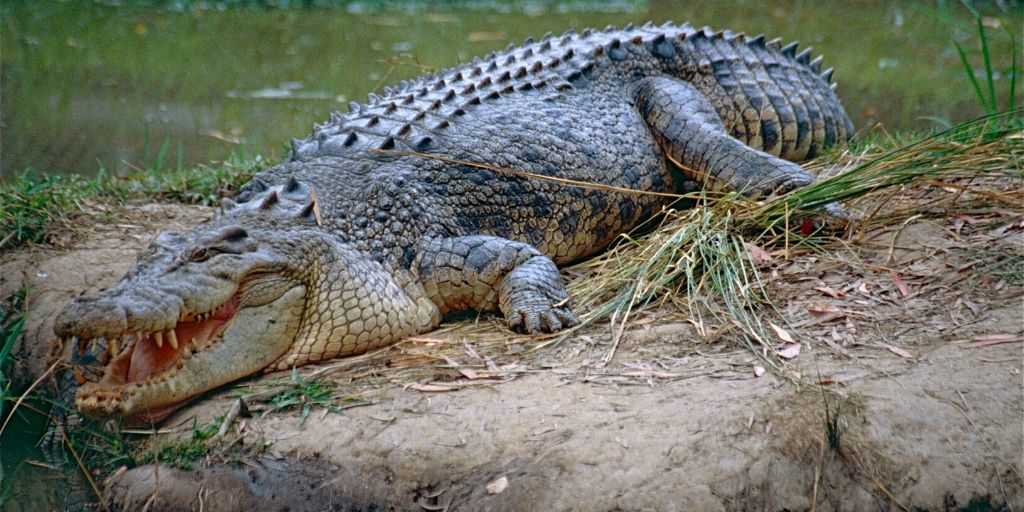
Nile crocodile on the banks of an African river
Truly prehistoric animals are a wonderful thing to witness, so why would you want to miss out on one of the most prehistoric-looking animals on the planet? Despite this ancient appearance they are biologically complex and have a cerebral cortex a four-chambered heart and a functional diaphragm.
One amazing experience, although tense, is watching as they ambush and catch their prey, their powerful gnashing jaws pulling their victims underwater, yes this may seem tragic, but it definitely is a once in a lifetime opportunity.
Best places to see crocodiles: Mara River in Tanzania and Kenya, Kruger National Park in South Africa.
13. Wildebeest
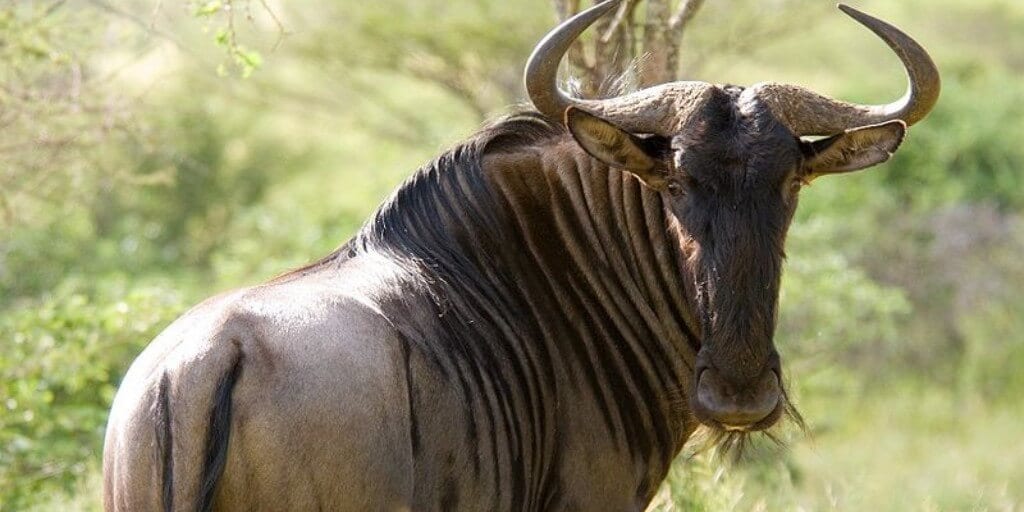
Is the wildebeest one of the world’s ugliest animals ?
Wildebeest are primarily grazers, enjoying grass and the occasional shrub and herbs, living in herds of between ten and many thousands. They’re characterized by a long black mane and a beard of hair hanging from the throat and neck, along with their short curved horns, with males weighing up to 250kg.
Best places to see wildebeest: Ngorongoro Conservation Area and the Serengeti National Park in Tanzania, Masai Mara in Kenya.

The majestic male kudu
The kudu is one of the most spectacular African antelopes to be seen on safari. It has been described as one of the most handsome of the antelope family, due to the male’s unique large, corkscrew horns.
The name found its way into the English language courtesy of the Afrikaans of South Africa. The Afrikaans term ‘koedoe’ is a combination of both of zebra and deer.
Best places to see kudu: Across Southern Africa, but particularly likely to spot in Kruger National Park in South Africa, Etosha National Park in Namibia and all the major Zambian parks.
15. Warthhog

The much-maligned warthog, in long grass
Warthogs are normally found in family groups, where they spend most of their time either looking for food or wallowing in the mud at waterholes. At night they shelter in burrows, entering tail first. Warthogs have a wide distribution across sub-Saharan Africa, with a preference for open woodland and savannahs, and are not endangered.
Best places to see warthogs: Found in all national parks and reserves throughout Southern and East Africa.
So there you have our take on the 15 most iconic safari animals you should be looking out for on your next game drive. What do you think – any controversial picks… or African safari animals that are missing from the list? Let us know in the comments section below!
If you’re looking for more in-depth information on any of these – or other – African animals, you can access this via the links in the sidebar on this page, or check out our animal lists or animal comparisons .
Discover more of our wildlife posts…
Bison vs buffalo: how to tell the difference, what do elephants eat, hippo milk – is it really pink, what are ‘the little five’ animals, 35 (funny) elephant jokes, top 7 picks for safari documentaries, spoor meaning: what exactly is a spoor, collective nouns for animals of africa, collective nouns for birds, top countries for safaris.
- Botswana safaris
- Kenya safaris
- Namibia safaris
- South Africa safaris
- Tanzania safaris
- Uganda safaris
Safari basics
- Safari animals
- How to find the right safari company
- When to go on safari
- What to take on safari
- Safari clothing – what to wear
- Safari rules & etiquette
- Wildlife spotting tips
Most read articles
- All about the ‘big five’ animals
- Collective nouns for animals
- Safari movies to watch before you go
- The world’s fastest land animals
- Apex predators
- 10 Fascinating African tribes
- The biggest animals in the world
- 17 Epic hybrid animals
- The world’s ugliest animals
- Why are flamingos pink?
Africa’s best game reserves
- Chobe National Park, Botswana
- Etosha National Park, Namibia
- Kruger National Park, South Africa
- Masai Mara National Reserve, Kenya
- Moremi Game Reserve, Botswana
- Okavango Delta, Botswana
- Serengeti National Park, Tanzania
Session expired
Please log in again. The login page will open in a new tab. After logging in you can close it and return to this page.
The lions of Africa: expert advice on how to see them on your next safari
Sep 8, 2022 • 7 min read
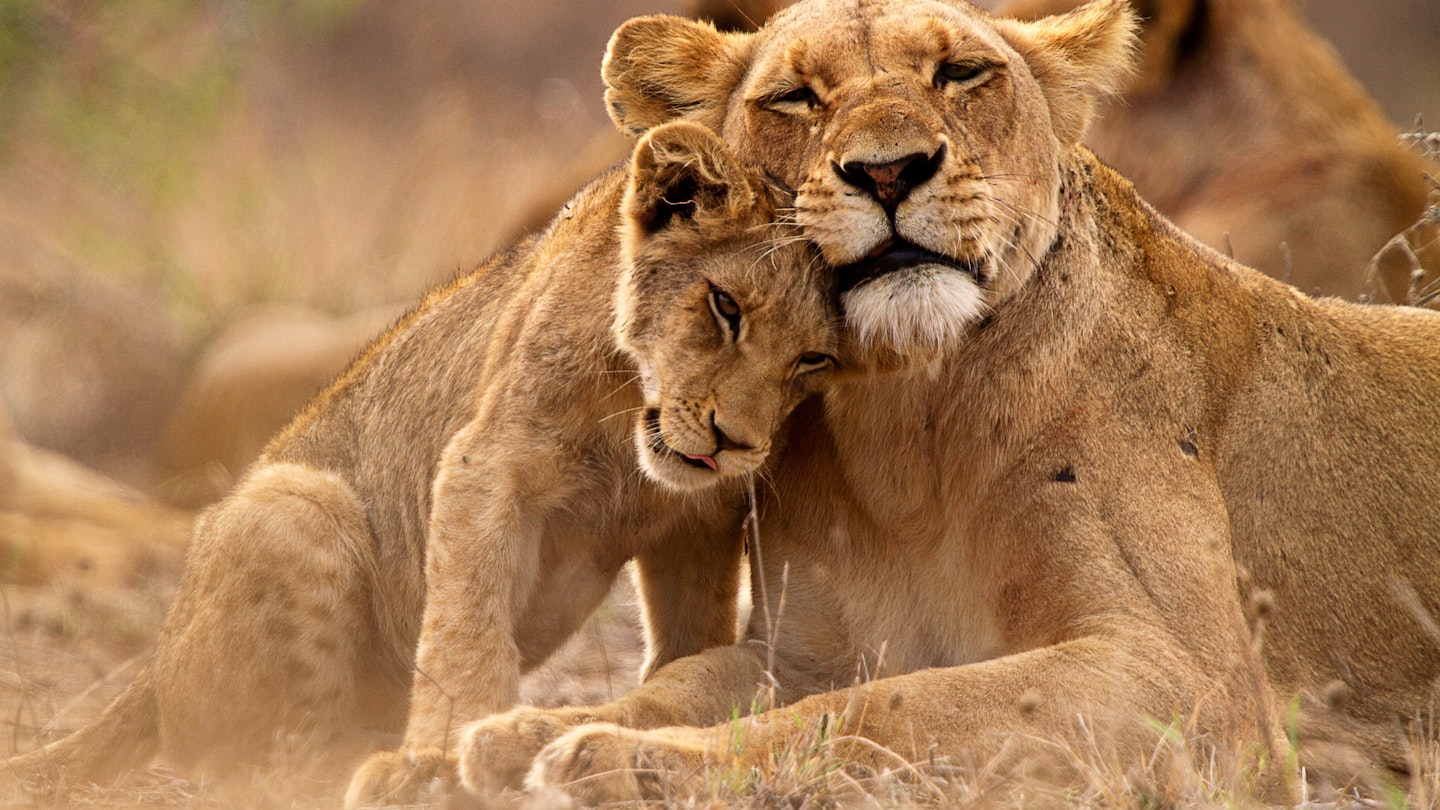
Observing the social aspect of lions' lives is one of the most memorable elements of an encounter with the species © Thomas Retterath / Getty Images
Few experiences in Africa live longer in memory than the first time you see a lion.
Lithe and ferocious, lions are without rival as Africa’s apex predator and carry on their body what one lion expert described as an “aura of impending violence”. The epitome of wild Africa, they are also the most sought-after prize on any safari to East Africa or Southern Africa for their combination of grace and grandeur, charisma and gravitas. Here we introduce you to the king of Africa’s cats, and tell you where's best to see them.

Africa’s biggest cat
Second in size among felines only to the tiger, lions are easily Africa’s largest cat species. Males can be over 2.5m long, 3.5m if you include the tail. The heaviest wild male lion recorded weighed in at a rather hefty 272kg. Females generally weigh between 110kg and 168kg. Lions can eat up to 25% of their own body weight in a single session and, on such occasions, even male lions can appear pregnant, so swollen are their bellies.
Female lions can live up to 18 years in the wild; males have been known to live up to 16, but rarely make it past 12. Lions can live up to 27 years in captivity.
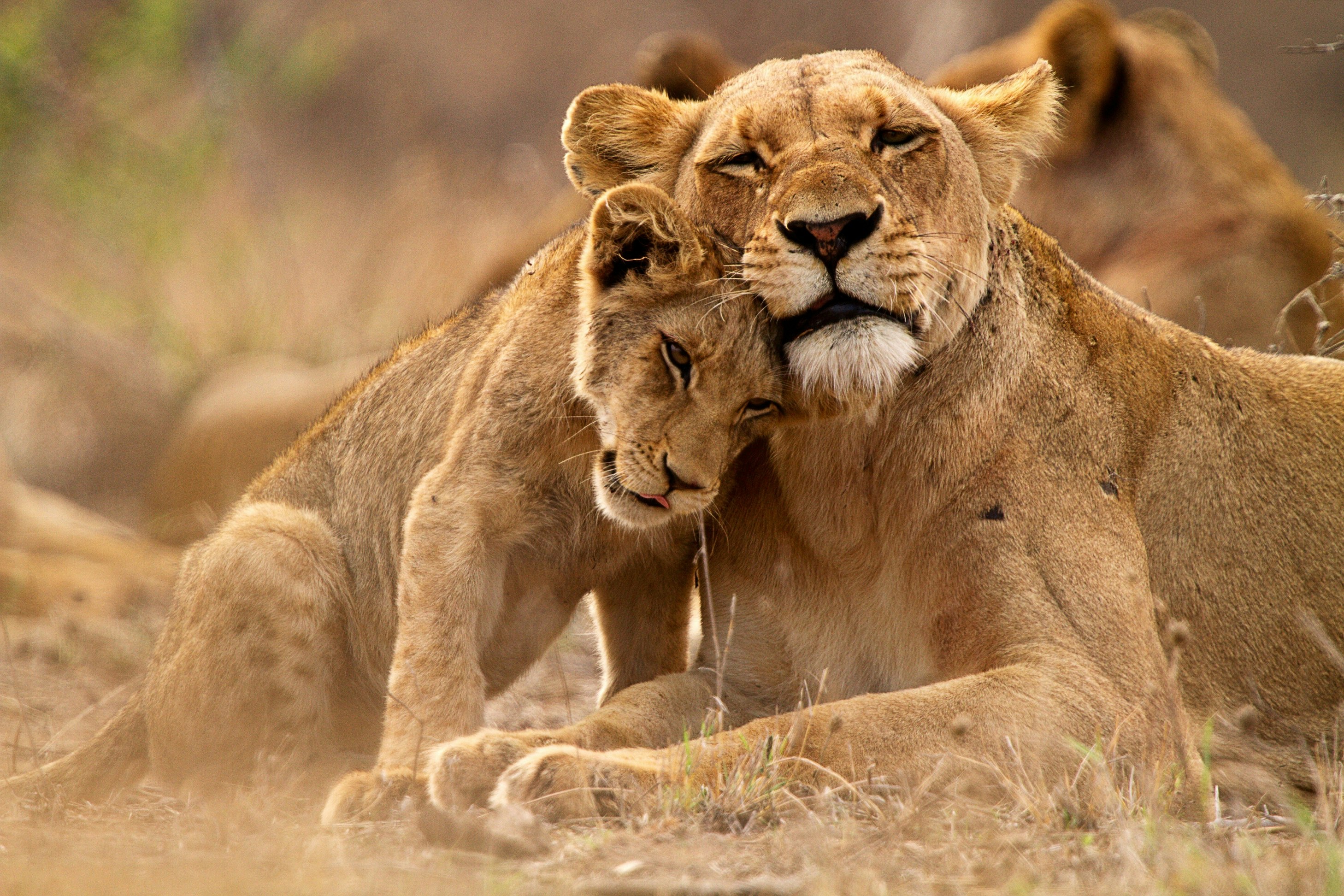
A social beast
There are 38 species of wild cats in the world, and the lion is the only social cat among them. Lions live in prides which can include more than 30 individuals, although many prides are much smaller, especially in areas where pressure from human populations is high, or in regions where prey is scarce.
A multi-generational sisterhood of lionesses forms the core of nearly every pride. Females born into the pride will, in many cases, remain with their sisters and mothers, aunties and grandmothers throughout their lifetimes. Together this formidable team of lionesses raises the pride’s cubs and inhabits a defined home range that can be as small as 35 sq km, or as large as 1000. They hunt as a team, defend their territory together against intruders, and raise cubs in a collective creche-like environment.
Safari animals: the story of rhinos (and the best places to see them)
Lion pregnancies last between three and four months and, when they are ready to give birth, lionesses retreat to a secluded place where the cubs are born. The average size of a litter of lions is between two and four, but as many as seven have been recorded. Cubs cannot open their eyes until around ten days after birth, and mothers keep their cubs hidden until they are around eight weeks old. Despite the protection afforded by the pride, lions are particularly vulnerable during their first two years of life.
When they reach adulthood, which for lions usually occurs between two and four years of age, the young males will leave their natal pride and search for a territory of their own – this is nature’s way of ensuring that sexually mature males do not mate with their own relatives. They will often join with brothers or cousins to form a coalition and, largely nomadic, these dispersing males will wander until they can successfully challenge a resident male (or males) for control of a pride. Once in control, they will patrol their territory, sometimes remaining on their own with the other coalition male(s), sometimes hanging out with the pride females and cubs.
Where to see rhinos on safari in Africa in 2022
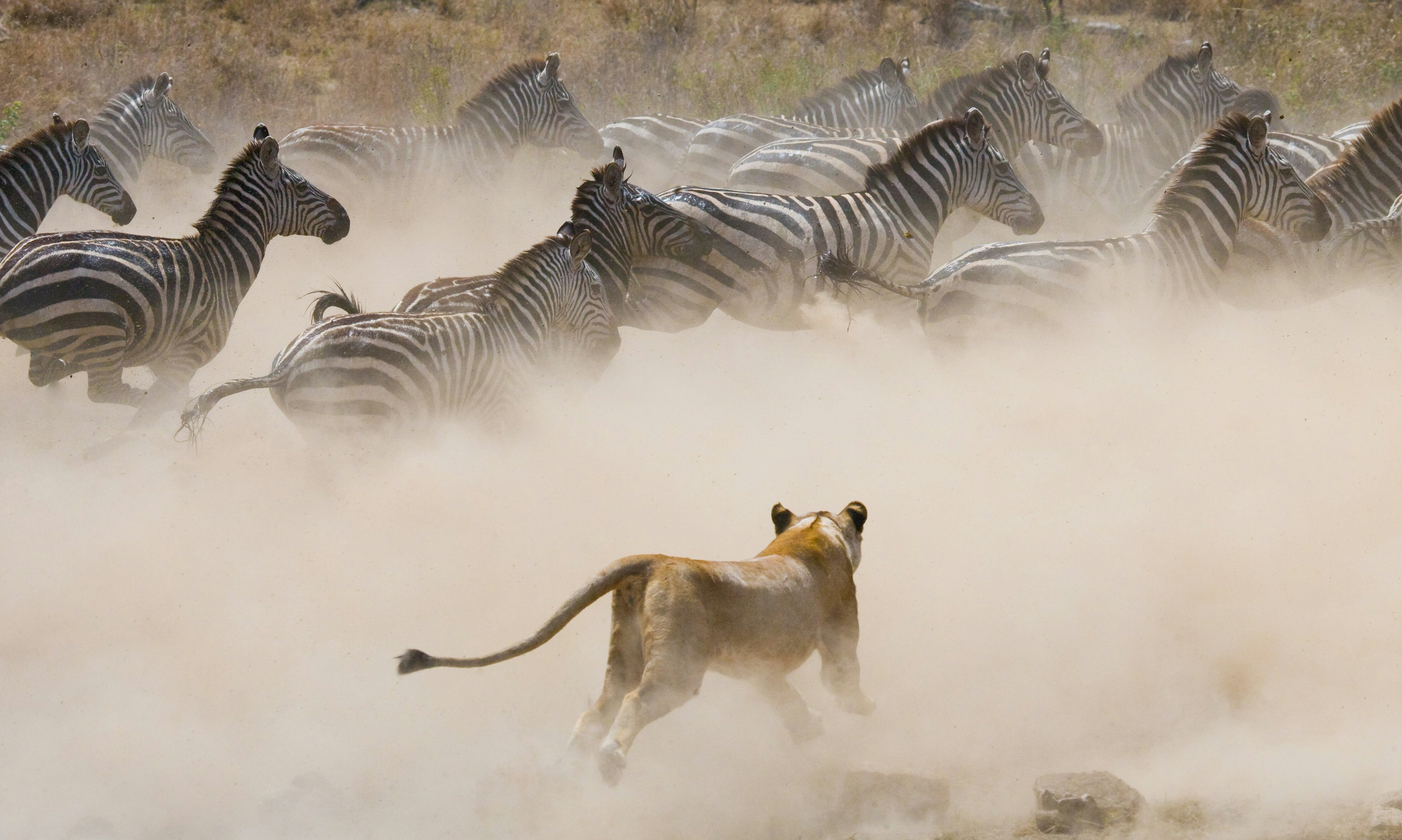
What lions eat
Lions are great opportunists and will eat springhares, elephants and most animals in between. Their favorite prey varies from one region to the next, but their diet often includes zebra, warthog, buffalo, wildebeest, impala, gemsbok, and warthog. One pride of lions even learned to hunt seals along Namibia’s northern coast. Lions also hunt giraffes – this is a particular specialty in Tanzania’s Selous Game Reserve . Lions commonly hunt elephants in Zimbabwe’s Hwange National Park, especially late in the dry season (September and October); the weight imbalance between lions and elephants, which can weigh 3.5 tons, is the greatest disparity between predator and prey in the animal kingdom. Even one-tonne buffaloes can weigh more than seven times that of the adult lioness bringing it down.
A day on safari in Africa: what you can expect in camp and in the wild
Although lions are skilled hunters and can reach a top speed of 93km/h, they rely on short bursts of speed rather than stamina – a typical lion hunt requires that lions stalk their prey to within around 15m before launching their attack. And despite such skills, their recorded success rate as hunters can be as low as 15% and never higher than 38.5% – in other words, significantly more than half of all lion hunts end in failure. And contrary to popular belief, lions routinely scavenge a significant proportion of their meals.
Lions will also eat domestic livestock, especially cows, and donkeys. With human beings and lions living in ever-closer proximity, such killings are a major cause of human-lion conflict, with many lions killed in retaliation.
Protecting rhinos from poachers in Africa - what it's like working on the frontline

King of the jungle?
Contrary to popular lore, the lion has never been king of the jungle: they are most at home out on savannah plains or in open woodlands. Lions can adapt to many different habitats, from dense woodlands in Ethiopia and Uganda to semi-arid environments such as Botswana’s Kalahari and the Skeleton Coast of northern Namibia. Although lions, like most cats, aren’t particularly fond of water, they have learned to become strong swimmers in Botswana’s watery Okavango Delta .
Are you ready for a self-drive safari?
The largest lion populations are in East and Southern Africa; some estimates suggest that half of Africa’s lions live in Tanzania . There are small lion populations elsewhere, including the Gir Forest, in the Indian state of Gujarat , and West Africa (where the lion is listed as Critically Endangered). The largest lion populations are in Selous Game Reserve and Ruaha National Park (Tanzania), the Serengeti -Masai Mara (Tanzania and Kenya ), Kruger National Park (South Africa) and the Kavango-Zambezi Transfrontier Conservation Area (which spans Angola, Botswana, Namibia, Zambia and Zimbabwe).
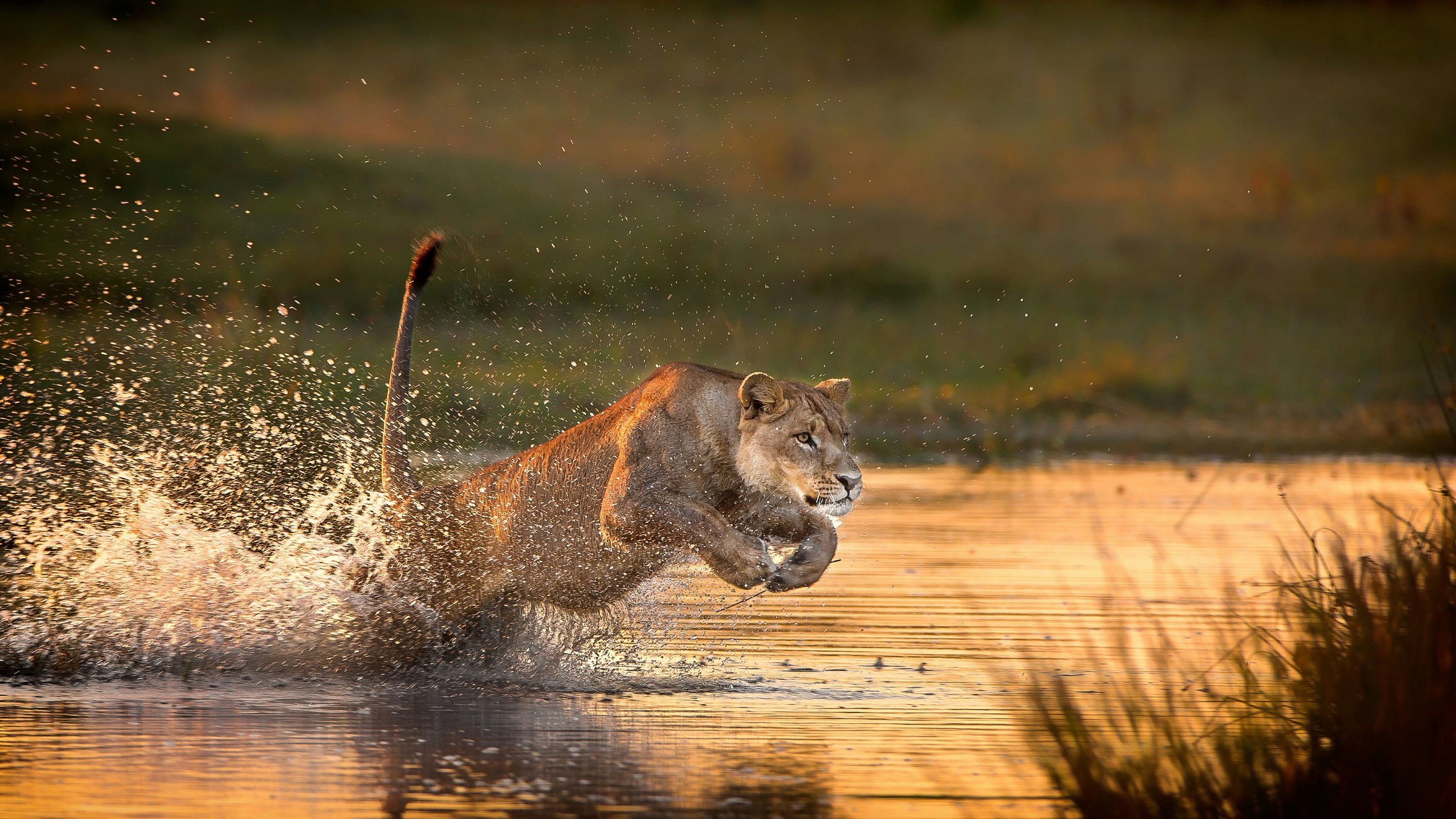
The best places to see lions on safari
Northern Botswana has excellent lion-watching territory, including Moremi Game Reserve and elsewhere in the Okavango Delta, Chobe National Park (especially the Savuti region) and the Central Kalahari Game Reserve.
Kenya is home to around 2000 lions, with sightings possible in Masai Mara Game Reserve and the surrounding community conservancies, Amboseli , Tsavo East and Tsavo West and Lake Nakuru national parks, as well as Samburu National Reserve and the conservancies of the Laikipia Plateau .
Wild times: a guide to the best national parks in Kenya
There aren’t many places in Namibia where you can see lions, but Etosha National Park in the country’s north is a brilliant exception. Khaudum National Park and the emerging parks of the Zambezi Region (formerly the Caprivi Strip) are quieter alternatives.
Beyond safaris, these are Namibia’s most awe-inspiring experiences
South Africa
Lions have been reintroduced onto many private reserves in South Africa. Otherwise, Kruger National Park is one of the world’s best places to see lions. Madikwe Game Reserve and Kgalagadi Transfrontier Park are less busy but also filled with lions.
The top 19 beaches in South Africa for sand, surf and scenery
This is prime lion-viewing land, and includes the Serengeti National Park, Ngorongoro Crater and Tarangire National Park in the north, and Selous Game Reserve and Ruaha National Park in the south.
Tanzania: an epic safari following the Serengeti's Great Migration
A much-underrated lion-watching destination, Zambia’s South Luangwa National Park is excellent, with North Luangwa and Kafue national parks offering wilder experiences.
Unforgettable adventure activities in Zimbabwe and Zambia
Hwange National Park is one of Africa’s best national parks and lion sightings are common. Mana Pools is another park with a healthy lion population that you can watch while on a walking safari.
8 vital things to know about South African safaris
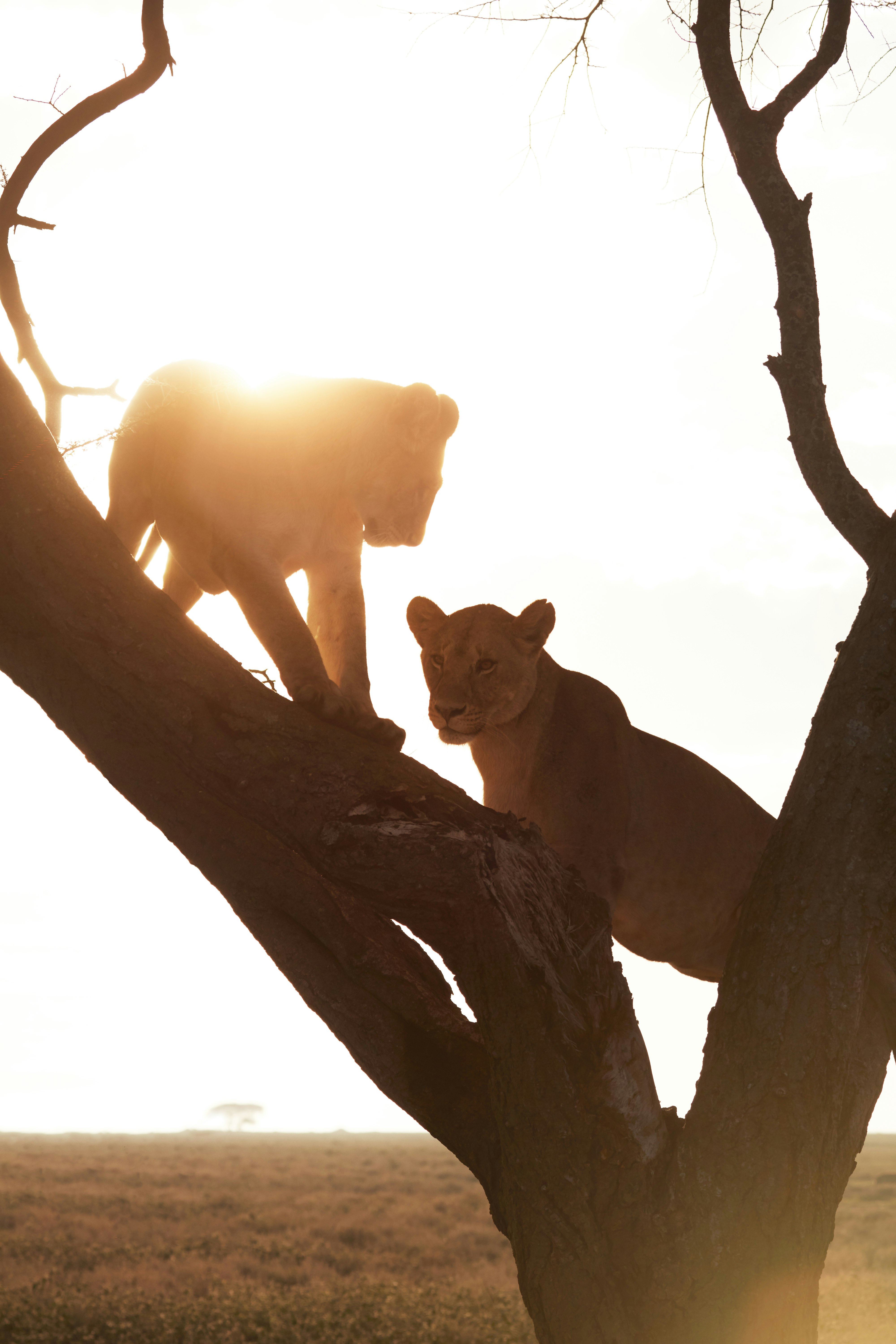
Lions in peril?
There are more rhinos, more elephants and more gorillas than there are lions in Africa. No one really knows how many lions there were in Africa a century ago, but most estimates suggest that it was more than a million. A study in 2019 estimated that there were just 22,509 left on the continent and that lions have disappeared from 95% of their former range.
Many lions live in isolated populations that may not be viable in the long term, and just 40% of Africa’s lions live within the boundaries of protected areas. Just eight countries are believed to have at least 500 adult lions: Tanzania, Botswana, Kenya, Mozambique, South Africa, Zambia, Zimbabwe and Namibia.
The lion is listed as Vulnerable by the International Union for the Conservation of Nature (IUCN).
Where to go for your first safari in Africa
This article was first published October 2019 and updated September 2022
Explore related stories
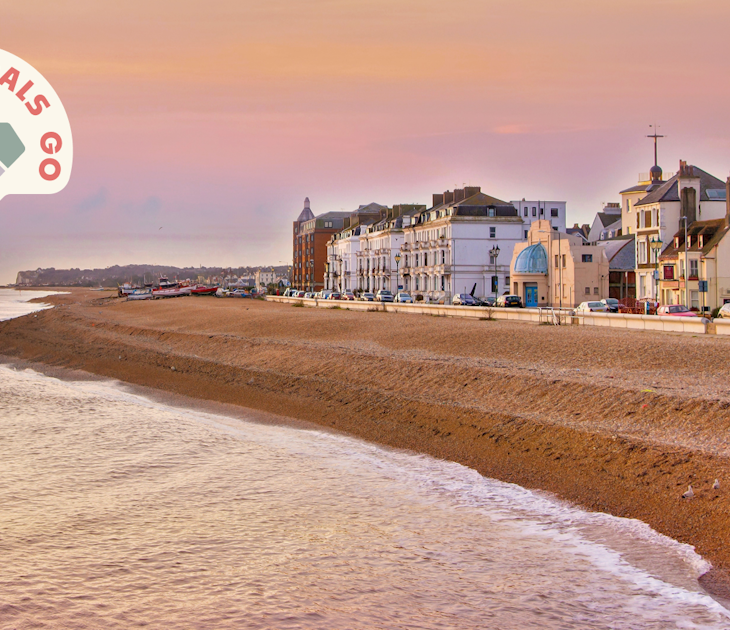
National Parks
Aug 16, 2023 • 6 min read
Millions visit England each year for good reason. Let our England-based insiders show you where to find beauty away from the crowds.
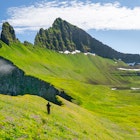
Dec 6, 2022 • 10 min read

Nov 22, 2022 • 6 min read

Aug 23, 2022 • 10 min read

Aug 18, 2022 • 6 min read
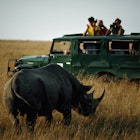
Aug 16, 2022 • 6 min read

Jul 28, 2022 • 7 min read
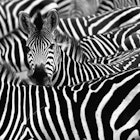
Jan 18, 2022 • 7 min read
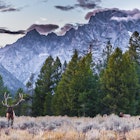
Dec 2, 2021 • 5 min read
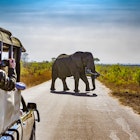
Oct 5, 2021 • 8 min read
- Central African Republic
- Democratic Republic Of Congo
- Indian Ocean
- Republic Of Congo
South Africa
- Latin America
- Galapagos Islands
- North America
- Polar regions
- Arctic Canada
- Australasia
- Gorilla Tracking
- Grizzly Bears
- Polar Bears
- Puma Tracking
- Snow Leopards
- Blue Whales
- Bengal Tigers
- Siberian Tigers
- African Lions
- Spirit Bears
- Lowland Gorillas
- Experiences
- Jungle Holidays
- Bush and Beach Combinations
- Conservation Travel
- Natural World Heroes
- Work with Us
- Consumer Protection Overview
- Privacy Policy
- Press and Awards
- Client Reviews
- Expedition Leaders
- Specialist Leaders
- Expeditions for Change
- Journey to Natures Edge
- Country: Settings: Country:
- Currency: Currency:
- Call Us (619) 975-8082
- Destinations
- Gorilla Trekking
- EXPERIENCES
- Journey to Nature's Edge
African Lion Safaris
Encounters with the icon of africa.
The true icon of Africa’s Big Five, the African lion is the symbol of strength and power, the epitome of any safari to wild Africa. Today, catching sight of this apex predator is one of the most sought-after prizes for almost every safari-goer, with regal prides located from East to South.
Observing the social aspect of lions' lives is one of the most memorable elements of an encounter with the species. Out on the wild African plains, females stalk big game as they feed on tasty grasses, prides nap in the shade and cubs play under the watchful eye of their mothers as males fight for the crown. Exploring via game drives and even walking safaris, witness the wild behaviours of these magnificent mammals.
Where can you see the African Lion?
African Lions are found in sub-Saharan Africa, with 80% of the population in eastern or southern Africa and three of the five largest populations in Tanzania. African Lions used to be found across most of the continent, but in recent decades they have disappeared from 12 sub-Saharan countries.

THE AFRICAN LION
- Lions are notably the only sociable big cat, with prides formed of a few muscular males, crowned with a thick mane and measuring up to 3.5m long and up to 272kg.
- Most of the hunting is done by the smaller more agile females, weighing between 110 kg and 168 kg, who will work together to hunt anything from small antelope up to buffalo and even giraffe; in Savuti in Botswana, they have learnt to hunt young elephant.
- The males will often get involved to help tackle the dangerous animals. Males have a large mane of hair which can be beige or black depending on the individual and the area they live in.
Contact us for a bespoke quote
African Lion Safari Destinations
- Masai Mara National Reserve: A great place to see lions year-round in the flat, wide and open plains of the Masai Mara. In July, 2 million wildebeest cross the Mara River under the eyes of the hungry lions.
- Serengeti National Park: Three of the five largest lion populations are in Tanzania and the Serengeti is one of the best spots to see lions due to the availability of food and the million wildebeest.
- In Southern Tanzania, Ruaha National Park is one of Africas hidden treasures with only 6000 visitors a year. Second to the Serengeti, Ruaha is home to 10% of the worlds lion population so there is great opportunities to see lions around less safari vehicles.
- The Ngorongoro Crater offers the oppourtunity to see the Big 5 in a different setting, in the worlds largest inactive volcanic caldera.
- Okavango Delta: The Okavango Delta is the best place to see water-adapted lions in Africa, these lions are 15% larger than others and have adapted to hunting during the day when the buffalo are grazing. The permanent water and nutritious grasses makes the Okavango Delta the perfect habitat for buffalo and you may witness lions fighting them here.
- Kruger National Park: Most of South Africa’s lions can be found in Kruger National Park. Being the size of Wales, it can be hard to find them, but South Kruger has way more lions as it is wetter and greener. We recommend staying at Sabi Sands, which is one of the most reliable places to see lions in Africa. Timbavati is also the best place to see white lions in Africa.
Lions are highly adaptable, and in Namibia you will find ‘desert-adapted’ or ‘desert-lions’, that have adapted to survive in the harsh landscape of little vegetation and prey. The best places to see lions in Namibia is in Kaokoveld and Damaraland, but be aware these lions are nomadic and you are not guaranteed to see them.
Classic Kenya Safari
An exciting family safari, exploring the masai mara....

Luxury South Africa Safari
Relax in the ultimate luxury of your lodge after encountering the African big cats whilst out on safari with your expert guide. Spend time on the coast of Cape Town exploring historic Robben Island and the rugged rocks of beautiful Cape Point. Visit Hermanus, a world-renowned whale watching destination, take the opportunity to see both black and white rhino in one place and even search for the rare white Lion in Timbavati Game Reserve.

Classic Tanzania Safari
This Tanzania highlights small group safari takes you to the heart of the action trying to catch sight of the migration, witness wildlife in the Ngorongoro Crater and enjoy an option hot air balloon ride over the Serengeti.

Small Group Namibia Safari
This expertly-guided small group trip consisting of a maximum of seven guests takes in the highlights of Namibia. Over the course of this ten day trip you will get to visit the iconic towering dunes at Sossusvlei, the coast and wildlife at Swakopmund and Walvis Bay, the desert-adapted wildlife and unique rock formations of Damaraland, rewarding wildlife viewing in Etosha National Park and an educational tour of the AfriCat Foundation at Okonjima.

Okavango Delta Botswana Safari
Combining Chobe National Park and the Okavango Delta, staying in both a 'wet' camp and 'dry' camp in the Delta to really get a feel for the iconic landscapes of Botswana.
African Lion Conservation
In just 25 years, Africa’s lion population dramatically dropped with only 50% of their numbers remaining across the iconic landscapes of the continent. The IUCN classified these majestic creatures as “vulnerable” as a result, a subject of habitat loss and fragmentation, illegal wildlife trade, poaching and human-lion conflict.
It was as a result of this revelation that the Lionscape Coalition was formed, in response to the growing threat of extinction and the predictable knock-on effect this would have on Africa’s biodiversity. Lions are classed as an “umbrella species”; with a wild lion population thriving, the entire surrounding eco-system functions effectively, ultimately also affecting the livelihoods of those relying on ecotourism for survival. The Lionscape Coalition sees four commercial competitors, who share the bold vision of the Lion Recovery Fund (LRF) to double wild lion numbers by 2050, collaborate on lion conservation programmes across Africa. Putting all commercial considerations aside, this alliance brings to this initiative over 100 years of positive conservation and community impact throughout Africa.
Lions are a resilient species so the future looks bright. These animals will rapidly reproduce if their habitats are protected if communities have incentives to co-exist and protect them. Creating healthy ‘lionscapes’ which can benefit these local communities is key to the success of population decline being reversed and many other species will recover in the process.

When is the Best Time to See African Lions?
The best time to see lions is during the peak safari season from July to October. The cool, dry winter means less vegetation for wildlife to hide behind and the lack of rain means wildlife will congregate around the lakes and rivers and most wildlife wont stray too far from the little water left.
- Help Center
- Plan Your Visit
- Places to Stay
- Youth Programs
- Student & Youth Groups
- Dining Programs
- Events & Catering
- Live Cameras
- Our Mission
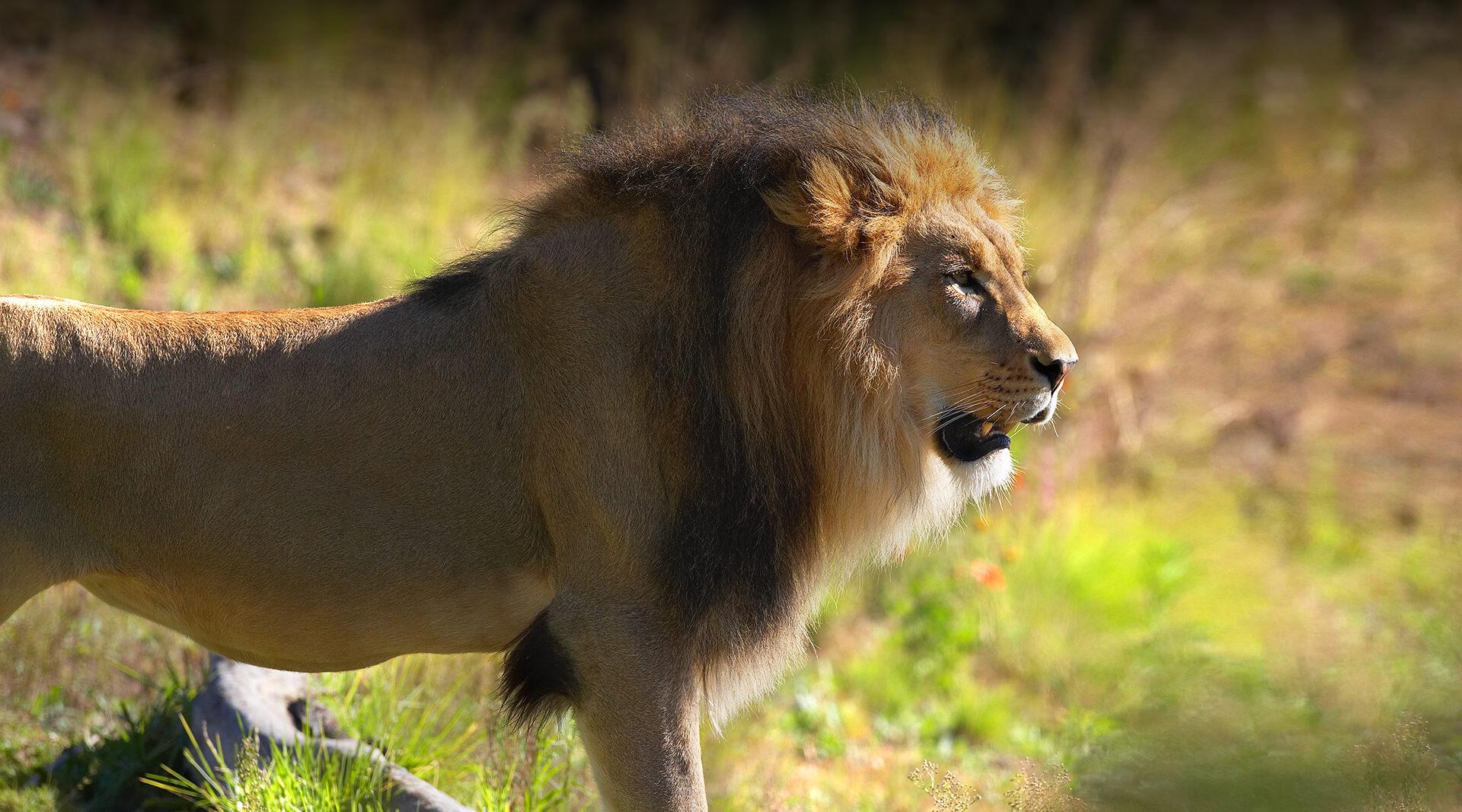
- Conservation Status: Threatened
A lion’s life is all about sleeping, napping, and resting. In a 24-hour period, lions have short bursts of intense activity followed by long bouts of lying around that can total up to 21 hours! These gorgeous felines are good climbers and often rest in trees, perhaps to catch a cool breeze or to get away from flies. You may see one of our African lions relaxing in an acacia tree at Lion Camp®!
You can observe natural lion behaviors as the cats romp in the grass, explore the logs and rocks, or rest in the cool shade. Come right up to the large glass panels for some eye-to-eye moments. Meet a lion up close during a Behind-the-Scenes Safari.

Save the Chubby Unicorns

Gorilla Shadow

PREFERRED HOTELS
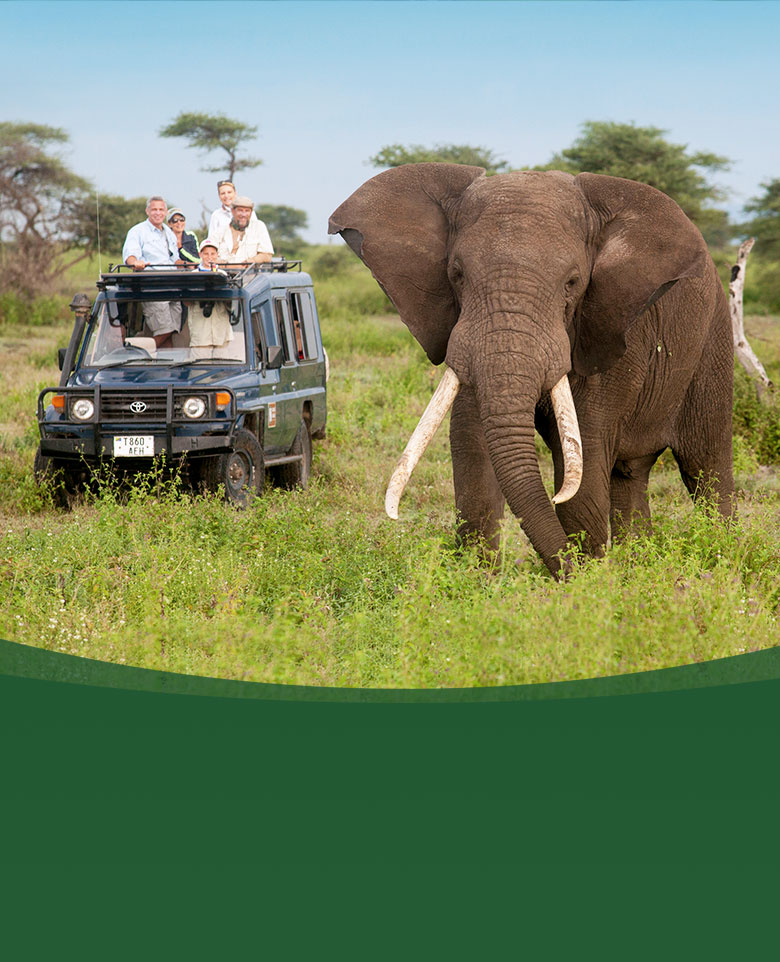
Come Travel with Us!
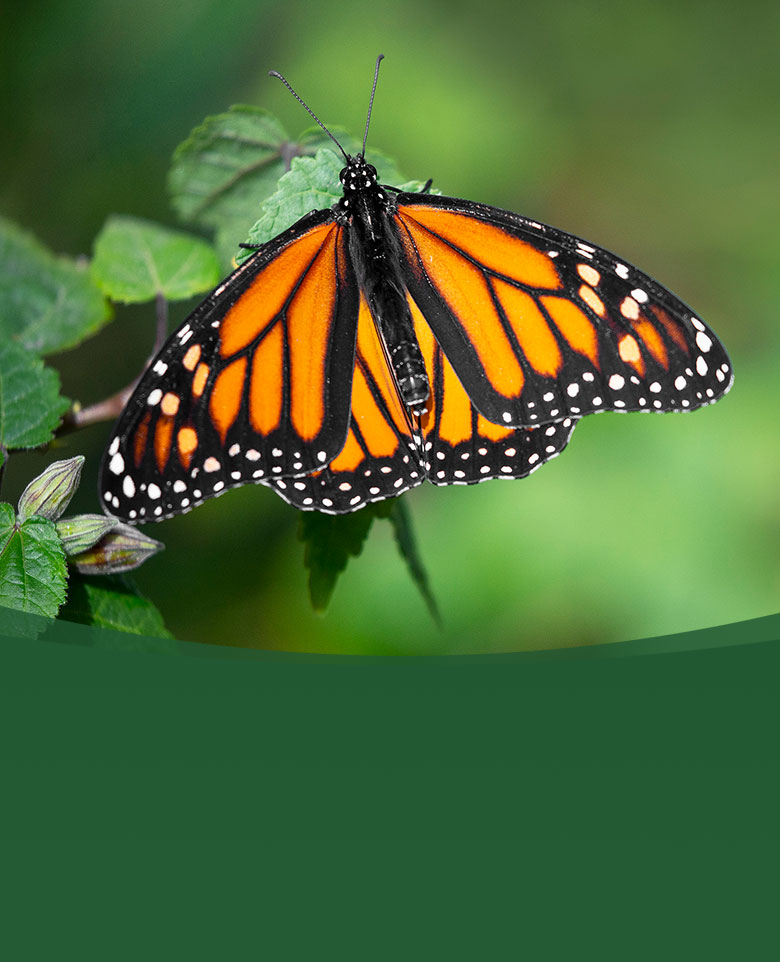
Travel with us to see Monarchs
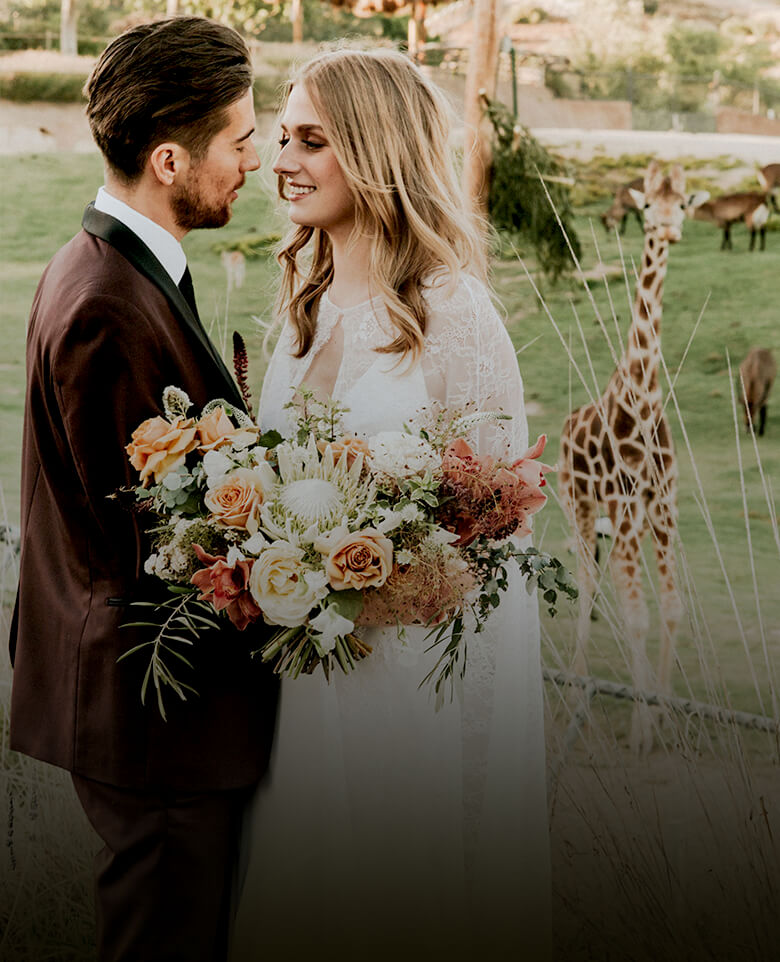
Picture Your Special Day at the Park!
15 Animals to See on an African Safari
:max_bytes(150000):strip_icc():format(webp)/DSC00412-5b73daf7c9e77c0057ca2198.jpg)
The word "Africa" is an evocative one that usually goes hand-in-hand with mental images of vast savanna plains dotted with exotic game. The majority of overseas visitors to Africa will go on safari and, in doing so, discover that there is nothing more magical than a close encounter with the continent's incredible wildlife. Most of the species one sees on safari are unique to Africa, and many of them are instantly recognizable. In this article, we look at 15 of the continent's most iconic animals, including those that make up the African Big Five .
TripSavvy / Felicia Martinez
To see a lion in its natural habitat is one of the most humbling, impressive sights an African safari can offer. However, while witnessing a kill is the ultimate prize, you're more likely to see one sleeping than in active pursuit of dinner. Lions spend up to 20 hours a day at rest and are most active at dusk and dawn. They are the most social of all wild cat species, living in prides consisting of between five and 10 adult lions. Tragically, lions are threatened by human expansion throughout Africa, with experts prophesying that populations could fall by as much as five percent in the next 20 years.
Best Places to See Lions: Head to Kgalagadi Transfrontier Park on the border of South Africa, Namibia, and Botswana; or to Tanzania's Serengeti National Park during the wildebeest migration.
There is nothing quite like the first time you see an African elephant in the wild. As the largest living terrestrial animal on Earth, their size alone is overwhelming; but many visitors also find themselves drawn by the elephants' tangible aura of wisdom. Elephants are found in various sub-Saharan habitats, including forests, deserts, and savanna. They are herbivorous, processing up to 600 pounds of vegetation per day. Although most elephants are peaceful by nature, they can be dangerous if provoked; however, they are far more at risk from humans than we are from them.
Best Places to See Elephants: Vast elephant herds roam Hwange National Park in Zimbabwe and Chobe National Park in Botswana.
As the tallest animal on Earth, you'd think that giraffes would be easy to spot on safari. However, their distinctive brown and white markings serve as excellent camouflage, and it's not unusual for giraffes to materialize out of the bush just a few feet away. There are nine subspecies found across sub-Saharan Africa, all of which boast blue tongues, stubby horn-like protrusions on their heads, and of course, outrageously long necks. To drink without losing consciousness, the giraffe's neck contains unique veins and valves that regulate the flow of blood to its head.
Best Places to See Giraffes: Spot large herds of Masai giraffe in the Serengeti, or head to Murchison Falls National Park in Uganda to see the endangered Rothschild's giraffe.
The elusive African leopard is a subspecies of leopard found only in sub-Saharan Africa. Despite its wide range, leopards are among the most difficult of all safari animals to see, as they are both nocturnal and exceptionally wary of humans. Leopards use trees as observation platforms and for protection, and that is where they are most often spotted during daylight hours. They are solitary animals with exceptional predatory skills, including the ability to climb, swim, and drag prey weighing up to three times their body weight up into the trees. Leopards are classified as vulnerable on the IUCN Red List.
Best Places to See Leopards: South Africa's Sabi Sands Game Reserve and South Luangwa National Park in Zambia are famous for leopard sightings.
White Rhino
Thomas Halle/ Getty Images
The easiest way to tell Africa's two rhino species apart is by the shape of their bottom lip: wide and square for white rhinos and pointed for black rhinos. The name "white" rhino comes from a mistranslation of the Dutch word for "wide." Although the survival of both species is threatened by widespread poaching, white rhinos are more numerous and therefore easier to spot, especially in Southern Africa, where they prefer grassland and savanna habitats. White rhinos are the largest of five extant rhino species. Adult males averaging around 5,100 pounds are also one of the world's heaviest land mammals.
Best Places to See White Rhinos: Hluhluwe–Imfolozi Park and Kruger National Park in South Africa offer a good chance of spotting white rhinos.
Black Rhino
Manuel ROMARIS/Getty Images
Once found across Southern and East Africa, the black rhino is now considered critically endangered, with fewer than 5,000 individuals left in the wild and three subspecies already classified as extinct. Adult black rhinos have no natural predators, and their population collapse is predominantly due to poaching. They are killed for their horns, made of keratin, and exported to Asia for use in traditional Chinese medicine. Unlike white rhinos, which can sometimes be seen living in herds, black rhinos are generally solitary (although the bond between mother and calf is strong). They favor thick scrub and bushland.
Best Places to See Black Rhinos: Etosha National Park in Namibia is a rhino conservation success story with a thriving black rhino population. Kenya's Ol Pejeta Conservancy is another renowned sanctuary for black rhinos.
TripSavvy / Jess Macdonald
The cheetah is the most slender of Africa's big cats, a magnificent animal known for its incredible speed. They are capable of short bursts of up to 70 miles per hour, making them the world's fastest land animal. However, cheetahs often have their kills stolen by other, more powerful predators despite their speed. They are a vulnerable species with only around 7,100 individuals left in the wild, including a tiny population of approximately 40 individuals in Iran. Cheetahs are found throughout Southern and East Africa in wide-open spaces that allow them to reach their top speed while pursuing prey.
Best Places to See Cheetahs: The Maasai Mara National Reserve provides the ideal habitat for cheetahs. Alternatively, track rehabilitated cheetah on foot at Okonjima Game Reserve in Namibia.
African buffalo have a robust build and distinctive fused horns. They are grazers, typically moving in herds, with no natural predators except lions and crocodiles. Unlike other species of wild buffalo, the African buffalo has never been successfully tamed, thanks to its naturally aggressive and unpredictable nature. Although seeing a buffalo herd ranging across the savanna is undoubtedly an unforgettable sight, it's crucial to treat these animals with respect. They are responsible for multiple human fatalities every year and are considered one of the continent's most dangerous species.
Best Places to See Buffalo: Katavi National Park in Tanzania is famous for its enormous buffalo herds. Chobe National Park is another good bet.
Hippopotamus
Hippos are a common sight in Southern and East Africa's rivers, swamps, and lakes. Often found in groups of up to 100 individuals, hippos spend most of their life in water, only leaving their aquatic homes to graze on the riverbanks at dusk. They have several fascinating adaptations, including webbed feet, large canine tusks, and the ability to secrete a kind of natural sunscreen. Male hippos are territorial and, like buffalo, can be exceptionally aggressive when provoked. Similarly, take care never to get between a hippo mother and her calf.
Best Places to See Hippos: Zambia's Luangwa Valley is home to the world's largest concentration of hippos. The Okavango Delta in Botswana is also full of them.
Nile Crocodile
After the saltwater crocodile, Nile crocodiles are the world's largest living reptile, with the biggest on record exceeding 20 feet in length. In sub-Saharan Africa, they are found in various aquatic habitats, including lakes, rivers, and deltas. Crocodiles are well camouflaged in the water and are most often spotted sunning themselves on the riverbank. They have been around for millions of years, and with heavily armored skin and powerful jaws, they certainly look prehistoric. Nile crocodiles are perfect predators, employing ambush tactics to take their prey unawares.
Best Place to See Crocodiles: Watch herds of wildebeest and zebra crossing the Mara River during East Africa's annual migration to see Nile crocodiles in action.
There are three species of zebra in Africa; the plains zebra most commonly seen throughout East and Southern Africa , and the rarer mountain and Grévy's zebras. Although they may look like domestic horses, zebras are almost impossible to tame; their distinctive stripe patterns are unique to each individual as a human's fingerprints. Zebras live on grass, and in some areas, form great migratory herds to seek out the best grazing grounds. They often create a mutually beneficial relationship with another African species during the migration, the wildebeest .
Best Places to See Zebra: For sheer numbers, you can't beat the Serengeti or the Maasai Mara during migration season. To see the endangered Grévy's zebra, head to Lewa Wildlife Conservancy in northern Kenya.
Thomas Retterath/Getty Images
Easily recognizable by their tan, black, and white fur, African wild dogs are the largest (and one of the rarest) canids in Africa. They are highly social animals, living in packs led by an alpha male and female and communicating with a series of high-pitched twittering sounds. Wild dogs hunt as a team, chasing their prey until it collapses from exhaustion. Unlike other social carnivores, weaned pups are allowed to eat first at the kill to give them the best chance of survival. Nevertheless, African wild dogs are endangered, with populations declining due to habitat fragmentation, human conflict, and diseases spread by domestic dogs.
Best Places to See Wild Dogs: Top destinations for spotting wild dogs include Ruaha National Park in Tanzania, Madikwe Game Reserve in South Africa, and Hwange National Park in Zimbabwe.
The most common large carnivore on the African continent, the Hyaenidae family comprises four species of hyena: spotted, brown, striped, and aardwolf. Though their mighty jaws and strong digestive tract are ideally suited for scavenging, hyenas only feed on carrion and other refuse for 30 percent of their meals; for the other 70 percent, they prey on animals of all different sizes and shapes, including wildebeest, antelope, birds, and snakes. Hyena clans can consist of up to 100 members, and individuals will communicate with each other through wailing, screaming, and "laughing." Hyenas (particularly spotted) live in a range of habitats throughout sub-Saharan Africa, from savannas and grasslands to subdeserts and mountains.
Best Places to See Hyena: You can find hyenas in many national parks in Africa, including Hwange National Park in Zimbabwe, Namibia's Cape Cross Seal Reserve , and Ruaha National Park in Tanzania. For your best chance at seeing them, plan to sign up for a night safari.
This antelope species can be subdivided into the greater kudu and the lesser kudu subspecies, both of which can be identified by their white vertical stripes, spots, and chevron pattern between their eyes. Greater kudus are most prevalent throughout southern Africa's lowland Bushveld but can also be found throughout East Africa—particularly Kenya and the Horn of Africa region; similarly, lesser kudus tend to prefer the dense thornbush around East Africa. Males, characterized by elongated horns that can grow up to 6 feet in length, can typically be seen alone or with other bachelors, though you may find them with females during mating season. On the other hand, female kudus live in small herds with their offspring.
Best Places to See Kudu: Greater kudus are best seen in Kenya's Tsavo National Park and Serengeti National Park in Tanzania.
Warthogs thrive in savanna woodland, grasslands, and marshes, taking up natural burrows and abandoned aardvark holes. With the use of their strong neck muscles and padded knees, warthogs will spend the day foraging for food, digging through soil to uncover tubers, roots, berries, and grass. Sows can be found in matriarchal groups comprising up to 40 female warthogs and piglets, while boars prefer to live alone or with other bachelors.
Best Places to See Warthog: Warthogs live all over sub-Saharan Africa but are most common in the eastern and southern parts of the continent. If you want to spot them on safari, consider planning a trip to Kruger National Park , Masai Mara , or South Luangwa National Park in Zambia.
The Top 5 Places to See Leopards in Africa
Fun Facts About African Animals: The Cheetah
Serengeti National Park, Tanzania: The Complete Guide
Akagera National Park, Rwanda: The Complete Guide
Top 10 Unmissable African Safari Destinations
Okavango Delta, Botswana: The Complete Guide
An Introduction to Africa's Big Five Safari Animals
The Top 12 National Parks to Visit in Africa
13 Amazing Trips to Take Before You Turn 40
Best Places to Visit in Tanzania
10 Destinations to Top Your Africa Bucket List
10 of the Best Places to Visit in Botswana
The Ultimate Guide to Choosing the Right Safari for You
How to Experience the Great Migration in Kenya and Tanzania
Fun Facts About Africa's Baby Safari Animals
The 18 Best Things to Do in Tanzania
Lion Itineraries
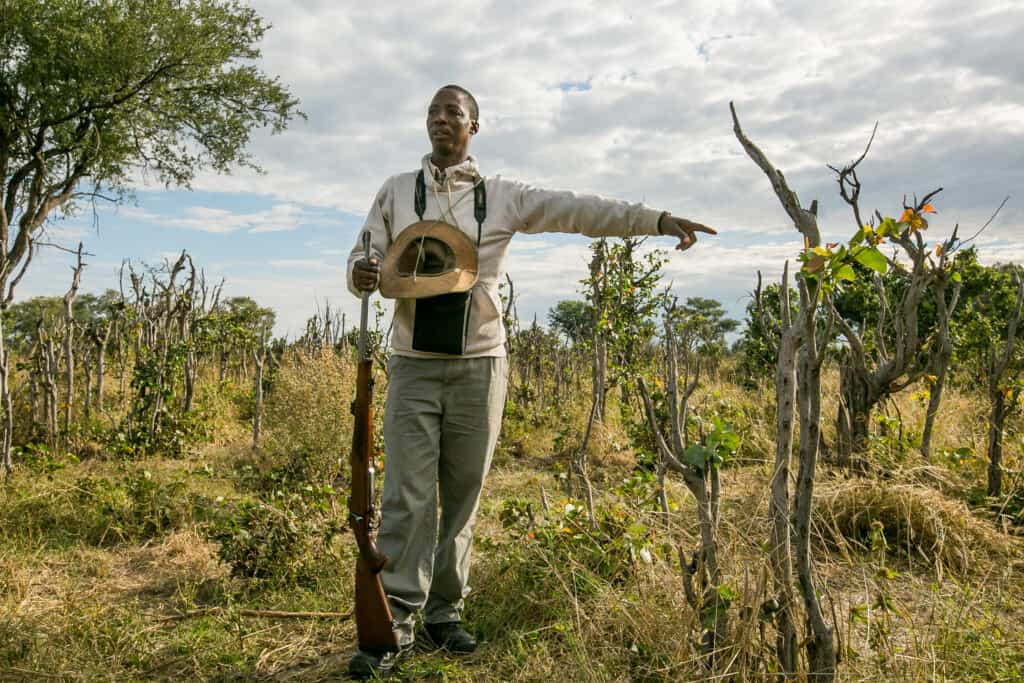
Bushman’s Botswana
Return to the origins of humanity as you head deep into the heart of Botswana and the world-famous Okavango Delta and Kalahari Desert. Experience the Old Way of the Bushmen - the indigenous people of southern Africa.
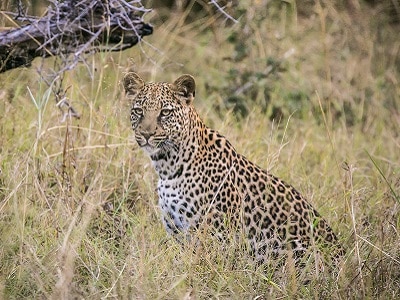
Into the Botswana Wild with Victoria Falls
Experience the best of Northern Botswana in the Okavango Delta, Kwando Concession and Chobe River, plus the majestic "smoke that thunders" in Victoria Falls.
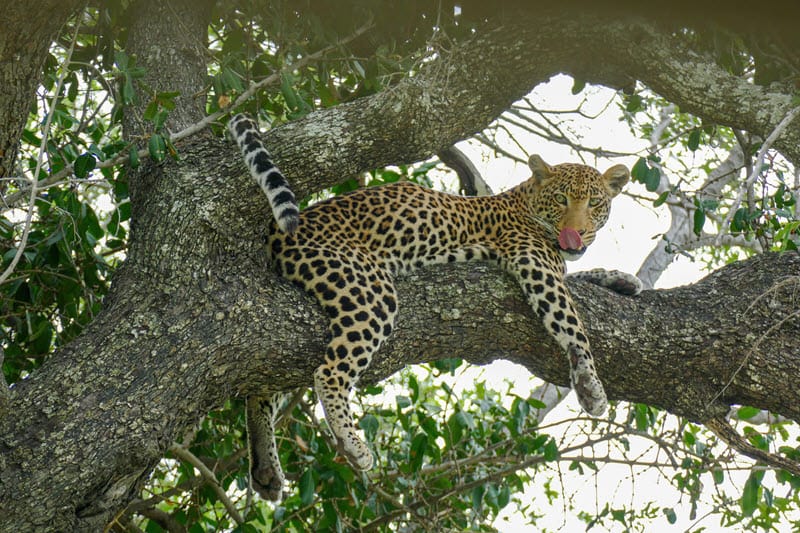
Epic Mara: Big Cats in Focus
This safari is designed with serious photographers and/or wildlife aficionados in mind. We combine all the essential elements for remarkable wildlife viewing and photographic opportunities. The location is the renowned Masai Mara, unsurpassed for prolific wildlife viewing. The guiding is on the legendary level, utilizing one of our 3 Kenyan guide team who are recognized among the most accomplished in Africa.
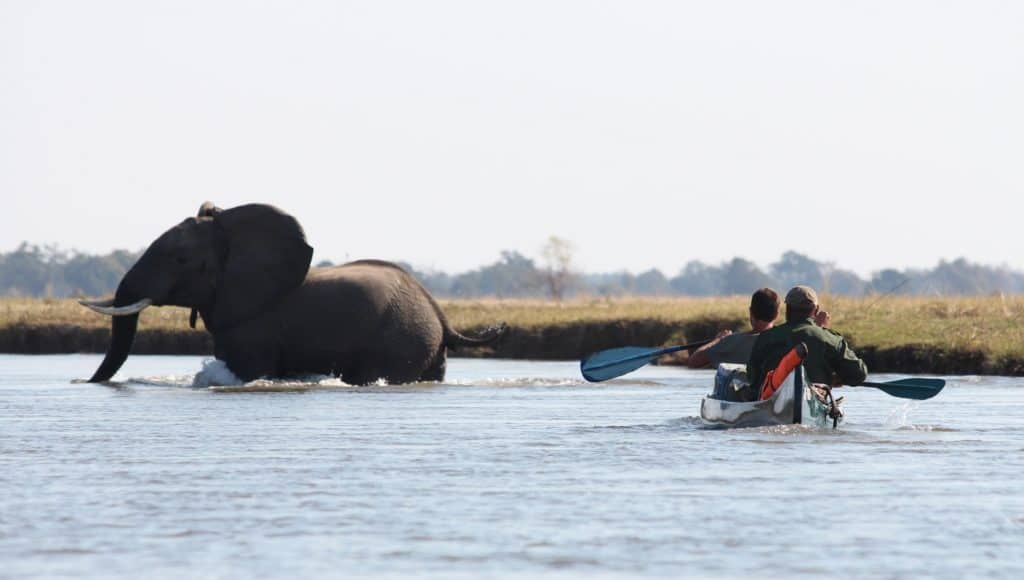
Intrepid Zimbabwe Explorer: Victoria Falls, Hwange and Canoeing Mana Pools (Origins Collection)
Step back in time to the era of exploration with our Intrepid Zimbabwe Explorers itinerary, customized for remote adventure in some of the most pristine wilderness on Earth.
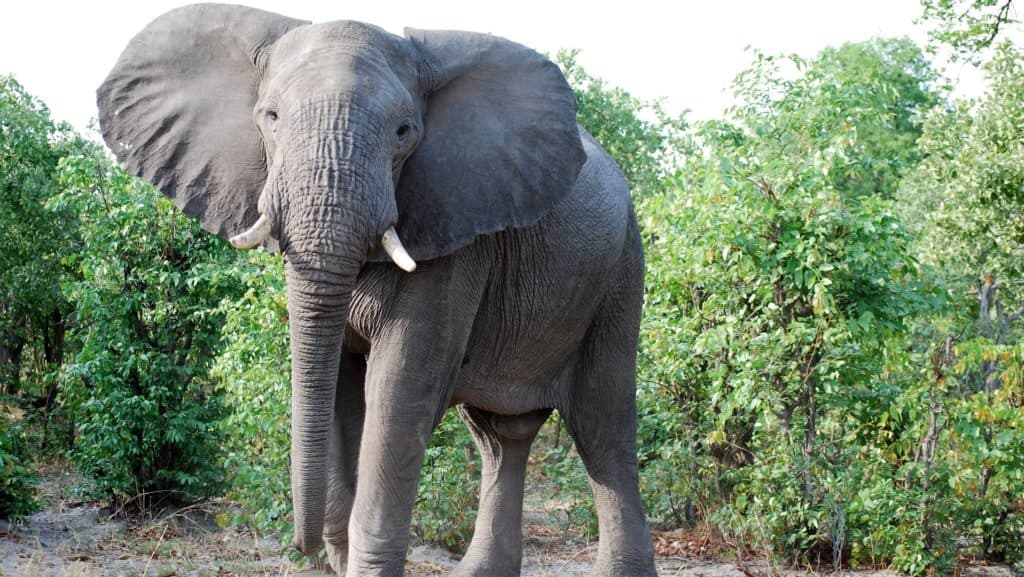
Big Five of Southern Africa
Southern Africa is an incredibly diverse region with varying weather, landscapes, cultures, and wildlife. This itinerary covers three major highlights of Southern Africa: The Greater Kruger National Park, Victoria Falls and the Okavango Delta.
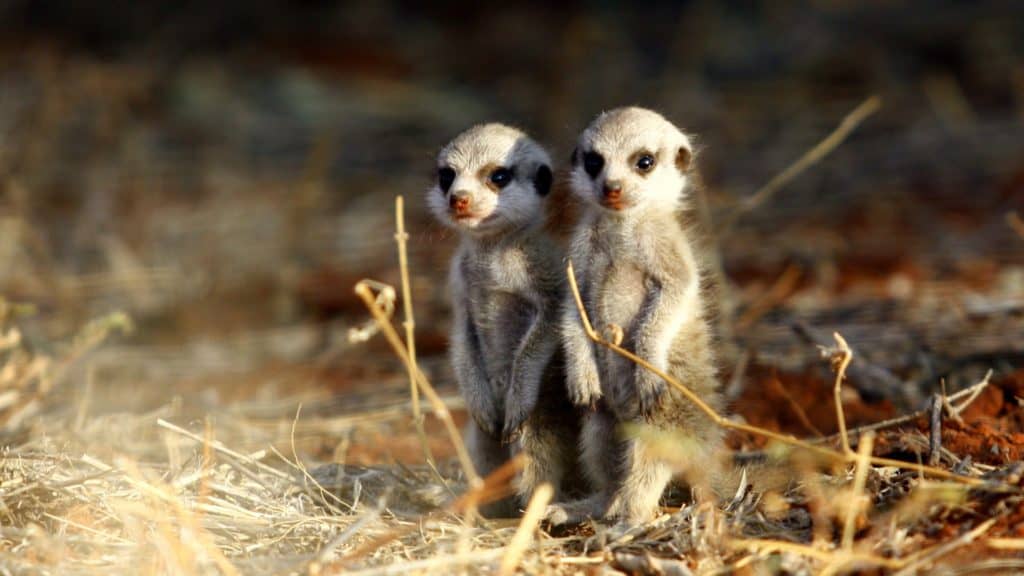
Essential Diversity: River and Desert
This safari is designed for the safari connoisseur seeking rarity, exclusivity and luxury along with the full diversity of wildlife. The itinerary includes private guiding and vehicle at both safari camps, offering the ultimate in flexibility and maximizing the opportunities to see wildlife you want to see, while maintaining supreme comfort and luxury.
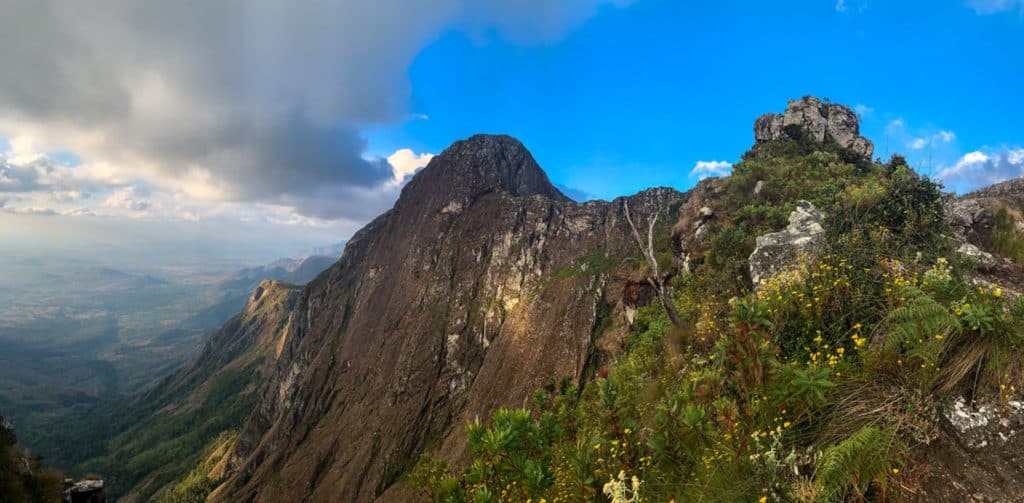
Malawi Expedition: Trekking Mt. Mulanje and Liwonde Safari with optional Lake Malawi Finale (Origins Collection)
Our Malawi Expedition combines an incredible hut-to-hut alpine trekking experience, outstanding scenery, wildlife viewing in a premiere national park, and the optional finale of swimming, snorkeling and kayaking off your private island camp in Lake Malawi.
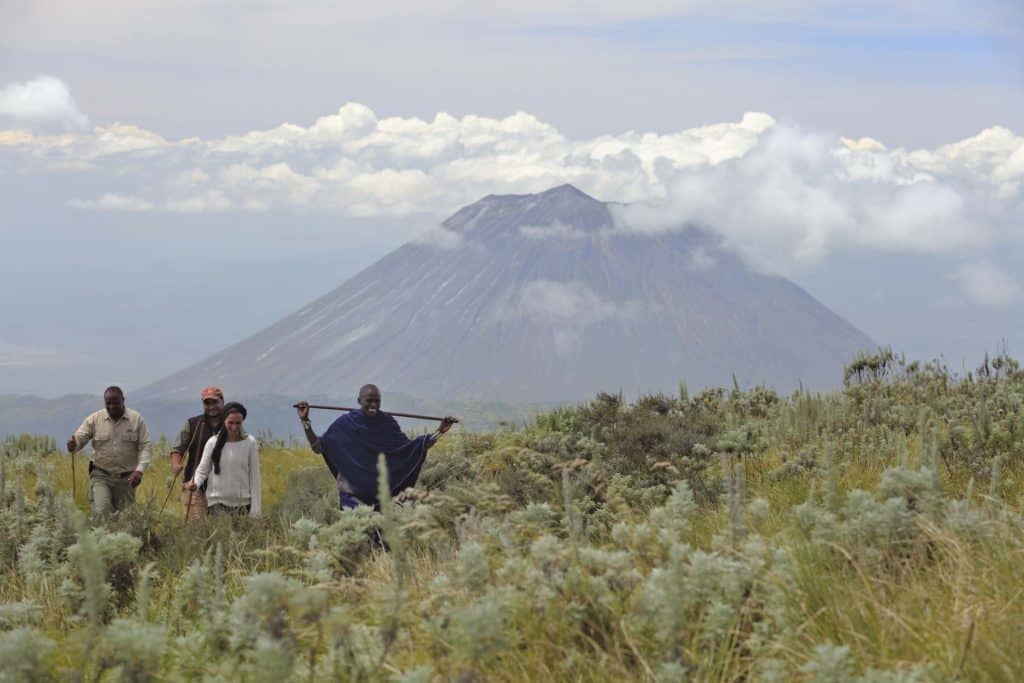
Wonders of the Crater and Trek to Lake Natron with optional Serengeti Biologist Finale (Origins Collection)
Our Tanzania Trekking and Wonders of the Ngorongoro adventure is the very epitome of getting off the beaten track. This adventure takes you on foot through the volcanic landscapes of northern Tanzania, traveling through areas that are impossible to reach by road.
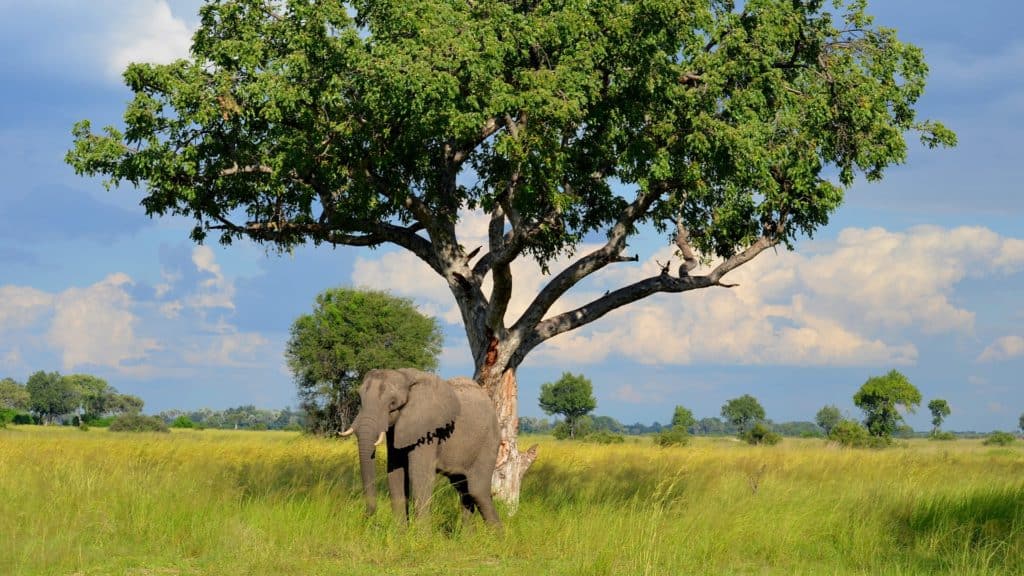
Botswana Elephant Safari
This elephant-focused safari takes you to some of the best locations in all of Africa for seeing and interacting with elephants.
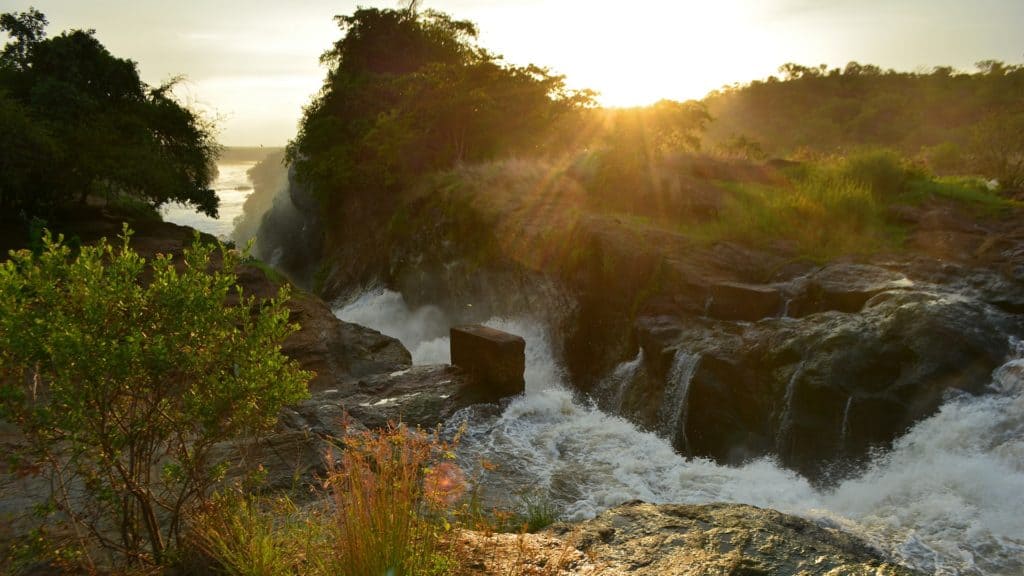
Ultimate Uganda
This safari has been custom designed to provide an in-depth adventure in Uganda featuring some of the most intimate and immersive experiences on the continent – primate trekking.
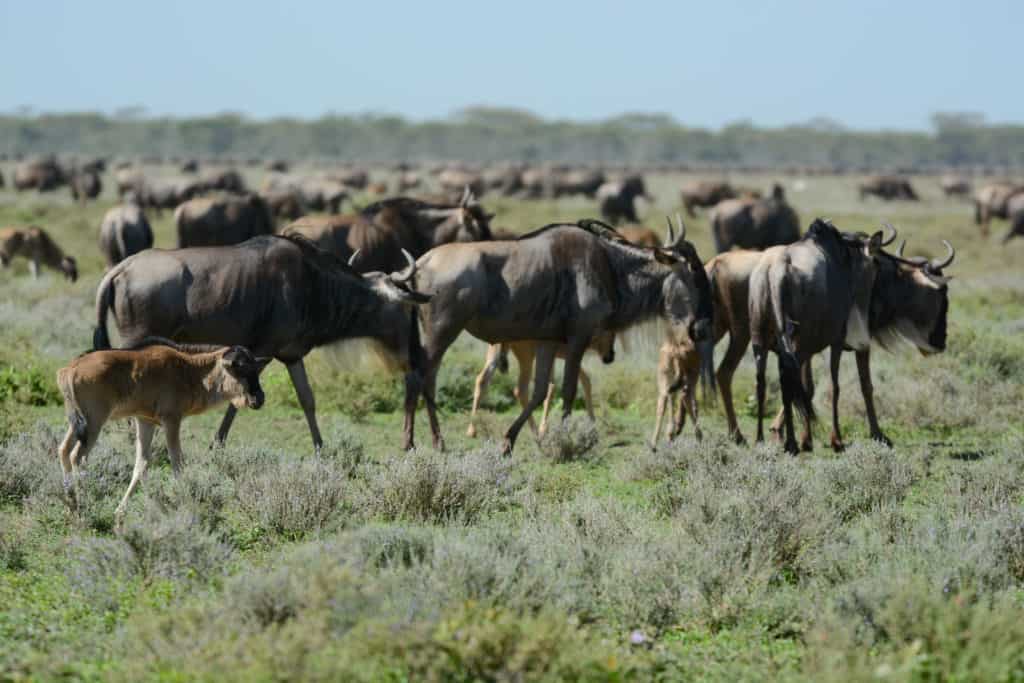
Big Cats & The Great Migration (Calving Season) – Group Trip 2024 (FULL)
The ultimate small group Serengeti adventure with elite biologist guide team, Fadhil Magoye and David Maira. Explore three distinct areas of the Serengeti ecosystem including Ndutu for the Great Migration Calving Season and the world's best cheetah viewing, the Central Serengeti's remote eastern plains and the Northern Serengeti which is incredibly exclusive at this time of year (perhaps the best kept safari secret)! Your guides have an unrivaled passion for the wilds of Tanzania, and the skills and knowledge to match. The knowledge of big cats and overall wildlife behavior between these guides is astounding and they are ready to share it all with their guests on this safari. The group size is guaranteed to be small, with a minimum of 2 and a maximum of just 8 guests.

South African Splendor: Cape Town and Sabi Sands Safari
Southern Africa is an incredibly diverse region with varying weather, landscapes, cultures, and wildlife.
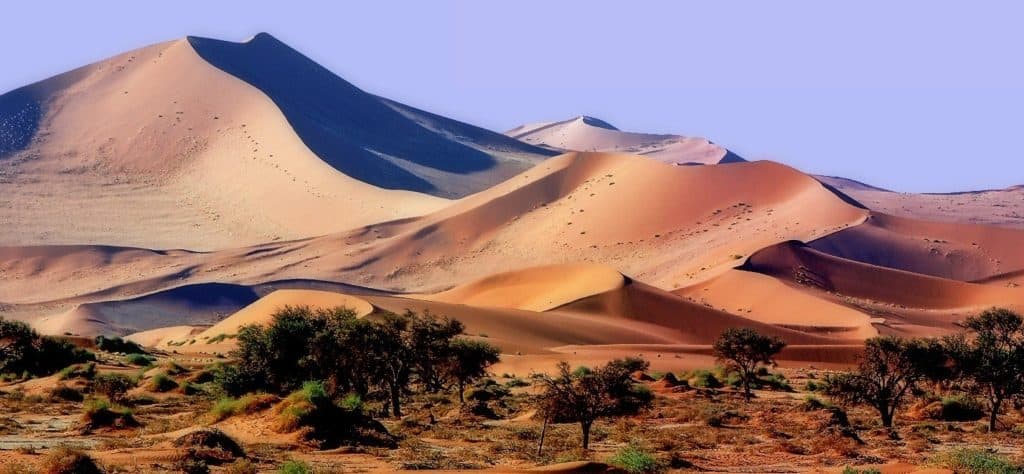
Deserts of Namibia
Experience magnificent and vast landscapes and desert-adapted wildlife of Namibia in a personal way.
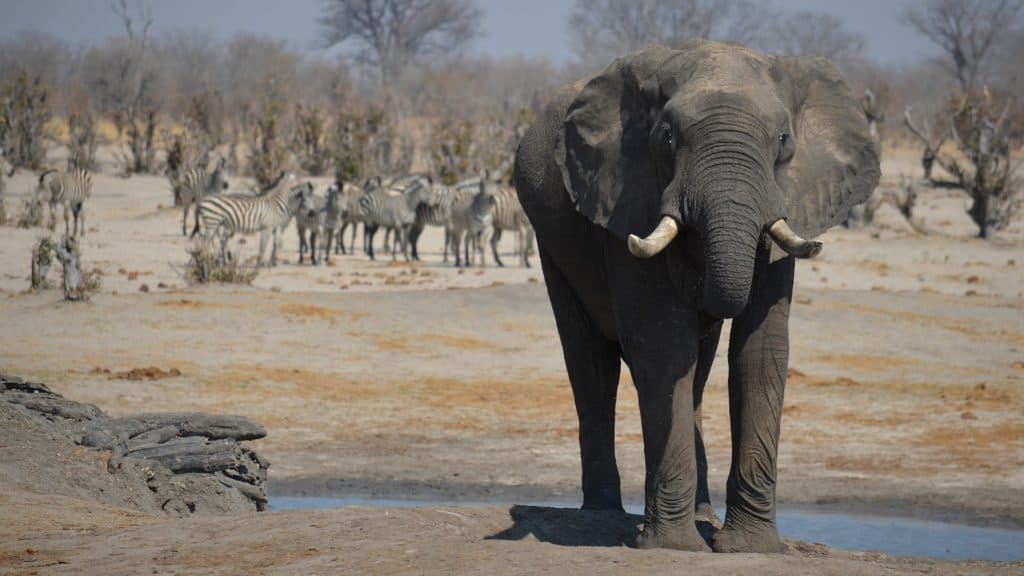
Classic Zimbabwe: Hwange and Mana Pools with Victoria Falls
This adventure-level safari features classic bush camps, thrilling walking safaris, and an excellent value.
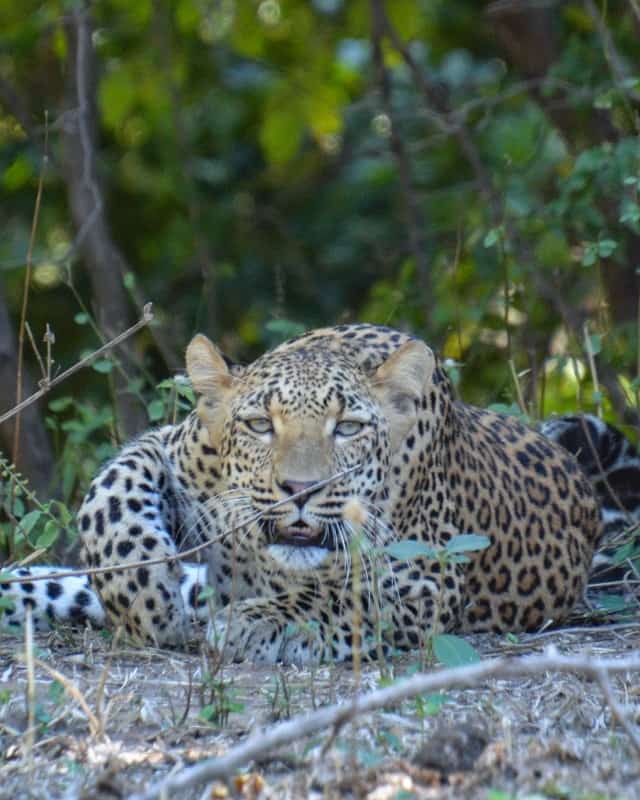
Zambia Walking and Waterways Safari
Zambian safaris are distinguished by the vintage expedition-style adventure delivered under the care of exceptional guides in remote wilderness areas teeming with wildlife.
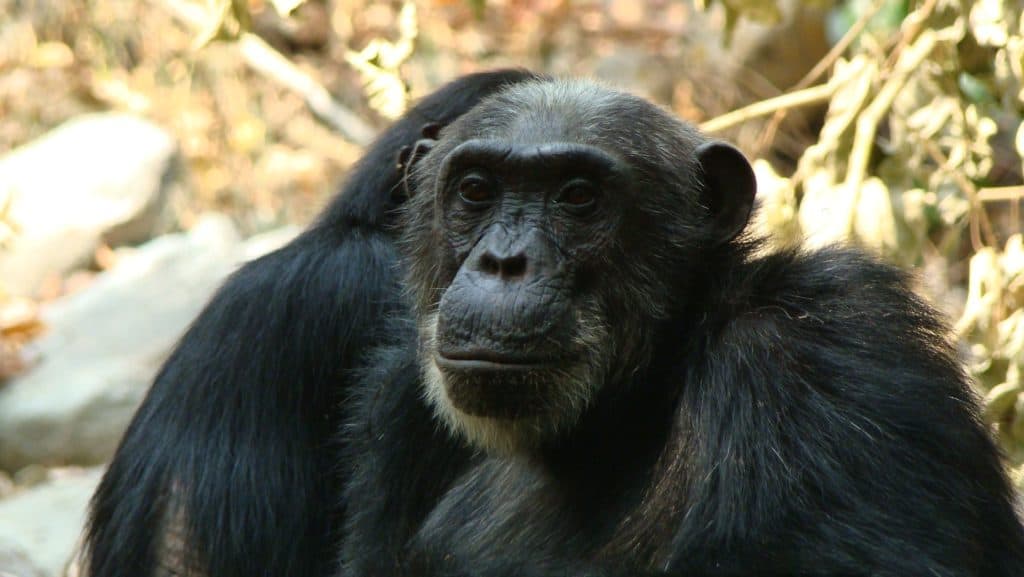
Tanzania Frontier
This safari is the ultimate trip for those who truly want to get away from it all, exploring some of Tanzania's less-visited gems.
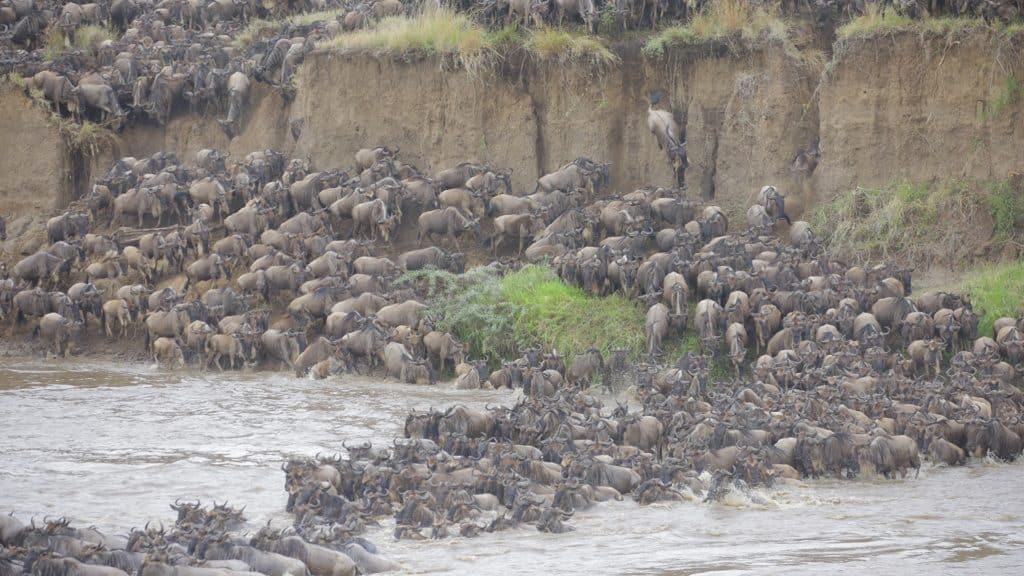
Quintessential Tanzania: River Crossing Season
With the Great Migration of nearly 2 million animals in the area, the Northern Serengeti is the stage for one of nature's most famed events - the dramatic migration crossings of the Mara River.
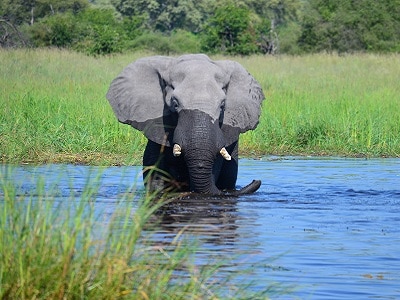
Botswana Desert and Delta Safari: Outstanding Value, Top Wildlife and Diverse Landscapes
This safari is customized to take advantage of the best opportunities for the green season in Botswana to observe diverse wildlife.
Lion Videos

Best Places to see Lions on Safari
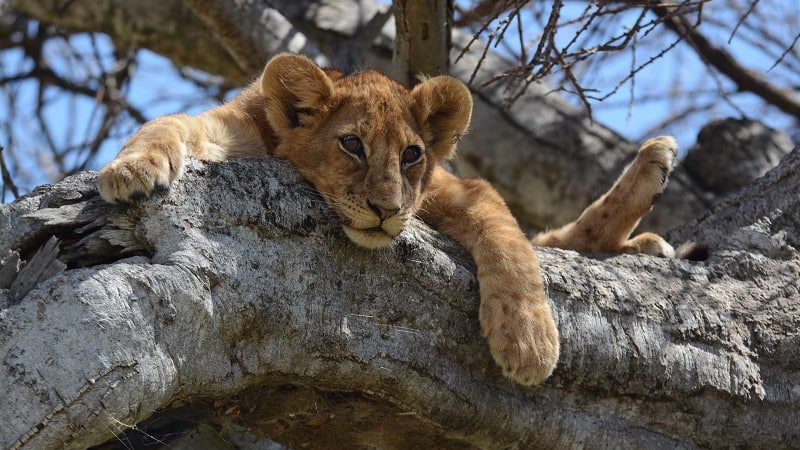
Other Areas of Note
Something extra, learn about other wildlife.
- African Wild Dog
- Cape Buffalo
- Hippopotamus
- Meerkats (Suricates)
A member of the “Big 5” and perhaps Africa’s most iconic species, the African Lion is a highly sought after sighting while out on safari.
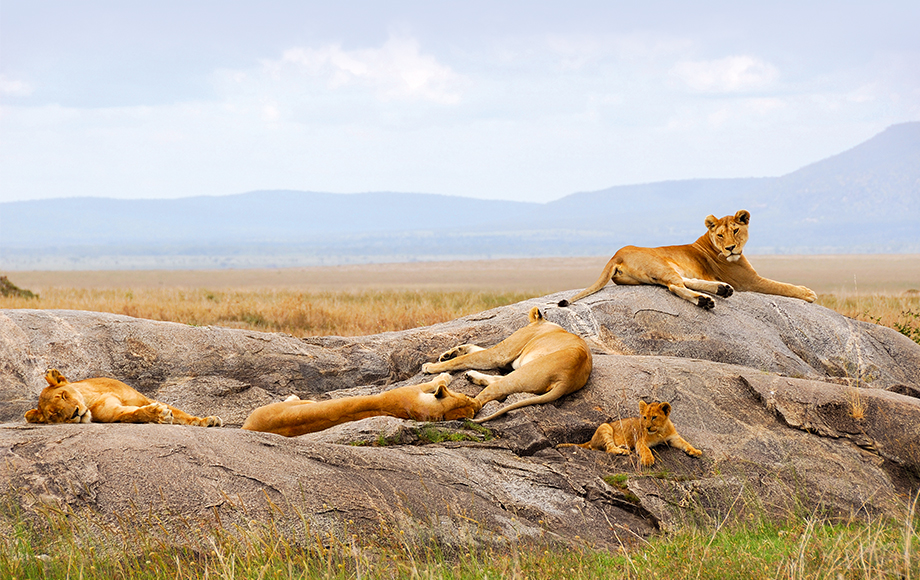
Common Name – African Lion
Scientific Name – Panthera Leo
Current IUCN Red List Status – VU
Estimated no. of mature individuals – 23,000 -39,000
Lions are capable of living in a wide variety of habitats and are found across parts of sub-Saharan Africa (mostly Southern and Eastern Africa). Lions generally stick to areas such as grasslands, shrubs and open woodland – however a small number have adapted over generations to thrive in the harsh Namib Desert in Namibia.
The only cats that live in groups – known as prides – lion prides can comprise up to 40 individuals. Though rare to see prides of this size, it is possible. More often than not, prides sizes vary between 8-25 individuals. Most of the hunting is done by female lions working as a team, and who will hunt anything from small antelope to buffalo. Some lion prides have been known to specialise in hunting even larger prey including elephant and giraffe. Males will often only help at the last moment or to bring down large prey – sometimes they run in only when the hunt is over taking the biggest share!
Lion viewing Safaris
Most lion viewing across Africa is done by vehicle on morning and afternoon game drives. It’s a thrilling experience coming face-to-face with a lion in the wild and many guests find a lion encounter to be a major highlight of an African safari. The cats may even use the vehicle as spot for shade, and guides can often find their vehicle surrounded by a handful of lions hiding from the sun.
Lions are fascinating to watch, particularly the dynamic within the pride and many safari-goers will happily watch for hours as the lions hunt or play. Playful cubs interact with one another under the watchful eye of their mothers and sometimes, the cheeky cubs might antagonise a big grumpy male.
Walking safaris offer the chance to see smaller creatures and learn more about native plants, but on occasion there is a chance to see lions – and from a very different perspective. To walk in Africa is to be a part of Africa, leaving nothing but footprints behind. Zimbabwe’s Hwange and Mana Pools national parks along with Zambia’s South Luangwa National Park are some of the best places in Africa to experience a multi-day walking safari reminiscent of a by-gone era. Both offer a truly unique experience while walking amongst Africa’s big game creates live long memories others can only dream of.
Best safaris to see lion
Timeless deserts & namib wildlife.
Discover the silent beauty of Sossusvlei, track Africa's last free-roaming rhino in Palmwag and go on safari in Etosha, Namibia's finest wildlife reserve.
Tanzania’s Northern Treasures
Experience three of Tanzania’s best known national parks and the country’s epic wildlife in Tarangire, Ngorongoro Crater and the celebrated Serengeti.
Inspiring Sights of Kenya
This superb safari incorporates the popular Giraffe Manor in Nairobi and 3 luxury camps situated in sensational gameviewing areas throughout Kenya.
Best of Zimbabwe
This safari explores three of Zimbabwe's greatest highlights: Hwange National Park, breathtaking Mana Pools National Park and Victoria Falls.
Exclusive Botswana
Take in the best of Botswana on this 12 day exclusive safari, travelling from the Makgadikgadi Pans through the Linyanti into the Okavango Delta.
Relais & Chateaux Kenya Safari
This outstanding Kenyan safari incorporates 2 Relais and Châteaux status safari camps with iconic Giraffe Manor.
Kruger and The Cape
Discover some of South Africa's best known attractions on this journey that begins with a big game safari in the world-renowned Sabi Sand and concludes in beautiful Cape Town.
Recommended places to see Lion
Namiri plains.
Situated in a little-visited, remarkably unspoilt corner of the Serengeti, Namiri Plains is where you’ll find some of East Africa’s best big cat sightings, from lion and leopard to cheetah.
Duba Plains Camp
Duba Plains Camp is an extravagant luxury safari camp set in a private concession in the Okavango Delta dubbed "Botswana's Masai Mara" for sheer density of wildlife.
Singita Lebombo Lodge
Perched high above Kruger National Park’s N’Wanetsi River, Singita Lebombo Lodge offers exceptional opportunities for intimate wildlife encounters.
Ruckomechi Camp
Set on the banks of the mighty Zambezi River, Ruckomechi Camp has been a favourite with visitors to the breathtaking Mana Pools National Park for many years.
What is a male lion coalition?
Coalitions are normally made up of 2-4 male lions (usually brothers or half-brothers) who hunt and fight off threats as a team. The more males working together, the stronger they are. It’s easier to keep control of a territory or fight an intruder if they work together.
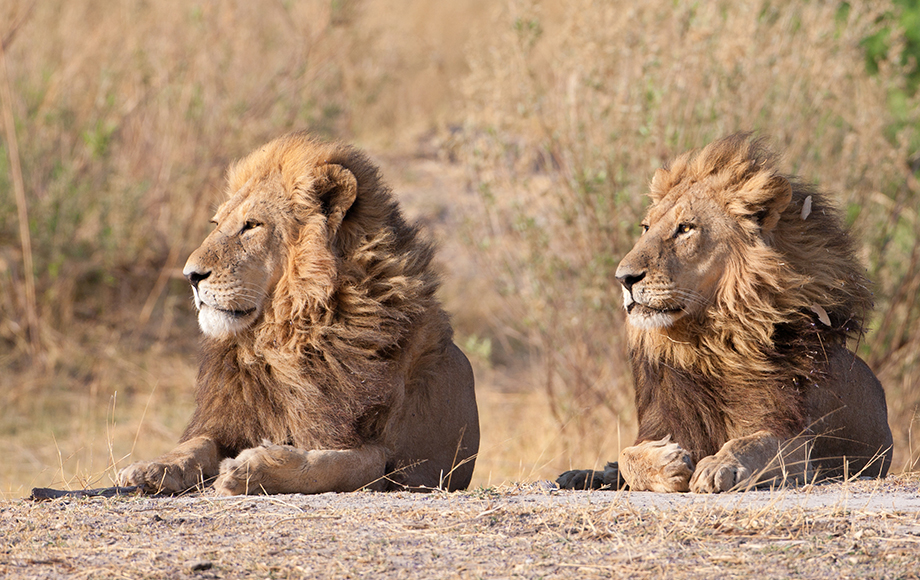
When is the best time to see lions?
Like most other animals, the best time to see these cats is during the early morning and late afternoon when they are most active. During the day, lions will often find a shady spot to avoid the heat and conserve energy.
African Lion Facts:
Sleepy cats A lion can sleep for up to 20 hours in a single day.
Hear me roar Depending on the wind direction, you can hear a lion roar from up to 7 or 8 kilometres away.
Big appetites Like other cats, lions may not know when their next meal might come from, meaning that they will consume food at an extraordinarily fast rate. This also helps to explain why they need to sleep for so long, to enable digestion.
Night vision A lion’s night vision is up to 6 times more sensitive to light than humans.
Weight Male lions are much larger than females and can weigh as much as 190 kilograms (420 pounds)Desert-adapted Lions – Also known as ‘desert lions’ these lions can live without water for extended periods. To cover long distances over the hot desert sand their legs tend to be slightly longer than ‘regular lions’, whilst their coats are slightly thicker to combat the cold temperatures at night. The best place to see these lions is in Northern Namibia.
Find out more about our tailor made African safaris. Get in touch with one of our Destination Specialists.
Subscribe below to keep up to date, find out more about our tailor made african safaris, more wildlife.
The Cape buffalo is a member of Africa’s “Big 5” and therefore a must-see for any safari-goer.
Cape Buffalo
The Cheetah is the fastest land animal on the planet and one of Africa’s most well-known and sought-after sightings when on safari
African elephants are the world’s largest land mammal and were once numerous, roaming across the whole African continent.
With their unique and beautiful colouring, giraffes are one of Africa’s most recognised animals.
Grizzly bear or grizzly is the name given to the subspecies of brown bear that inhabits North America.
Grizzly Bear
The largest cat in the Western Hemisphere, jaguars are strongly built, well-muscled predators native to the Americas
King Penguins don’t actually live on the Antarctic ice shelf, instead they prefer the sandy snowless beaches of the Sub-Antarctic islands.
King Penguin
Lemurs are endemic to the island nation of Madagascar where 107 species can be found. However each individual species is often only found in a
Leopards are graceful cats and still geographically wide-spread across Africa, including isolated parts of Morocco and Egypt.
Meerkats are found in Southern Africa and they are often seen standing on their rear legs, forever gazing out over the sweeping plains.
Orcas, informally referred to as killer whales because of their fearsome reputation, are majestic mammals.
Polar bears are found in the Arctic regions of Canada & Europe. The majority of their population are found in Canada, particularly around the
Impressively large and with horns for a nose, these prehistoric looking creatures are one of the most iconic African animals.
E-Newsletter
Sign up to receive updates about exciting journeys, special offers and more
African lion
African lions are revered the world over, but their population has shrunk in half over the past 25 years. Conflict with humans is one of the greatest threats they face.
What is the African lion?
African lions have been admired throughout history for as symbols of courage and strength. These iconic animals have powerful bodies—in the cat family, they’re second in size only to tigers—and roars that can be heard from five miles away . An adult lion’s coat is yellow-gold, and juveniles have some light spots that disappear with age. Only male lions typically boast manes, the impressive fringe of long hair that encircles their heads.
African lions once roamed most of Africa and parts of Asia and Europe. But the species has disappeared from 94 percent of its historic range and can only be found today in parts of sub-Saharan Africa. These lions mainly stick to the grasslands, scrub, or open woodlands where they can more easily hunt their prey, but they can live in most habitats aside from tropical rainforests and deserts.
Asiatic lions ( Panthera leo persica) are a subspecies of African lion, but only one very small population survives in India's Gir Forest.
Lion prides and hunting
Lions are the only cats that live in groups, which are called prides—though there is one population of solitary lions . Prides are family units that may comprise anywhere from two to 40 lions—including up to to three or four males, a dozen or so females, and their young. All of a pride's lionesses are related, and female cubs typically stay with the group as they age. Young males eventually leave and establish their own prides by taking over a group headed by another male.
Males defend the pride's territory, marking the area with urine, roaring menacingly to warn intruders, and chasing off animals that encroach on their turf.
Female lions are the pride's primary hunters and leaders . They often work together to prey upon antelopes, zebras, wildebeest, and other large animals of the open grasslands. Many of these animals are faster than lions, so teamwork pays off. Female lions also raise their cubs communally.
After the hunt, the group effort often degenerates to squabbling over the sharing of the kill, with cubs at the bottom of the pecking order. Young lions do not help to hunt until they are about a year old. Lions will hunt alone if the opportunity presents itself, and they also steal kills from hyenas or wild dogs .
Threats to survival
Today, there are only half as many African lions than there were 25 years ago. The International Union for the Conservation of Nature (IUCN) estimates that fewer than 25,000 lions remain in Africa, which is why the organization classifies them as vulnerable to extinction.
African lions face a variety of threats —most of which can be attributed to humans. Fearing that lions will prey on their livestock, which can be a significant financial blow, ranchers may kill the animals both in retaliation and as a preventative measure, sometimes using pesticides as poison . Poachers target the species, too, as their bones and other body parts are valuable in the illegal wildlife trade.
The role trophy hunting plays is controversial . Mismanaged hunting in the past has caused lions to disappear from some habitats, while hunters and those involved in the industry say hunting fees generate money for lion conservation. National Geographic Explorer Craig Packer , however, has said the amount generated by hunting is so "underwhelming…[that] it’s no wonder that despite years of lion hunting being allowed in [some] countries, the lion population has plummeted."
Further fueling this conflict between lions and humans is the loss of prey across the species’ range. African lions prey on large herbivores, a population that’s being hunted for an increasingly commercial bushmeat trade. The IUCN estimates these populations have declined by as much as 52 percent in East Africa and 85 percent in West Africa. With less food available in the wild, lions may be more likely to turn to hunting domesticated animals like livestock.
Conservation
Helping humans learn how to live with lions is key to ensuring their survival. Conservation organizations are working to change attitudes toward lions through compensation initiatives . Some of these models offer communities financial rewards when their local lion populations rise, while others pay farmers to replace their livestock that have been killed by lions.
Other conservationists have focused on creating protected areas for lions. In Botswana’s Selinda area, only a single lioness and her cub lived there when filmmakers Dereck and Beverly Joubert, both National Geographic Explorers, turned the land into a protected reserve and photographic tourism camp. Now about a hundred lions roam the reserve.
In Mozambique’s Zambezi Delta, where the effects of a protracted civil war caused lion numbers to plummet, the largest-ever lion translocation project brought in 24 lions from South Africa in 2018—they’re now settled in and starting to have cubs.
- Environment
- Perpetual Planet
- History & Culture
History & Culture
- History Magazine
- Mind, Body, Wonder
- Paid Content
- Terms of Use
- Privacy Policy
- Your US State Privacy Rights
- Children's Online Privacy Policy
- Interest-Based Ads
- About Nielsen Measurement
- Do Not Sell or Share My Personal Information
- Nat Geo Home
- Attend a Live Event
- Book a Trip
- Inspire Your Kids
- Shop Nat Geo
- Visit the D.C. Museum
- Learn About Our Impact
- Support Our Mission
- Advertise With Us
- Customer Service
- Renew Subscription
- Manage Your Subscription
- Work at Nat Geo
- Sign Up for Our Newsletters
- Contribute to Protect the Planet
Copyright © 1996-2015 National Geographic Society Copyright © 2015-2024 National Geographic Partners, LLC. All rights reserved
Your browser is not supported for this experience. We recommend using Chrome, Firefox, Edge, or Safari.

Find Your Favorite Beach

Atlantic Coast

Beach Camping

Family-Friendly
Places to stay.

Campgrounds

Travel Ideas

Accessible Travel

Eco-Friendly Travel

African American Heritage Travel
More Travel Ideas
Popular links.

Florida Webcams

Toll Roads Info

Travel Guides
How to have a roaring good time at lion country safari near west palm beach.

Lion Country Safari, America’s first drive-through wildlife preserve, offers the rare chance to get up close with wild creatures.
- - Lion Country Safari
By Lauren Tjaden and Vanessa Caceres
Just west of Palm Beach , you’ll find Lion Country Safari , America’s first drive-through wildlife preserve. Open since 1967, it offers the rare chance to get up close with wild lions. But it offers a whole lot more, too—rides, attractions, animal encounters and other adventures.
Here’s your guide for how to enjoy Lion Country Safari...
Be part of the herd
There’s something about cages and bars. Or more to the point, the lack of them.
It feels good to watch zebras -- so close you can see their muzzles tremble as they munch grass – roaming in herds, just like they would in the wild. Or to spot the King of the Jungle, a lion, all eight feet of him, taking his version of a cat nap in the sun.
The thrill level changes, too. You’ll notice this when a rhino, stout as a tank, clatters across the road right in front of you. I guarantee goosebumps.
There are over 1,000 animals to see on your adventure as well as a water park, shopping, food and animal feeding. Lion Country Safari strives to "be a leader in animal care, conservation and education to inspire people through connections with wildlife in a fun, family-friendly environment."
The Drive-Through-Safari is divided into seven sections, which houses more than 900 animals, kept in large fenced areas with about five miles of paved roadway running through it.
You drive your own car (or rent one nearby) through it, at your own pace, while listening to a recorded narration. Some of the animals, like giraffes, can come right up to your car. Others, like lions, arephysically separated from the vehicles. (They used to roam freely with the cars; but lost the privilege in 2005, because of visitors who ignored warnings and opened their car doors.)
Take a walk on the wild side
Amusement Park rides, miniature golf, animal feeding opportunities, and even an animal theater: The Walk-Through-Safari boasts all of them and more. You can navigate the islands of Lake Shanalee on a paddleboat, where siamangs and spider monkeys dance in the trees; pan for gems and fossils at the Orange River Mining Company; or take the Safari Plunge down a twisted waterslide. You can get lost in the Safari Maze, let your toddlers have a toot on the Rio Grande Train, or tempt a giraffe to nibble a treat from your hand. A can’t-miss attraction is the Lory Bird Aviary. Spend the $2 to buy a cup of nectar, and you’ll be a big hit with the exotic birds, who will happily roost on your wrist for a sip.
Especially special
Private tours and encounters include guided tours of the Walking Safari and the Driving Safari, as well as the strange and cool ‘Giraffe Painting Encounter.’ It’s true: one of the long-necked-wonders, using a mouth-held brush, will paint a masterpiece for you.
Making a difference
Lion Country Safari is dedicated to conservation , locally and globally. They help folks become more responsible pet owners, are involved in wildlife rehabilitation, recycling education, and more. They also offer exciting opportunities for you to be one of the good guys: you can volunteer to take part in ChimpanZoo, an international program where you can contribute to the research of the Jane Goodall Institute.
Stay and play
You’ll think you’re in Africa when you fall asleep to the sounds of wild animals at the award-winning Lion Country Safari KOA Campground . It offers tent sites, RV sites and ‘kabins.’
When you go… Lion Country Safari 2003 Lion Country Safari Road Loxahatchee, FL 33470 (561) 793-1084
Here are a few tips to keep in mind as you plan your Lion Country Safari visit:
Bring your swim suit, water shoes, and sunscreen. Visitors don’t always know about the splash water play area and could show up unprepared otherwise.
Try to plan your visit for earlier or later in the day. That’s when the animals move around the most, Taffel-Cohen said. However, another good time to visit is when it’s raining—the animals love the chance to cool down, according to the folks at Lion Country.
Schedule your visit accordingly. The park recommends about five hours for your full visit, including the safari and amusement park.
Bring some cash. A few of the walk-through amusement park experiences cost a couple of bucks. Be ready to give your kids (or kids at heart) a few dollars so they can maximize their enjoyment there, Taffel-Cohen advised.
Consider camping with lions roaring in the background . Lion Country Safari has a KOA campground on site with full RV hookups, camping cabins, and tent sites.
No car? Don’t get left behind . Lion Country Safari will refer you to rental vehicles available nearby.
Work the hashtags . You’ll probably have your phone with you for pics, maybe even a fancy camera. You can share your pics and use the hashtag #lioncountrysafari.
Leave the pets at home! However, if for some reason Fido can’t stay behind, Lion Country has a kennel onsite for a small fee. Check with the park about specific rules regarding service animals.
PLACES TO REMEMBER

West Palm Beach

Delray Beach
Related content.

Original Florida Roadside Attractions & Retro Theme Parks
- 13 minute read
Escape the long lines and crowded theme parks. These Florida roadside attractions are just as fun but offer unusual twists ranging from shrunken...

Your Guide to Disney’s Animal Kingdom Theme Park at Walt Disney World Resort in Orlando
- 11 minute read
By Lauren Tjaden In a heady combination of rare animals and wild entertainment, Disney's Animal Kingdom® Theme Park at Walt Disney World...

A Quick Guide to Navigating Florida's Theme Parks
- 5 minute read
By Chelle Koster Walton As the sky began to sprinkle with rain, the part-time Walt Disney Resorts employee surprised her out-of-town guests....
STRATEGIC ALLIANCE PARTNERS
How great is Lion Country Safari? Zoo made this USA top 10 list for the seventh time!
The results are in and once again Palm Beach County's Lion Country Safari has been named one of the top 10 Safari Parks in the country.
Taking seventh place on the list (which was released March 13), this is the seventh year in a row that the park has been named to the USA Today's "10Best" Readers' Choice list.
Opened in 1967 and situated on 600 acres, Lion Country Safari is Florida's largest drive-through safari and is home to hundreds of animals roaming wide open, natural habitats in large herds, prides and troops.
The four-mile-long, drive-through safari is divided into seven different habitats.
More: Say hello to Kandoro and Kianga! Lion Country Safari welcomes first baby giraffes in 5 years
What animals are in Lion Country Safari?
Those areas include Las Pampas, Ruaha National Park, Kalahari Bushveldt, Gir Forest, Gorongosa Reserve, Serengeti Plains and Hwange National Park.
Some of the animals that guests see during their trek through the seven zones include aldabra tortoises, alpacas, Brazilian tapirs, greater kudus, impalas, ostriches, gemsbok, wildebeest, Asiatic water buffaloes, blackbucks, African lions, common elands, impalas, giraffes, zebras, southern white rhinoceros and many more.
The park features the largest herd of zebra on record in the western hemisphere, one of the largest herds of giraffe in the United States and a large herd of rhinos with a long history of breeding success.
More: A banner year for wild-animal babies: Lion Country Safari says 31 births show its formula is working
Lion Country Safari not just a drive-thru zoo — best things to do on foot at this Palm Beach County park
Though the drive-through safari is the star of the park, there are many other fun things to do. Some of these include:
Kids can hop on some rides: Who could resist a Flying Elephant Ride? Also check out the Carousel and the Rio Grande Train.
On a hot day, get wet: A waterpark with fun features for cooling off including the Safari Splash Sprayground, Safari Water Slides and Safari Falls.
Feed the giraffe : At the Giraffe Feeding encounter, guests can stand on a platform (the better to get on giraffe level) to hand feed these majestic animals and maybe even get some great pictures.
Feed the birds: Check out the Lorikeet Feeding where participants can give these beautiful, charismatic birds a couple treats.
Get on a boat: A trip on the Safari Queen Pontoon Boat tour on Lake Shannalee and closer view of some of the park's birds and primates.
Get lost? : The park has a Safari Maze.
Play a round: This safari park has a 16-hole miniature golf course.
The nation's other top safari parks:
Taking seventh place on the list, the park was bested by The Wilds in Cumberland, Ohio; Safari West in Santa Rosa, Calif.; San Diego Zoo Safari Park in Escondido, Calif.; Fossil Rim Wildlife Center in Glen Rose, Texas; Turpentine Creek Wildlife Center in Eureka Springs, Ark.; and, coming in at number one, Lee G. Simmons Wildlife Safari Park, in Ashland, Neb.
Accredited by the Association of Zoos and Aquariums, Lion Country Safari continuously strives to be a leader in animal care, conservation, and education to inspire people through connections with wildlife in a family-friendly environment.
Lion Country Safari
Where: 2003 Lion Country Safari Road, Loxahatchee
Hours: 9:30 a.m. to 5:30 p.m. 365 days a year
Information: lioncountrysafari.com
Eddie Ritz is a journalist at The Palm Beach Post , part of the USA TODAY Florida Network. You can reach him at [email protected] . Help support our journalism. Subscribe today .
Search form

- FOR SCIENTISTS
- Frozen Zoo®
- Native Plant Seed Bank
- Safari Park Biodiversity Reserve
- Pathology Archives
- Amphibian Disease Laboratory
- Molecular Diagnostics Lab
- Chromosome Atlas
- Sperm Atlas
- FOR TEACHERS
- Conservation Education Lab
- Eddy Family Outdoor Learning Lab
- Highlighted Project
- Endowment Opportunities

- Postdoctoral Fellowship Program
- Training in Veterinary Pathology
- AIP Masters Degree Program
- Teacher Workshops
- Field Trips
- Seminars & Special Events
- Native Biodiversity Corps

- Reptiles & Amphibians

- Conservation Genetics
- Reproductive Sciences
- Population Sustainability
- Disease Investigations
- Plant Conservation
- Recovery Ecology
- Community Engagement
- Biodiversity Banking
- Full Staff List
- Mission, Purpose, and Values
- Beckman Center for Conservation Research
- Associated Facilities
- Global Field Stations
- Institute News
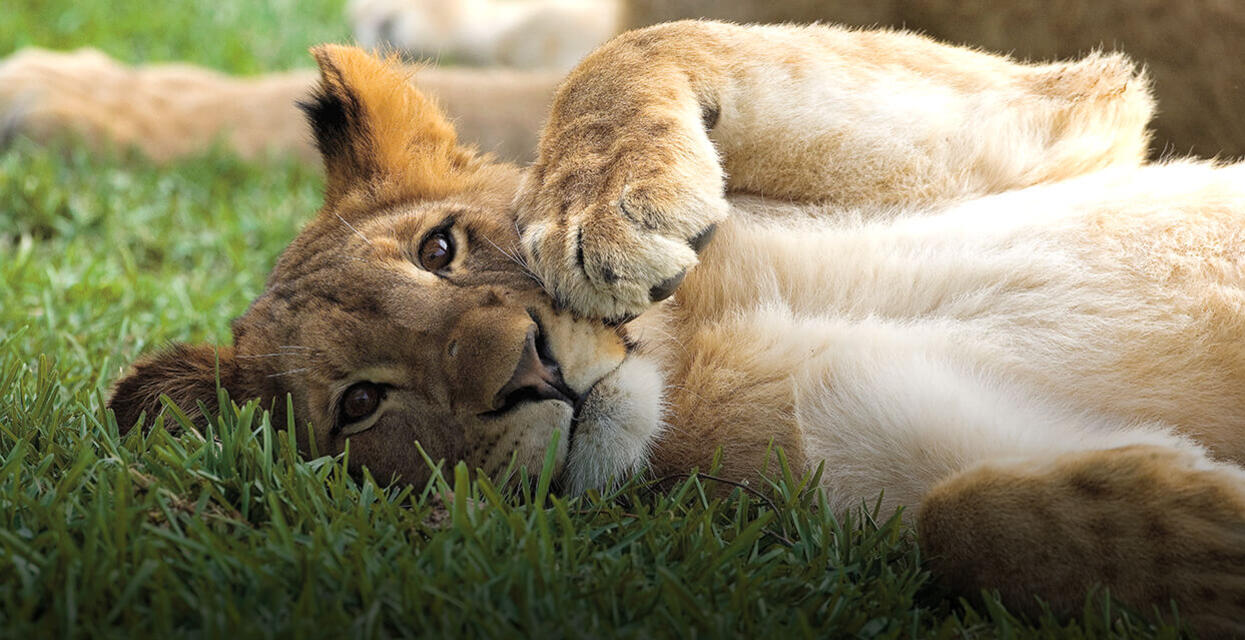
African Lion
IUCN Red List Conservation Status: Vulnerable
Threats to Survival: Retaliatory or pre-emptive killing to protect livestock and people; reduction in prey availability; habitat loss
Monitoring Lion Reproduction
Animal collection managers occasionally need to slow or suspend reproduction in individuals that are well-represented in a population. African lions at the San Diego Zoo and Safari Park have enjoyed good reproductive success in recent years. Their offspring have been shared with other zoos and are now contributing to the managed population. Several years ago, two adult females at the Safari Park were placed on contraception (birth control) so they could continue to live as a pride without reproducing. In a collaborative study with members of the Association of Zoos and Aquarium’s Felid Taxon Advisory Group and the Lion SSP (Species Survival Plan), our Reproductive Sciences researchers measured hormone levels in our two females in order to determine the long-term effects of contraception. When the lions failed to resume normal estrous cycling at the expected time, we treated them with hormones to stimulate estrus and ovulation. Both females responded positively to treatment by beginning to cycle, and one has subsequently produced two litters of cubs.
Validating Carnivore Samples for Conservation Work
Our Recovery Ecology team seeks to uncover how lions use chemical communication to reinforce natural behaviors and social interactions. This is part of a broader effort to study similar cues in multiple carnivore species to better understand their sensory ecology. Our long-term goal is that these data will not only enhance the welfare of lions in zoos, but also inform efforts to successfully manage and conserve them in the wilderness.
Understanding and Influencing Social Tolerance of Lions
Researchers in our community outreach program are exploring new collaborations with community, conservation, and research organizations in Kenya to support the human dimensions of lion conservation. In southern Kenya, our Community Engagement scientists are conducting research surveys that will provide critically needed social information regarding how local people perceive human-lion interactions and examine their willingness to accept lions on the private lands that are vital for connectivity between protected areas. To foster coexistence between people and lions in Kenya’s northern rangelands, our researchers and educators are collaborating in the development of a conservation education program aimed at increasing local understanding of lion ecology and how to reduce potential conflicts with lions.
Our Partners
Read more in our Publications Library

- Blog Archives
- Copyright | Cookie policy
- Literature
- (V)IPs Zoos
- Rest of the World
- Endangered Species
- Species Classification
- (V)IPs Evolution
- Latest Newsletter
- Newsletter Archive
- Subscription
- Video Gallery
Select a Zoo
Reviews — zoos in europe, history description, history documentary.
During the second half of the nineteenth century the first menageries in Moscow were established as entertainment facilities. The first was founded in 1855 by two Frenchmen (names unknown), while the Kreuzberg family owned a private menagerie that opened its door to the public in 1862 . Together these animal collections formed the heart of the Moscow Zoological Garden founded by the Society for Acclimatization of Plants and Animals, which was established by professors of the Moscow State University. The initial idea for such a zoological garden came in 1857 , but it took the Society, including one of its founding fathers professor Anatoly P. Bogdanov, until 1863 to be able to buy property for the future zoo. The Zoo was opened to visitors on 13 February 1864 at the location where it still exists until this very day. On opening day 287 animals were on display, of which 134 were domestic animals, while the others were exotic specimens such as tigers, lions, jaguar, leopard and rhino.
In those days it was an unique experiment to create “a living museum outdoors,” as professor Bogdanov said, in such severe climatic conditions of central Russia. The primary purpose of the Zoological Garden according to the members of the Society was:
to collect alive specimens of higher vertebrates ( firstly — the animals of Russian fauna) for scientific observations;
to establish a collection of typical animals that could serve educational purposes, i.e. distribution of zoological knowledge among the wide public communities;
to carry out scientific experiments and observations of important animals, especially domestic animals of Russian breeds.
The Zoo was financed by the entrance fees and private donations, including contributions by members of the imperial family. In the first years the annual number of visitors grew up to ten thousands. Nevertheless, the incomes did not cover the expenses and the Moscow City Council refused to give financial support. So, the Zoo went into private hands of the Ryabinins’ family in 1874 . They transformed the Zoo into an amusement park and in three years time ruined the place. In 1878 the Zoo was run by the Society for Acclimatization of Plants and Animals again, including fund raising activities. This time the Society was able to manage the Zoo successfully, and even to buy a number of animals. But in the turmoil of the Revolution of 1905 the Zoo was severely damaged: the buildings were ruined, the library was set on fire, many animals perished. So, for the second time the Society was forced to turn over the Zoo to private owners.
Then in 1914 World War I broke out. For the Zoo this meant that in the autumn of 1914 the only building that remain to this day was transformed from the director’s premises to a hospital for wounded WWI soldiers. The WWI impact compounded Russia’s suffering from a number of economic and social problems, which resulted first in the 1917 February revolution followed by the October revolution. In the aftermath of the Great October Socialist Revolution of 1917 and the fall of the Russian Empire, the Society ceased to exist, and in 1919 the Zoological Garden was declared national property and transferred under the responsibility of the ministry of Culture of the communist Moscow parliament, the Mossovet. In 1922 it was transferred to the authority of Moscow City Council and since then it has been supported by the City Authorities. Construction work began on the Zoo grounds. The Zoological Garden premises almost doubled in size with the establishment of the ‘New’ territory on the opposite side of Bolshaya Gruzinskaya street. New exhibits, which followed the principle of Carl Hagenbeck’s bar-less enclosure design were established. One of the most interesting exhibits of the Zoo called ‘Animal Island’ still exists. It was a high stony rock surrounded by a deep water ditch that separated the visitors from bears, tigers, lions and other large predators on the ‘Island’. The total size at the time was nearly 18 hectares.
In 1926 the Zoological Garden was renamed ‘Zoological Park’. At that time the range of activities extended, the animal collection increased considerably with expeditions collecting wildlife in Central Asia, the Far East and the Caucasus. New departments were established, focussed on for instance scientific research, education, veterinary science and nutrition. In those same years Moscow Zoo was the first zoo in the world where educational activities were the main priority.
In 1924 the Zoo had established the Young Biologists Club that gathered like-minded young people that joined in real scientific research. Many of them became a Zoo employee. The Club was founded by Petr Manteifel, who also was the pioneer father of the science called ‘zoo biology’. Manteifel and his young biologists discovered a way of artificial breeding sables (Martes zibellina), which were on the verge of extinction due to man’s insatiable pursuit for its expensive fur. In the 1930 s during Stalin’s great purge many members of the Young Biologists Club were arrested accused of spreading anti-soviet propaganda and liberal-minded ideas and having contact with German colleagues at Berlin zoo, some were even executed as foreign spies. The Club was considered a non-governmental organisation beyond the direct control of the authorities, which in fact was partly true because the Club was a real democracy, with membership available to all.
Although many animals were evacuated and many of the zoo staff were called to arms at the beginning of World War II the Zoo was kept open. Of the 750 employees at autumn 1941 only 220 remained on the staff, most of them women. Getting enough food for the animals was a constant challenge, for instance carcasses of killed horse at the battlefield around Moscow were brought to the zoo. More than six million people visited the Zoo from 1941 to 1945 to enjoy the sights of animals that had remained.
At wartime the scientific work proceeded, perhaps even more intense than before or after the war. The scientific staff worked especially on development of antibiotics. But the most important mission of the Zoo during the war was to give people hope. It produced the illusion of a peaceful life until people survived through the desperation of the war with the Red Army soldiers as the most frequent visitors of the Zoo. Which were given the pleasure of watching newborn offspring even during the war.
During the soviet union period ( 1922 − 1991 ) not many highly ranked people cared about the zoo — no soviet leader had any interest in it. The city encroached on the zoo premises, while the zoo needed additional space for the ever expanding zoo population of animals. Because the breeding results were still excellent.
The Zoo lived up to the goal it had set for itself and made educational activities the main priority. Zoo staff distributed knowledge in the field of natural history and tried to raise the public awareness and concern about the necessity for wildlife conservation. The zoo assisted schoolchildren and students with studying biology, actively participated in scientific research, and actively contributed to scientific publications. So, the Zoo became one of the larger scientific institutions in Moscow. And of course it still was the favourite recreational place for Moscow citizens and those who visited the city.
As off 1974 when Igos Sosnovsky retired as director and his successor Vladimir Spitsyn took over Moscow Zoo became part of the international zoo community again. Sosnovsky as a WWII veteran hadn’t been able to brush aside the fear of repression and avoided all international contacts for some reason. Spitsyn restored all international activities from before the war and the Zoo became member of many European and International Breeding Programmes in which it exchanged its rare and endangered animals, shared experience and information.
Although already in the 1970 s improvement of all zoo facilities was needed and ideas of a new zoo in another region of Moscow were launched, nothing happened due to local economical and social problems. By the end of the 1980 s the Zoo’s condition became alarming. Facilities were deteriorating, enclosures were dilapidated and technical equipment needed to be replaced as well. And while a few improvements had been achieved — such as a partial renovation of the main entrance, the monkey house and lion house — urgent measures were still needed.
Then, in 1992 the new Moscow government made a decision to start the most ambitious reconstruction project in Moscow Zoo’s history with the first stage of the project to be completed by 1997 , when the 850 th anniversary of the City would be celebrated. Anatoly A. Andreev who had been involved in the Zoo’s design and architecture since the 1970 s headed the team of architects. The project’s renovation objectives were focussed at (a) preservation or partial renovation of the historically valuable buildings and existing pools, (b) reduction of the noise from the surrounding streets, © connection of the Old and the New territory via a footbridge, and (d) expansion of the Old territory by incorporating adjacent areas and buildings.
Besides the preservation and renovation of almost all important zoo constructions, including the ones that actually were dilapidated, many new enclosures and facilities were built. Already in 1993 the footbridge that connected the Old and New territory was completed. It allowed visitors to avoid crossing the busy B. Gruzinskaya street with its heavy traffic. In 1993 other constructions were completed as well, such as an enclosure for large birds of prey and a complex of enclosures for feline species, including leopards, Pallas’ cats and lynx. Next, the Hagenbeck-style ‘Animal Island’, one of the most remarkable exhibits in the New territory, was renovated. The historic appearance with enclosures that resembled the natural habitats of Amur tiger, striped hyena, African wild dog and Asian black bear was preserved. Later they introduced Asian lions in one of the enclosures around the large rock in the centre of the ‘island’. During the renovation they created the Exotarium, which held several aquariums, inside the rock on the second floor.
The following years many more enclosures were renovated, besides the new research and veterinarian facilities that were put into operation in 1994 . In 1996 , the main entrance itself (featuring a small artificial waterfall) was reconstructed. The same year the old, dilapidated elephant complex was demolished and a new elephant house was erected at the same spot, while the inhabitants (four African elephants and four Asian elephants) were temporarily moved to a a former tram depot that was completely renovated and specially equipped. A new children’s zoo was opened in the New territory, including a children’s theatre that organises shows with educational elements. And besides several aviaries, a pavilion for water birds was built on the shore of the large pond in the New territory.
Although in those days 4 additional hectares of space was added to the former existing 18 hectares, the Zoo still lacked space to create favourable conditions for their species to breed. And its location in the centre of Moscow didn’t contribute to the favourable breeding conditions they wanted of course. Therefore, the 200 hectares area near the city of Volokolamsk (about 100 km from Moscow) that was given to the Zoo in 1996 for the establishment of a breeding station was very much welcomed (see also Breeding Centre ).
The first major stage of the general reconstruction of the Moscow zoo represents a unique event. Not only over 50 facilities have been renovated ( 90 % of all existing facilities) and newly built, but it was achieved in such a short period of time. But maintenance and small and larger refurbishment is ongoing business in a zoo. So, i n 2002 , the Moscow City Government and the City Council allocated the necessary funds to start construction of a new pavilion for the Asian elephants. In 2003 the three elephants could move house already, and in spring 2009 , the first newborn elephant calf was welcomed.
The Moscow Zoological Park has come a long way from the small zoological garden it was to the large institution of scientific research, education, conservation and recreation it is today. And due to the dynamics of the standards used in the zoo community regarding animal health and welfare, Moscow Zoo is constantly improving its facilities, also during 2014 celebrating its 150 th anniversary.
(Source: Moscow Zoo website; Zoo with a Human Face, to the 150 th anniversary of the Moscow Zoo — a documentary by Darya Violina and Sergei Pavlovsky, 2014 ; Zoo and Aquarium History by Vernon N. Kisling, Jr., 2001 ; Wikipedia)
An account of 150 years of history of the Moscow Zoo
(A documentary by Darya Violina and Sergei Pavlovsky)
The history of Moscow Zoo shown through the perspective of the lives of the people who have been important to the Zoo’s development and continuous progress over those many years since 1864 . Thousands of photographs, hundreds of chronicles, accounts and recollections that have preserved the story that began so long ago, against all odds, and lasts uninterrupted to this day. A documentary about those who have devoted their lives to serving a noble and rewarding cause, those who have started from scratch, those who maintained that work and about those who revive the Zoo as off today.
(Source: sdpavlovskiy YouTube channel)
20 . 06 . 2014
Finally, Moscow Zoo is paid a visit. I have been looking forward to this for quite some time. It has been on my to-do list since I learnt about the large collection of feline species on display at the Zoo. So, I am here on this sunny day in June to satisfy my curiosity, in the year they celebrate the Zoo’s 150 th anniversary.
I am entering as one of the 1 , 5 million paying attendance yearly. Which is not even half of the total number of visitors a year. This is about 4 million, because there are specific categories (e.g. disabled, pensioners, children, students, etc.) for whom the admission is free.
OLD TERRITORY
I turn left after the main entrance to visit the large predator section of the Old territory. Not that only here you will find predators, but the greatest part of their predator collection is grouped in this section. I will come back to the grouping of Moscow Zoo’s animal collection later. After having walked along a fence that blocks most of the views on the work in progress at the lake I arrive at what they call here the ‘tropical cats’ section: Bengal tiger (unfortunately the genetically aberrant version — a white tiger), jaguar and cheetah. Both the tiger and the jaguar have their indoor enclosures in the same house built at the perimeter of the premises. The cheetahs have their shelter for the night and bad weather in their outdoor paddock, so that cannot be visited. The tiger and the jaguar however have interesting housing that serves the needs for both the cats and the visitors. The latter are pleased with Asian and South American (Inca) ornaments to make sure they understand the geographical origin of the species. While the walls have murals representing the species’ original habitat … Machu Pichu for the jaguar. The animals themselves have various enrichment features at their disposal, including high level observation posts, in rather small exhibits. The outdoor facilities for these two species are accessible from the indoors. It has natural vegetation, but not a lot. Likewise there are not a lot of options to shelter from extreme weather or loud crowds. Although the cats have access to several resting posts at different levels, these enclosures can do with some improvements — at least more vegetation — to make them better fit for purpose, in my opinion. The enormous exposure of the cats is also due to the fact that they use windows to separate animal from man along almost the total length of the enclosures.
When I walk the few steps to the entrance of the Bear House, which is like the jaguar and tiger indoor enclosure built at the edge of the Zoo grounds, I pass in between the Pallas’ cat exhibit and a second jaguar exhibit. The Pallas’ cat has a flat grassy area with three large trees, some shrubs and a potential pond (when filled with water) available in its outdoor enclosure. Windows all around and a wire mesh roof prevent the cat from fleeing this scenery that doesn’t resemble the cat’s original Himalyan habitat. Across the footpath there’s a jaguar enclosure that’s more interesting than the one directly neighbouring the tiger. This one has a small stream and loads of vegetation and a multilevel resting platform. Still the animal is quite exposed.
The Bear House provides a nice and secluded area where three adjacent bear enclosures houses sloth bear and spectacled bear. As a visitor you walk via a roofed corridor more or less in the dark along the enclosures having good views on the exhibit via man-sized windows. The enclosures have a dry shallow moat at the visitor’s side, but I don’t think this withhold the bears from coming close to the windows. The enclosures are small but almost completely filled with enrichment features including various platforms, a tree trunk structure, rubber hammocks and natural vegetation. Considering the design I think these enclosures offer peace and quiet for the bears, unless people start banging the windows of course.
In slightly larger enclosures they keep Amur leopard, snow leopard and cougar ( Puma concolor ). At all of these felid species enclosures the distance between the public barrier and the fence does allow contact when people lean far forward.
Further along the footpath around the corner the arctic fox and the dhole are housed in enclosures that have a similar interior design as those for the felids. Despite the fact that these species live under different natural circumstances in the wild (forest and tundra habitat respectively).
When I walk back to have a look at the large birds of prey aviary I cannot prevent myself to have a brief look at the giraffe enclosure as well. It’s obviously a relic of the past that is not fit for purpose anymore. Still they have one reticulated giraffe on display at a saddening small area. It loves to be fed by the public that doesn’t care about the warning not to feed the animals. On the other side of the building a similar pitiful situation for the single white-tailed gnu can be seen.
One of the most extraordinary group of species brought together on display can be found right after the row of predator enclosures. The maned wolf from South America has the red-necked wallaby and emu from Australia as neighbour. But also in the same area the African wild dog is on display as well as white-tailed gnu (Africa) and kiang (Asia) in the row of stables along the rim of the premises.
The raccoon exhibit is worth mentioning considering the aforementioned accident risks. It has a very typical enclosure design with electrical wire on top of windows surrounding the entire exhibit. The electrical wire is within reach of the public. So, there are numerous warning signs! But why they installed electrical wire on top of windows that are unclimbable for raccoons? To keep out the public perhaps?
In the bird house, in the far end corner from the main entrance, birds from all geographical regions are grouped together, including Humboldt penguin and African penguin. The house consists of two part with one part half empty, and has also very common species on display, such as wild turkey, common pheasant and European hedgehog. Outside this building several aviaries comprise a large array of parrot species (South America and Australia).
Proceeding with my tour around the Old territory I have a look at the Asian elephant house and its surrounding grounds. The fancy steel with blue details of the elephant house doesn’t appeal to me, but that is just a matter of taste. It is definitely the most modern exhibit in the Zoo I’ve seen yet, in style and in size, with a nice pool at the visitor’s side.
I skip the reptile house to save some time, and money too, because an additional fee complies. So I walk straight to another modern enclosure — the bar-less and moated wolf exhibit. Although it has a Hagenbeck-style design, the space available for the wolves is ridiculously small. The wolves will never be able to cross the water-filled moat and climb the wall and thus break out, still there is impressive electrical wiring in place on top of the wall. Again, probably to keep out the public.
Making my way to the footbridge that connects the Old and New territory I pass along a very old-fashioned row of enclosures built in a semicircle in front of the 16 metres high sculpture by Zurab Tsereteli called ‘Tree of Fairy Tales’, 1996 . The enclosures house several species of mustelidae (sable, European polecat, stone marten), as well as African wild cats. Then followed by several aviaries again. At this point I am really lost regarding the way they group the Zoo’s animal collection.
NEW TERRITORY
Proceeding clockwise I find the doors of the Tropical House closed for renovation. So, no butterflies for me this time. But in one of the two spacious aviaries around this house I discover several ducks, such as the mandarin duck and the black-bellied whistling duck, together with the common kestrel ( Falco tinnunculus ), though neither rare nor endangered.
Then a rather special exhibit appears, the Animal Island, which was developed in the 1920 s as one of the first Hagenbeck-style enclosures in the New territory. Although it took some renovation activities it still exists to this very day. In the centre of this moated area they have erected a fake ruined fortress, which serves as the background for the species in the surrounding exhibits. These bar-less exhibits have a more modern appearance but it isn’t necessarily an improvement for the animals. For instance the Asian black bear has a bare environment with minor enrichment available and no vegetation, but the brown bear is even worse off in a similar enclosure but next to nothing of enrichment features. The tundra wolf ( Canis lupus alba ) and the striped hyena have a little better place at their disposal, but the Asian lions have by far the best enclosure. They have several resting platforms, trees and a stream that ends in the moat. Again to save time I skip an exhibit. This time the Exotarium with its aquariums that has been created inside the ruined fortress and by the way requires an additional fee to get in.
One of the rare areas in Moscow Zoo where you find mixed-species exhibits is called ‘Fauna of the Savannah’. It has a South American section with capybara vicuna and guanaco, and — very importantly — a large pool at the disposal of the largest rodent on earth. Though absolutely not endangered, these water-loving capybaras should have access to water at all times, in my opinion. The real savannah area with African species has several enclosures. A mixed species exhibit with sable antelope and dikdik. And Grevy’s zebra together with ostrich and giraffe. Also this time there’s only one giraffe in the paddock. The location of the meerkat enclosure is well chosen, because when they sit on top of one of their hills they can watch the other animals. Although it is the largest and probably the most modern facility at the Moscow Zoo I still think it is disappointingly mediocre compared to other zoos I have seen in Europe and North America.
Before I go to the primate section I buy myself an ice cream and walk along the horse stables on the eastern edge of the New territory premises. Looking for an answer to the question “why are there horse stables at this place?” The question still waits for an answer.
At Moscow Zoo they keep both Sumatran as Bornean orangutans, which is quite unusual. The outdoors for the five individuals, including 2 young, of the Sumatran species looks impressive due to the enormously high rock face at the rear. The wall looks extra impressive because it is rather close to the viewing windows. Unfortunately, the exhibit lacks trees and vegetation other than grass while the enrichment is scant and I don’t see puzzle feeders. The Bornean orangutans have a similar outdoor enclosure, but it is suggested that olive baboons ( Papio anubis ) are on display here as well. It could be that they alternate in the same outdoor enclosure, but this is not very clear.
The western lowland gorillas also have a similar outdoor enclosure design due to which the animals are enormously exposed to the inquisitive public. Considering the number of youngsters Moscow Zoo appears to be having good results breeding orangutans and gorillas.
Indoors, all the great ape exhibits have much enrichment and jungle-like murals, but the agile gibbon has even more enrichment inside. I haven’t seen a specific outdoor enclosure for the agile gibbon but it could be possible that it alternates with the Sumatran orangutans. Only this enclosure lacks high trees or other options for the gibbon to brachiate, which is its natural behaviour in the canopy of the gibbon’s native habitat, the rainforests of southeast Asia.
The terrarium building, located behind the Primate House, is beautifully decorated with little mosaic tiles. They have the usual row of exhibits, but in this case especially the larger reptiles and tortoises (python, crocodiles, alligator, tortoise) are kept. And outside they have two giant tortoise species, the Aldabra and the Galapagos tortoise.
On my return to the exit I pass the exhibits of a few of the many predator species they have on display at Moscow Zoo. The polar bear is provided with a big heap of artificial ice, but that’s about it when it comes to enrichment, though there are some plastic drums to play with. The enclosure as such is the prototype of polar bear enclosures worldwide, rear wall of cement and large bricks, concrete floor, large and deep water-filled moat. Unfortunately, again here the annoying reflecting windows. The yellow-throated marten I do not see, and the same counts for the Eurasian otter in its large elongated outdoor exhibit with a shallow pool along the whole length. It must be great to see the submerged otters swim in this pool.
Conclusion There are several ways to group a collection of animals which can support a zoo’s educational efforts. Of course, some people just come to the zoo to be entertained, but when an individual is ready to learn some things the worst thing you can do is confuse him or her. And to be fairly honest, confusing it is. Sometimes they group the collection according their taxonomic tree, which is the case with the felids, the bird species and the primates. Then again they have decided to present the collection by geographical origin, like in the ‘Fauna of the Savannah’, or according original habitat like the mountain-dwelling tur and markhor. And at some point they just make a mess of the grouping, for instance in the area with the maned wolf, the red-necked wallaby and others. In the end it seems the Zoo just want to have on display as many species as possible, because all species that live in herds they keep them in small numbers. I do understand that it is not easy, requires tough decisions and certainly is not cheap to rearrange your entire collection, especially when it is that huge as it is here at Moscow Zoo. Anyway, further renovation is foreseen and probably some rethinking as well.
I hope that they get rid of all these windows they have at so many exhibits. For some situations it is inevitable I understand, but I sincerely hope they will return to the original Hagenbeck idea of bar-less enclosures, taking into account modern husbandry standards of course. As the position of the sun makes it sometimes hard to get even the slightest glimpse of the animals due to the reflections in the windows. And last but not least they have the tendency to have windows all around or at more than 50 percent of the perimeter of an enclosure. Most of the time leading to more exposure of the animals to the public and possible unrest.
Sumatran orangutan youngsters at Moscow Zoo
Just another day at the zoo for these orangutans ( Pongo abelii ) — nothing much exciting going on in this safe and secure environment. But wouldn’t it be nice to see them swinging and romping in the forests of Sumatra.….
Raccoons at Moscow Zoo
Raccoons are known for their habit to clean their food in the water before eating it. It seems they also want to have a clean ball before playing with it.
Breeding Centre
Information and education, zoo details, breeding farm.
The Moscow Zoo has always been trying to create the most favourable conditions for their animals to fulfil their basic needs. Not only for animal health and welfare purposes but also to breed the animals successfully. These specific breeding conditions could not be achieved due to its location in the City centre and the lack of space. In 1996 the Zoo came into possession of an area of 200 hectares near the city of Volokolamsk (about 100 km from Moscow). In this picturesque hilly area of the former quarries of the Sychovo mining factory, with streams, springs and artificial ponds better opportunities were available for breeding various — predominantly rare — species of animals.
The main goals of the Breeding Centre, besides maintaining rare and endangered species of animals, are establishing breeding pairs and groups and developing new husbandry methods. Since excessive disturbance is likely to have adverse effect on the breeding efforts, the actual Breeding Centre is not open to the public.
The construction of the Breeding Centre started in March 1996 . The first inhabitants of the Centre were birds of prey and waterfowl and they have been successfully breeding birds ever since. The collection of waterfowl has grown notably since the beginning. Apart from the numerous mallards and ruddy shelducks, the inhabitants of the ponds include pintails, pochards, tufted ducks and black geese of the genus Branta. Bewick’s swans are thriving, raising their chicks every year. Japanese, white-naped and Siberian cranes are also breeding successfully and many other species, including parrots. The breeding centre for birds of prey is continuously expanding, with Himalayan griffon vultures, golden eagles, imperial eagles, Steller’s sea eagles, and black vultures among its most prominent inhabitants. Regular breeding has also been achieved in saker falcons ( Falco cherrug ).
They keep carnivorous mammals as well at the Breeding Centre. These include endangered species such as Amur leopard, Pallas’ cat, cheetah, Amur tiger, dhole, wolverine, and yellow-throated marten. Of these species the Amur leopard is listed Critically Endangered according the IUCN Red List of Threatened Species™ , with about 45 individuals left in the wild. The Zoo’s track record says they have produced offspring from Pallas’ cat, dhole, yellow-throated marten, and Amur tiger.
For the ungulates that are kept at the Centre the environment is almost ideal. There are bactrian camels as well as kiangs, Saiga antelopes, blue sheep and vicunas. Hoofed animals originating from mountainous areas have large paddocks at their disposal that are situated on the slopes of the surrounding hills, more or less similar to their natural habitat.
Besides the more rare and endangered species the Centre also has an interesting collection of domestic hens, a horse stable and a dog-breeding centre, mainly for the breeding of Central Asian sheep dogs. Furthermore, there is a small quail farm and a poultry farm with layer hens.
Moreover a subsidiary farm in Lotoshino houses some cattle, smaller livestock, and the main herd of bactrian camels and yaks. The area of the subsidiary farm is about 51 hectares and it comprises hayfields, pastures, a sheepfold and an apiary. Most importantly it provides the Moscow Zoo with ecological feed for its animals.
The Breeding Centre’s collection comprises 10 species of carnivores, 6 species of ungulates, 74 species of birds and a great number of domestic animals, but the collection is expanding constantly. Although it is still closed to visitors, the Zoo’s goal is to open part of the farm (as they call the Breeding Centre themselves) to outside visitors soon. They plan to create an additional safari park at the location of the Breeding Centre.
(Source: Moscow Zoo website; Zoo with a Human Face, to the 150 th anniversary of the Moscow Zoo — a documentary by Darya Violina and Sergei Pavlovsky, 2014 )
Information panels and Education at the Zoo
First thing to be noticed of course is that the information on the panels around Moscow Zoo is given in the Russian language. And no other language. This is not unexpected as most of the information provided in Moscow is only in Russian. Fortunately, the name of the species on display is given in English as well, together with its scientific name. As far as I can tell and understand no information is provided on the species conservation status (or IUCN Red List status). On the new revamped website this information is available but only in Russian and no icons or logos are used, so you have to rely on machine translation services. The panels show geographic maps of the species distribution and sometimes the IUCN status and if the species is part of EEP /ESB, as well. But this is not done consistently, and I am not sure how reliable the information is. Nevertheless I have been able to find on the internet a list of species that represent the Moscow Zoo contribution to the European Endangered species Programmes (EEPs).
There is also a zoo school that is primarily focussed on children, and I assume that the Young Biologists Club still exist. Foremost because it has been very successfully delivering a range of important staff members over the years.
- Directions
directions to Moscow Zoo
Address : B. Gruzinskaya 1 123242 Moscow Russia
public transport
The metro system can be quite intimidating for foreigners because of the language issue, but I can assure you it is the best way of navigating the city. The metro stations are the most beautiful I’ve ever seen and buying tickets can be done using sign language (see the tripadvisor website how it is done). When you are not able to decipher the Cyrillic alphabet on the fly it is best to prepare your metro trip beforehand and make sure that you know how many stops you have to travel from the departure station to your destination, including transfer stations. Another way of travel support is the Art-Lebedev metro map , which has the names of the stations both in Russian and English mentioned. The most fancy way however is by using the Russian metro app on your smartphone. The Yandex.Metro app — provides a bilingual metro map which can even build connection routes for you and estimate travel times.
Moscow Zoo’s main entrance is conveniently located right across from the Krasnopresnenskaya metro station on the Brown Circular line (no. 5 ). Also the Barrikadnaya metro station is rather close to the main entrance, Purple line (no. 7 ).
by bicycle
As mentioned already Moscow is a very large city. So, it really depends on how close you already are to the Zoo if cycling could be an option. The obvious challenge is the traffic which has grown dramatically in recent years — the centre of Moscow is a non-stop traffic jam. Furthermore the poor driving habits of Moscow motorists are notorious, from road rage to rear-ending. In addition, knee-deep snow and the grimy slush that inevitably follows during the long and fearsome winters doesn’t make cycling in Moscow a very attractive mode of transport. Nevertheless the City Council tries to make the city more bike-friendly with a bike rental scheme like in many major cities around the world. I decided to use the metro.
There is no dedicated parking available at the Zoo, but if you really want to drive yourself you can get directions below by providing your point of departure.
From : -- Choose source -- Moscow Zoo or
Download the zoo map here .
Goal: 7000 tigers in the wild
“ Tiger map” ( CC BY 2 . 5 ) by Sanderson et al., 2006 .
Latest Additions
Tallinn zoological gardens, tallinna loomaaed, stadt haag zoo, tierpark stadt haag, salzburg zoo, krefeld zoo, cerza zoo, cerza parc zoologique lisieux, bratislava zoo, rheine zoo, naturzoo rheine.
You will be redirected to your dashboard shortly. We will also call you back in 24 hrs .
- 33 Largest Zoos In The World Where You Can Spot The Rarest Fauna And Have Ultimate Fun In 2024!
23 Mar 2023
Visiting a zoo is a one-of-a-kind experience if you look closer. They not only preserve various species but also educate us about the animals’ habitat, their way of living, food etc. Many zoos across the world attract a large number of tourists and at the same time are a fun place for kids to learn too. They can be compared based on the size of the land or the number of animals they protect and nurture, but the largest zoos in the world shall only be visited to know the reason behind their status. So, find out where to go on your next trip by taking a look at these astonishing galactic zoos and the adorable animals they shelter. These best zoos in the world are giving you a chance to observe and understand nature and wildlife from close proximity.
Top 33 Largest Zoos In The World
Here’s a list of the biggest zoos in the world for the animal lover in you! They give you a chance to witness and admire the greatness of nature. Not just that, you will also have so much exploring the attractions inside these zoos that are meant to give you a whole-world experience. Find some of the best zoos in the world in this listing and visit some of these on your next trip!
- National Zoological Gardens Of Africa – Encircling Natural Habitat
- London Zoo – World’s Oldest Scientific Zoo
- San Diego Zoo – Breed Giant Panda
- The Bronx Zoo – Among The Oldest Metropolitan Zoos
- Henry Doorly Zoo – World’s Largest Indoor Desert
- Columbus Zoo And Aquarium – A Non-Profit Zoo
- Toronto Zoo – Canada’s Largest Zoo
- Moscow Zoo – Among The Oldest European Zoos
- Beijing Zoo – Largest Animal Collection In China
- Berlin Zoological Garden – Germany’s Oldest Zoo
- Dallas Zoo – A Throne Of A Place
- Hogle Zoo – Animals From Diverse Ecosystems
- Como Zoo – Known For Its Architecture
- Philadelphia Zoo – Among The First Zoos In The US
- Oakland Zoo – With A Large Veterinary Hospital
- Chester Zoo – Catch The Rarest Animals
- Smithsonian National Zoological Park – To Educate About Wildlife
- Riverbanks Zoo – Botanical Garden And More
- Los Angeles Zoo – Feed Flamingo And Giraffe
- Saint Louis Zoo – Innovative In Wildlife Conservation
- Jacksonville Zoo – Preserving Fauna And Flora
- Detroit Zoo – A Fauna Extravagance
- Memphis Zoo – For Some Jurassic Adventures
- North Carolina Zoo – For A Wildlife Experience
- National Zoological Park, Delhi – A Powerhouse Of Endangered Animals
- Brookfield Zoo – For The Love Of Dolphins
- Mysore Zoo – A Home For Green Anacondas
- Nehru Zoological Park – Open For Animal Adoption
- Assam State Zoo And Botanical Garden – An Abode For White Tigers
- Indira Gandhi Zoological Park – India’s Third Largest Zoo
- Zoo Miami – Curate A Special Tour
- Nandankanan Zoological Park – Spot Reptiles
- Arignar Anna Zoological Park – India’s Largest Zoo
1. National Zoological Gardens Of Africa – With Natural Habitats
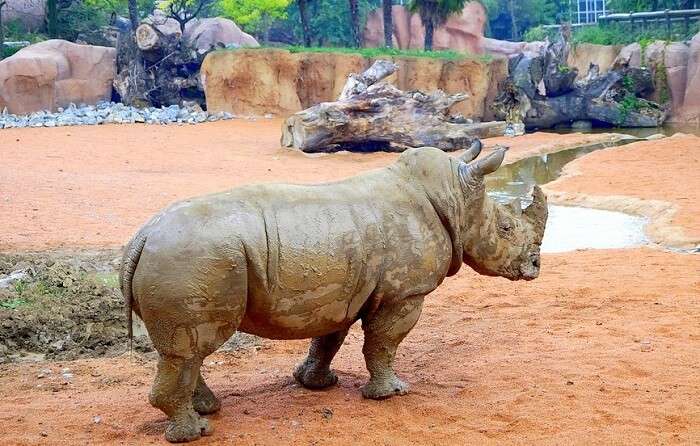
Image Source
South Africa is known for its rich wildlife and this is a world famous zoo located here. Located in a natural habitat, with a land area of about 210 acres in Pretoria, South Africa, this place is the national zoo of South Africa. Its uniqueness lie in the planning involved in the structure of the zoo. One part comprises mainly of flat lands while the other is a slightly hilly one and these parts are separated by the Apies river flowing through the zoo! Here you get to see the rich wildlife of South Africa . It gets more interesting with the wide range of species housed by the zoo and a total number of animals to be around 9,000. This is one of the most loved largest zoos in the world .
Location: 232 Boom St, Daspoort 319-Jr, Pretoria, 0001, South Africa Timings: 8.30 AM to 5.30 PM Entry Fee: Starting from INR 530 per adult Tips: Hire an AC van and take a comfortable tour in the zoo Best time to visit: All year round Famous For : Largest collections of antelope in the world.
Must Read : 18 Places You Need To Visit For The Best Wildlife Experience In India
2. London Zoo – World’s Oldest Scientific Zoo

London Zoo is not just among the world’s biggest zoos it is the world’s oldest scientific zoo established in 1828, exclusively for scientific research. This zoo is also not far behind in the conservation efforts as the recent program introduced here was that of ‘Tiger SOS’ which intends to raise funds to save the Sumatran Tiger. Opened to general public in 1847, this animal abode accommodates 16,000 animals in just 36 acres of land. This is one of the biggest zoos in the world !
Location: London NW1 4RY, UK Timings: 10 AM to 5.30 PM Entry Fee: Starting from INR 2,200 per adult through online booking as charges may vary at the entrance gate Tips: Check for the website of zoo to know the events and special show timings Best time to visit: In winters till 4 PM Famous For: Scientific Zoo; Polar bear, Gorillas,Orangutans, Western lowland gorilla, Giant panda
Suggested Read : Namdapha National Park: A Guide For Getting Close To Northeast’s Gem!
3. San Diego Zoo – Breed Giant Panda
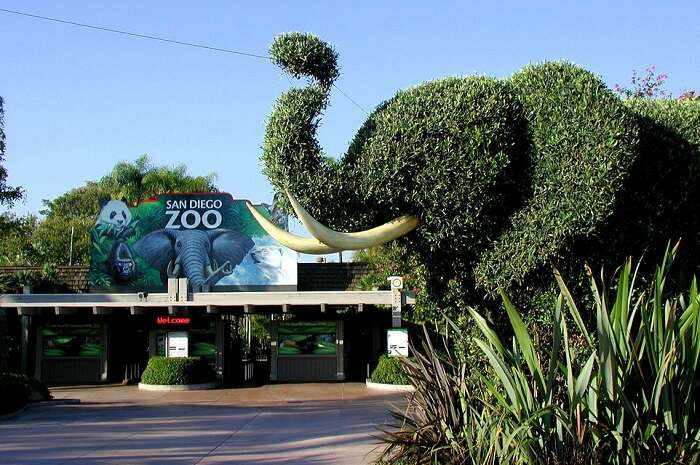
Saint Diego Zoo is one of the biggest zoo in the world which is known for its conservation efforts. Located in California, one of the rare zoos to accommodate and breed giant panda, it is believed that San Diego is one of the best and largest zoos in the world. With a total land area of approximately 100 acres, it houses several species and subspecies of animals. This zoo is not only active in preserving and conservational efforts with respect to the wildlife here, but also ensures an open-air exhibit for each animal with an aim to eventually release the animals into the wild in future. You can combine your visit to this zoo with any of your group tour in USA .
Location: 2920 Zoo Dr, San Diego, CA 92101, USA Timings: 9 AM to 6 PM Entry Fee: INR 4000 Approx per adult and INR 3,000 per child for a day Tips: Take the map of the park and you must arrive early. Wear comfortable shoes! Best time to visit: When the weather is pleasant especially in the morning when the crowd is less Famous For : Conservation efforts, Endangered species breeding programs; koalas, hippopotamuses, tigers, giraffes, gorillas
Suggested Read : 22 Wildlife Sanctuaries In Kerala That Showcase South India’s Exotic Fauna & Flora
Looking To Book An International Holiday?

Trip to Sri Lanka at Rs 13,500/-
Plan Your Vacation Today!

Trip to Singapore at Rs 20,499/-
Get Quotes From Local Experts

Mauritius Holiday Starting at Rs 65,000/-
Talk to Our Experts Today

Maldives Honeymoon Trip at Rs 39,800/-
Pay with easy EMI Option

Europe Trip at Rs 89,999/-
All Inclusive Deals

Vacation in Dubai at Rs 27,499/-

Hong Kong Holiday at Rs 24,999/-
Money Safe Guarantee

Thailand Holiday at Rs 7,999/-
Flights Excluded

See more at TRAVELTRIANGLE.COM
4. The Bronx Zoo – Among The Oldest Metropolitan Zoos
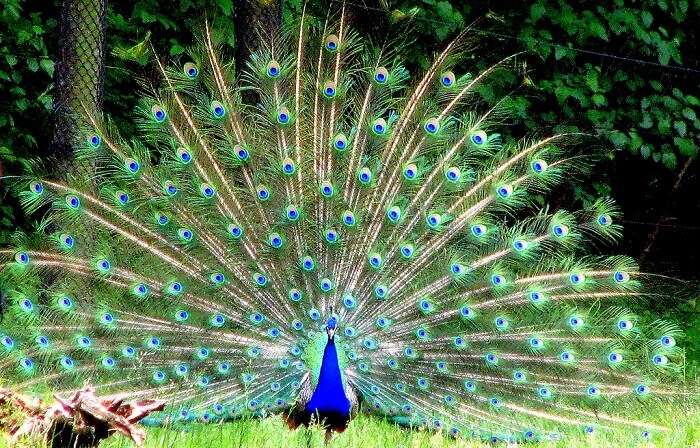
The Bronx Zoo is one of the world’s largest zoo which is popular for its award winning exhibitions. Get prepared to be amazed at one of the world’s oldest metropolitan zoos located in the New York city. Displaying natural habitats of the animals, this zoo has a total land area of about 265 acres housing around 4000 animals of different species. Being the largest zoo in the USA , Bronx has no shortage of tourists as it receives over 2 million visitors every year and now we know why this place is a must visit for every animal-lover.
Location: 2300 Southern Blvd, Bronx, NY 10460, USA Timings: 10 AM to 5 PM (Mon-Fri); 10 AM to 5.30 PM (Sat, Sun) Entry Fee: INR 1700 per adult and INR 1,000 per child for a day Tips: You must check that animals are available for viewing or not. Wear sports shoes for a comfortable walk. Best time to visit: From March 31 st to November 3 rd when the animals are outside and can be seen. Famous For: Award-winning exhibitions like Himalayan Highlands, Jungle World, Baboon Reserve
Suggested Read : 25 Amazing Wildlife Sanctuaries In India For Adventurous Safaris And Encounters With The Wild!
5. Henry Doorly Zoo – World’s Largest Indoor Desert

Henry Doorly Zoo being one of the world largest zoo is famous for desert dome and indoor deserts. Housing around 17,000 animals and considered to be one of the largest zoos in the world, Henry Doorly Zoo located in Nebraska was originally built in 1864. It is also known to have the largest cat complex in the world and world’s largest indoor desert. One can witness the spectacular glazed geodesic dome here which is also said to be the largest in the world. These unique and extraordinary features make Henry Doorly Zoo one of the most famous zoos in the world.
Location: 3701 S 10th St, Omaha, NE 68107, USA Timings: 9 AM to 5 PM Entry Fee: INR 1,400 for adults and INR 950 per child for a day Tips: Don’t visit on weekends due to the rush. Carry some snacks with you. Best time to visit: Open all year round except Christmas day Famous For: Desert Dome , indoor deserts; Kingdoms of the Night, a nocturnal exhibit and indoor swamp; glazed geodesic dome; the Lied Jungle, indoor rainforests
Suggested Read : 9 Epic Wildlife Sanctuaries In Kashmir That Will Take You A Step Closer To Nature’s Goodness!
6. Columbus Zoo And Aquarium – A Non-Profit Zoo

Assigned the status of number 1 zoo in the United States on many occasions, it’s a must visit for the diverse attractions that it offers on its 530 acres of land, besides housing the 7,000 animals. It is yet another zoo with applaudable efforts in conservation and protection of wildlife, raising approximately 3 million for 70 projects. What’s more notable about this place is that it is a non-profit zoo working towards protecting the fauna for good.
Location: 4850 W Powell Rd, Powell, OH 43065, USA Timings: 9 AM to 5 PM Entry Fee: INR 1,000 per adult and INR 700 per child approximately Tips: Arrive on time as the zoo is big enough and will require a couple of hours. Best time to visit: From mid-August until mid-May Famous For: Bear Exhibit; the Surfin Safari, Giraffe Feeding, Discovery Reef Diver; western lowland gorilla, white handed gibbon
Suggested Read: Gorumara National Park: Explore The Luxuriant Wilderness At The Foothills Of The Himalayas
7. Toronto Zoo – Canada’s Largest Zoo
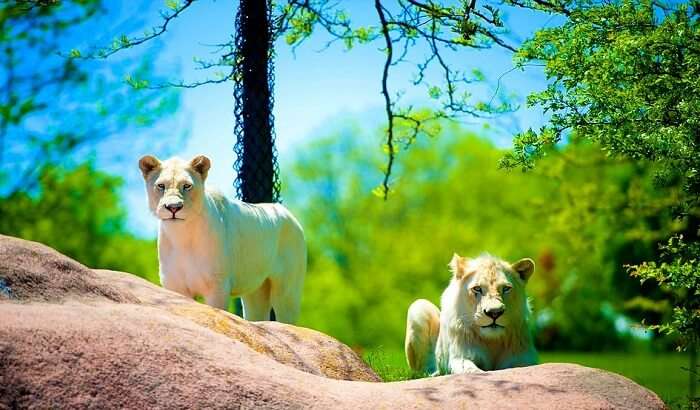
Visit the largest zoo in Canada with a land area of about 710 acres and incredible space to house more than 5000 animals in here. That’s right, the Toronto Zoo, opened in 1974, is a popular attraction amongst tourists of all ages and even has categories for animals belonging to different regions all over the world and the same can be seen from separate levels in the zoo! This is one of the best places to visit in Toronto .
Location: 2000 Meadowvale Rd, Toronto, ON M1B 5K7, Canada Timings: 9.30 AM to 4.30 PM (Mon-Fri); 9.30 AM to 6 PM (Sat, Sun) Entry Fee: Starting from INR 1,700 per adult and INR 1,000 per child for a day Tips: Avoid parking. Buy something from the gift shop and plan a route for you. Best time to visit: In the Fall season, mid-day or afternoon is good when it’s not too hot. People must go in the morning hours Famous For: White-headed vulture, African lion, Ostrich, White rhinoceros, River hippopotamus, African Penguin, Spotted hyena
Suggested Read : Nanda Devi National Park: A Sanctuary In The Garhwal Himalayas
8. Moscow Zoo – Among The Oldest European Zoos
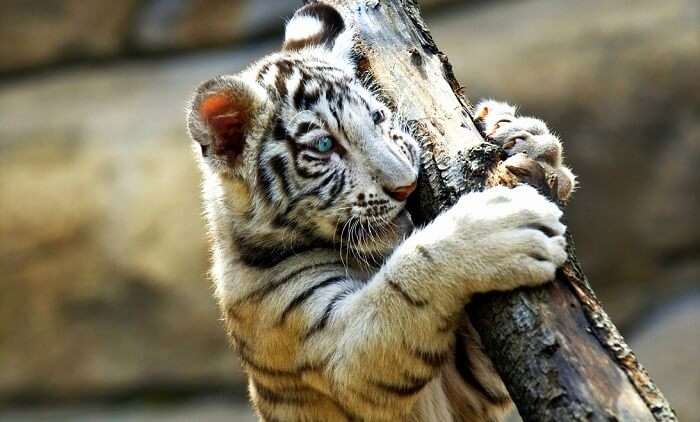
Why visit the Moscow Zoo? Well, being one of the oldest zoos in Europe, largest zoo in Russia, and home to 6000 animals, this zoo is an outstanding example of development with time. This is one of the biggest zoos in the world ! With a renovation in 1990s, the zoo has extended land area making room for a separate aquarium and a sea lion exhibit. It also has different attractions meant only for kids and has a footbridge connecting the opposite parts of the zoo. For the best experience, plan your visit during summers in Moscow .
Location: Bolshaya Gruzinskaya Street, 1, Moskva, Russia, 123242 Timings: 7.30 AM to 9 PM Entry Fee: Varying charges depending upon the day Tips: Book tickets well in advance. Carry a camera. Best time to visit: People can visit between 7:30 AM in the morning till 8:00 PM in the evening Famous For: Bears, large cats, elephants, penguin, giraffes; Dolphin aquarium
Suggested Read: 7 National Parks That Offer The Wildest Sri Lanka Safari
9. Beijing Zoo – Largest Animal Collection In China

This is one of the top zoos in the world. The Beijing Zoo holds a great significance for the Chinese folk and it was founded in 1906 during the rule of Qing dynasty. This zoo houses over 950 species of animals and is known to have the largest collection of animals in China. While six million people come to visit this place every year, one can see rare animals like, Chinese Great Salamander, Giant pandas, and South China Tigers. This place is surely in the top list of awesome things to do in Beijing . This is certainly amongst the world’s largest zoo .
Location: 137 Xizhimen Outer St, DongWuYuan, Xicheng Qu, Beijing Shi, China, 100037 Timings: 7.30 AM to 6 PM (Apr-Oct); 7.30 AM to 5 PM (Nov-Mar) Entry Fee: Starting from INR 200 per adult for a day Tips: You must surely take time to visit the panda house and aquarium which are the highlights of the zoo. Best time to visit: To see the pandas the best time is considered after 3 o’clock in the afternoon when they are lazy Famous For: South China tiger; Golden snub-nosed monkey; Giant panda; Red panda
Suggested Read : Shaheed Ashfaqullah Khan Zoo In Gorakhpur: A Budding Tourist Attraction And Center For Wildlife
Planning your holiday but confused about where to go? These travel stories help you find your best trip ever!

Ramya Narrates The Story Of 6 Girls On An Extraordinary Trip To Thailand
Bangkok. Phi Phi. Krabi. Why should guys have all the fun?

Sandeep Illustrates On The Best Activities For A Family Trip To Mauritius
Water sports. Cocktail parties. And unlimited fun at Casela.

Nisarg Can't Stop Praising His Honeymoon Trip To Maldives
There was snorkeling, sightseeing, luxury, comfort, & much more!

Sabyacsachi's Romantic Trip Proves Europe To Be The Mother Of All Vacations
For Art, Culture, Luxury, & more...

Srishti Talks Of Her Amazing Trip To Singapore With Her Mother & Niece
A fun-filled destination for ages indeed!

67-Year Old Sridhar Tells How He Beat The Odds & Took A Solo Trip To Dubai
Desert safari. Burj Khalifa. Welcoming locals. Tell me more!

Not Adventure Lovers? Saurabh's Family Trip Proves Hong Kong To Still Be Full Of Fun
Your kids will love Disney Land & Ocean Park!

Ravi's Tale Of A Sri Lanka Family Tour Is All You Need To Know About Ramayana Tour
For the love of Ramayana & Travel!
10. Berlin Zoological Garden – Germany’s Oldest Zoo

In a mere 86 acres of land, the Berlin Zoological Garden houses a grand number of animals, that is, around 18,662. The zoo’s efforts towards conservation and preservation of wildlife are also commendable as they tie up with universities for the same and raise funds. Being the oldest zoo in Germany, most visited in Europe, and the most popular one worldwide, one has to see it inside out to believe the grand stature it holds. The place is also known to offer the best safaris in Germany !
Location: Hardenbergplatz 8, 10787 Berlin, Germany Timings: 9 AM to 6.30 PM Entry Fee: Starting from INR 1,300 per adult Tips: You must carry your own food with you. Best time to visit: From January to December. However, the timing varies for every month. Famous For: Regular animal feeding; The polar bear, The giant panda
Suggested Read : 17 Best Zoos In India That Every Wildlife Enthusiast Must Add To Their Travel Bucket List
11. Dallas Zoo – A Throne Of A Place
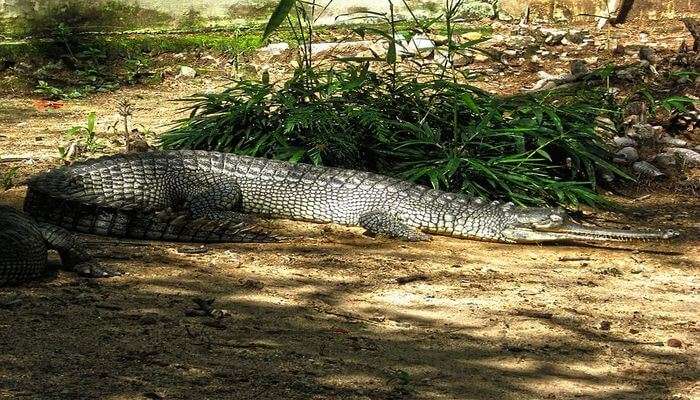
The Dallas Zoo is one of the best zoos in the world with an area of around 106 acres, over 2,100 animals, 406 species and 700 volunteers to guide you. A world in itself, the zoo is very popular among the tourists, locals and considered one of the best places to visit in Dallas . The zoo is 20 years old and hails multiple attractions within including the monorail ride, the Wilds of Africa Adventure Safari and the T-Rex Express. There is an animal-themed merry-go-round Carousel that is a major point of interest among the kids. What’s more is that you find shopping and dining facilities inside the zoo.
Location : 650 S R L Thornton Fwy, Dallas, TX 75203, United States Timings : 9 AM to 4 PM Entry Fee : INR 800 to 1200 Tips: Feed the animals you will love. Enjoy a meal at picnic ridge. Best time to visit: In springtime, people can visit and even in April at the time of National Zoo lover’s day. Famous For: Giraffe feedings; Endangered Species Carousel; Africa Adventure Safari
Suggested Read : 3 Zoos In Andhra Pradesh Where You Can Interact With Wildlife
12. Hogle Zoo – Animals From Diverse Ecosystems

Found in the state of Utah, Hogle Zoo acquires only 42 acres of land and houses around 800 animals from 249 different species. You will find apes, elephants, giraffes, and tigers in this zoo. If you are planning a visit to Utah then do not forget to explore this place with your family and kids. Indeed, a visit to this zoo would one of the most fascinating things to do in Utah .
Location: 2600 Sunnyside Ave S, Salt Lake City, UT 84108, USA Timings: 9 AM to 6 PM Entry Fee: Ranges from INR 1,000 to 1,500 Tips: Do not go on free zoo days as it will be over crowded. Get the show timings before entering. Best time to visit: From March 1 st to October 31 st . However, time may vary. Famous For: Giraffe feeding; Amur tiger, largest big endangered Asian cat, Elephant Encounter exhibit (featuring African elephants and white rhinos)
Suggested Read : Top 4 Zoos In North East That Are Home To Some Magnificent Wild Creatures!
13. Como Zoo – Known For Its Architecture

Well-appreciated for its architecture and idea, Como Zoo is among the best things to do in Minnesota . Founded in the year 1897, the zoo houses 1,700 animals in only 17 acres of land. Moreover, you can also admire 66 different species of animals here. They have recently revamped the place and expanded the polar bear and ape sections. The admission to this zoo is free as it is dependent on charitable donations and state funding.
Location: 1225 Estabrook Dr, St Paul, MN 55103, USA Timings: 10 AM to 6 PM Entry Fee: Free Tips: Bring a camera for sure and arrive early to avoid rush. Best time to visit: From 10:00 AM to 4:00 PM at any time of the year. Famous For: Marjorie McNeely Conservatory; Gorilla program; Polar bear program
Suggested Read : 7 Zoos In Maharashtra That Will Let You Spend Time With Nature’s Loved Ones
14. Philadelphia Zoo – Among The First Zoos In The US

Sprawled in an area of 42 acres, Philadelphia Zoo is one of the largest zoos in the world 2023 that is visited by several animal lovers. Established in the year 1874, this zoo is now home to around 2,440 animals of 340 species. If you too are an animal lover and want to explore different species of animals then head to the Philadelphia Zoo in Pennsylvania. Visiting this awesome zoo is surely amongst the best things to do in Pennsylvania .
Location: Zoological Dr, Philadelphia, PA 19104, USA Timings: 9.30 AM to 5 PM Entry Fee: INR 1500 per person Tips: Visit during off peak hours to get the best experience. Best time to visit: In early morning hours or visit after 2 o’clock in the afternoon when the rush is minimum. Famous For: Southern white rhinoceros; Sloth bear; Amur tiger
Suggested Read : 5 Most Enthralling Zoos In Bangkok You Must Visit To Explore Thailand’s Wildlife!
15. Oakland Zoo – With A Large Veterinary Hospital
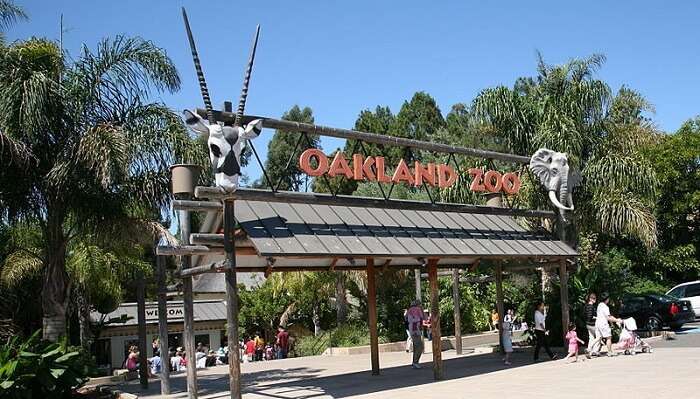
Oakland Zoo is one of the largest zoos in the world as it houses animals in their natural habitats. Spread in an area of 100 acres, this zoo hosts around 660 animals. Moreover, they established a 17,000 square foot veterinary hospital which is one of the largest hospitals in Northern California. This place is amongst the largest zoological park in the world . The zoo is located in proximity to the popular trekking trails in Northern California .
Location: 9777 Golf Links Rd, Oakland, CA 94605, USA Timings: 10 AM to 4.30 PM (Tues-Fri), 9.30 AM to 4.30 PM (Sat-Mon) Entry Fee: INR 1500 (Children & Senior Citizens), INR 1900 (Adults) Tips: Carry a stroll with you. Get some snacks to eat as well. Best time to visit: The week days 10:00 AM to 4:00 PM. On weekends 9:30 AM to 4:30 PM. Famous For: Elephant care program; Veterinary hospital
Suggested Read : 5 Marvelous Zoos In Toronto To Visit With Kids On A Canadian Holiday
16. Chester Zoo – Catch The Rarest Animals
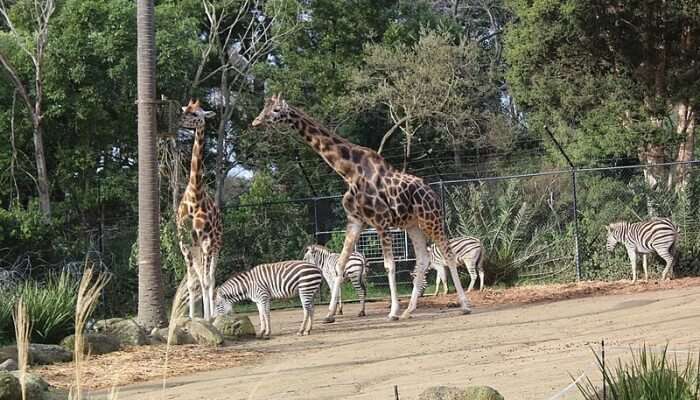
The Chester Zoo is one of the largest zoos in the world located in Cheshire, England. Spanning an area of 125 acres and inaugurated by the George Mottershead family in 1931, it’s one of the largest in England. In terms of animal count, this is the largest zoo in the world with over 21,000 animals across 500 or more species. You can also find animals on the verge of extinction – the rarest of the rare. Some great things to do include a boat trip on Lazy River, dine at the restaurants, picnic at numerous spots and enjoy a monorail ride.
Location : Chester CH2 1EU, United Kingdom Timings : 10 AM to 4 PM Entry Fee : INR 1500 to 1900 Tips: Arrive at least 20 minutes before the zoo opens. It is helpful in parking. Best time to visit: Winters is the perfect time to visit the zoo Famous For: George the giraffe; Jubilee the elephant
Suggested Read : 6 Captivating Zoos In Bali Where You Can Befriend The Exotic Animals
17. Smithsonian National Zoological Park – To Educate About Wildlife

Smithsonian National Zoological Park is one of the oldest and most famous zoos in the United States that acquires an area of 164 acres and houses more than 2,000 animals of 400 separate species. As the aim of this zoo is to promote and educate wildlife conservation among as many people as possible, there is no fees required to explore this zoo. This is amongst the world’s largest zoo . In fact, this is one of the best places to visit in Washington D.C .
Location: 3001 Connecticut Ave NW, Washington, DC 20008, USA Timings: 8 AM to 5 PM Entry Fee: Free Tips: Don’t use parking as it is quite expensive. Skip the food in the zoo. Best time to visit: The fall season when the days are cooler and pandas are seen. Famous For: Exhibits like Birdhouse, Amazonia, Giant Panda Habitat, Asia Trail
Suggested Read: 7 Wildlife Sanctuaries Near Hyderabad To Explore The Wild Side Of South!
18. Riverbanks Zoo – Botanical Garden And More

Riverbanks Zoo and Garden in Columbia, South Carolina is quite popular for its enormous collection of wildlife. The zoo also comprises an interesting aquarium and stunning botanical garden offering the best adventurous experiences in Columbia. Riverbanks Zoo is sprawling over 170 acres of land and welcomes nearly 1 million visitors every year. This is undoubtedly one of the most popular largest zoos in the world . Riverbanks Zoo is certainly one of the best places to visit in Colombia .
Location: 500 Wildlife Pkwy, Columbia, SC 29210, United States Timings: 10 AM – 5 PM Entry Fee: INR 3500 Tips: Take a map at the entrance gate. Pets are not permitted in the park. Best time to visit: From 9:00 AM to 4:00 PM and it’s better to arrive before 11:00 AM Famous For: Birdhouse; African elephants, gorillas, koalas
Suggested Read: Sikkim Wildlife: 8 Awe-Striking Top Sanctuaries and National Parks
19. Los Angeles Zoo – Feed Flamingo And Giraffe

Los Angeles is quite popular for its zoo known as Los Angeles Zoo and Botanical Gardens. It was inaugurated in the year 1966 and has been welcoming visitors from across the world since its inception. This zoo in Los Angeles is home to nearly 1100 animals of over 250 species.
Location: 5333 Zoo Dr, Los Angeles, CA 90027, United States Timings: 10 AM – 5 PM Entry Fee: INR 3200 Tips: You must check the show timings before entering the zoo. Hire zoo shuttle if required. Best time to visit: Week days are good but on weekends full bird shows and condor play is also organised there. Famous For: Elephant care demonstrations, Seal demonstrations, Campfire stories; Giraffe feeding, Flamingo Mingle, Safari Shuttle
Suggested Read: Explore The Hemis National Park In Ladakh to Witness Wildlife In High Altitudes
20. Saint Louis Zoo – Innovative In Wildlife Conservation

Saint Louis Zoo was officially opened in 1910 with the formation of the Zoological Society Of St. Louis. The zoo was formed with the mission to connect people to animals. It houses over 17,000 animals including several rare and endangered species. A specialty of this zoo is that it uses a variety of innovative methods for wildlife conservation and animal management. Spread across 90 acres, Saint Louse Zoo features vivid animal habitats, animal exhibits, attractions, dining and shopping spaces.
Location: Government Dr, St. Louis, MO 63110, United States Timings: 9 AM – 5 PM Entry Fee: Entry is free, though you would be charged for some attractions Tips: See the penguin and sea lions first if you have less time. Bring an umbrella with you. Best time to visit: Early morning is great to see the animals along with a visit to Children’s zoo. Famous For: Penguin & Puffin Coast; Hippo Harbor; Sea Lion Sound
Suggested Read: 6 Best Wildlife Sanctuaries Near Bangalore One Must Definitely Visit And Enjoy A Day Amidst Nature
21. Jacksonville Zoo – Preserving Fauna And Flora

Jacksonville Zoo And Gardens is home to over 2,000 animals, including elephants, giraffes, rhinos, zebras, warthogs, jaguars, cheetahs, tapirs, howler monkeys, giant otters, fish, and tropical birds. This zoo in Florida is located near River Trout. Spanning an area of about 117 acres, this place envelopes about 1000 plant species too. Jacksonville Zoo is one of the biggest zoos in the world and it protects a wide variety of flora and fauna.
Location: 370 Zoo Pkwy, Jacksonville, FL 32218, United States Timings: 9 AM – 5 PM Entry Fee: INR 1500 – INR 2050 (Free for children aged 2 or below) Tips: Don’t carry any packed food as they don’t permit inside the zoo. Best time to visit: In winters when animals feel more active than in summers Famous For: Jaguars; Wild Florida exhibit, Land of the Tiger exhibit, Trout River dock
Suggested Read: 15 Wildlife Sanctuaries In Gujarat For Spending A Day With Nature
22. Detroit Zoo – A Fauna Extravagance
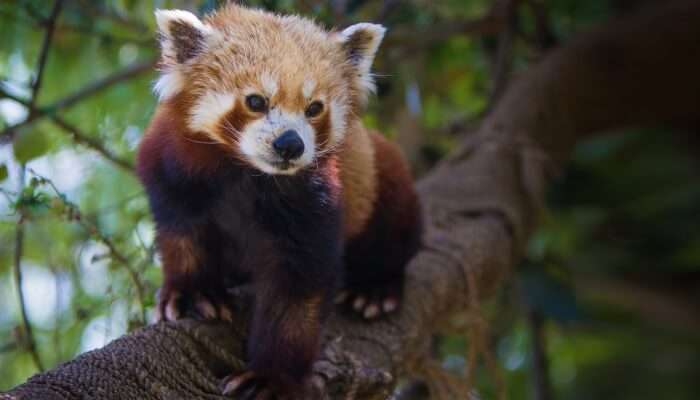
Get ready to have face-to-face encounters with some of the most exotic animals and enjoy a great time at the massive 125 acre Detroit Zoo. The zoo is located 2 miles north of the Detroit city in Royal Oak and Huntington Woods, Michigan and is one of the largest zoos in the world. Expect to find over 2,000 animals ranging from 230 or above species including penguins, zebra, aardvarks and much more. Exploring this might be one of the best things to do in Detroit , as your scope for exploration does not stop with animal viewing. Some attractions that you can tend to while exploring the zoo are the Rackham Fountain, the simulator ride, carousel ride and a 4D theater.
Location : 8450 W 10 Mile Rd, Royal Oak, MI 48067, United States Timings : 10 AM to 4 PM Entry Fee : INR 700 to 1500 Tips: Pack some snacks along with sunscreen and cover your head with hats to protect from peacocks. Best time to visit: Mid October to April when the weather is pleasant. Famous For : Arctic Ring of Life; Great Apes of Harambee; Penguinarium and Butterfly Garden
Suggested Read: 5 Offbeat Tourist Places Near Detroit That Are Totally Worth Visiting!
23. Memphis Zoo – For Some Jurassic Adventures

Memphis Zoo in the United States was established in April 1906. There are more than 4,500 animals belonging over 500 different species. African Veldt, Cat Country, and Dragon’s Lair are some of the zones at the park. Some of the animals that you would find here are African Elephant, Bongo, Zebra, Grant’s Gazelle, Southern White Rhino. Give a kick start to your wonderful vacation by visiting one of the biggest zoos in the world. The park hosts several activities and events for the visitors. There are some special Jurassic adventures too.
Location: 2000 Prentiss Pl, Memphis, TN 38112, United States Timings: 9 AM – 5 PM Entry Fee: INR 900 – INR 1300 Tips: You must check the website to see what’s special for that day. Must visit with family. Best time to visit: Month of December when the weather is cooler Famous For : Giraffes; Elephants; Rhinos
Suggested Read: 5 Stunning Places To Visit Near Singapore Zoo For Unlimited Fun
24. North Carolina Zoo – For A Wildlife Experience

Image Credit: Pixabay
Sprawled across an area of 5.548 km², North Carolina Zoo is situated in North Carolina and is considered the biggest zoo in North America. Therefore, exploring this zoo at its best usually takes more than a day. It is one of the largest zoos in the world . This zoo is home to more than 1800 diverse animals. Some of the common animals that can be spotted here are addra gazelle, African elephant, African lion, Arctic fox, American alligator, beaded lizard, blue-tongued skink, black bear, bongo, chimpanzee.
Location: 4401 Zoo Pkwy, Asheboro, NC 27205, United States Timings: April to October: 9 AM – 5 PM, November to March: 9 AM – 4 PM Entry Fee: INR 800 – INR 1121 Tips: Plan to arrive early on holidays. Famous For: Kaleidoscope Butterfly Garden; Acacia Station Giraffe Deck; Endangered Species Carousel Best time to visit: April to May
25. National Zoological Park, Delhi – A Powerhouse Of Endangered Animals
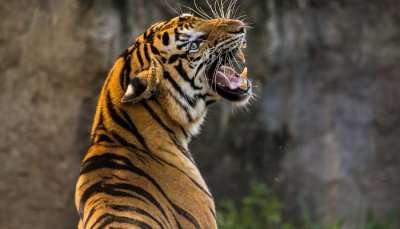
National Zoological Park in Delhi covers an area of 176 acres and is home to more than 1350 animals. Some of the endangered and vulnerable species such as royal Bengal tiger and one horned Indian rhinoceros can be spotted here. The zoo has beautiful pathways to facilitate long walks. Note that the option of exploring the park in a battery operated vehicle is also available.
Location: Mathura Rd, Pragati Maidan, New Delhi, Delhi 110003 Timings: 1st April to 15th October: 9AM to 4:30PM, 16th October to 31st March: 9:30AM to 4PM Entry Fee: Indian Citizens: INR 20 – INR 40, Foreign Nationals: INR 100 – INR 200 Tips: Ensure that you have enough energy to cover fairly long areas Famous For: Runs conservation breeding programs for endangered animals Best time to visit: Winters
26. Brookfield Zoo – For The Love Of Dolphins

Also known as Chicago Zoological Park, Brookfield Zoo is a zoo situated in Chicago. It covers an area of approximately 216 acres that is home to more than 450 species of animals. This zoo in Chicago has bagged many firsts as the first zoo to import giant pandas in the US. It truly is an interesting place to visit for a fun-filled experience. Moreover, it is a perfect place to visit for dolphin lovers.
Location: 8400 W 31st St, Brookfield, IL 60513, United States Timings: Time varies for different months and days Entry Fee: INR 1342 – INR 1865.4 Tips: Avoid weekends if you do not like crowd Famous For: Indoor dolphin exhibits; Butterflies gallery Best time to visit: Anytime of the year
27. Mysore Zoo – A Home For Green Anacondas

Also known by the name of Sri Chamarajendra Zoological Gardens, Mysore Zoo is situated at a distance of approximately 4.1 km from Mysore. This zoo is spread over an area of 157 acres. It is governed by the Department of Parks and Gardens of Mysore. Some of the animals spotted here include elephants, giraffes, zebras, white rhinoceroses, etc. Note that both the options of exploring the zoo by foot or through a vehicle operated by battery are available.
Location: Zoo Main Road, Indira Nagar, Ittige Gudu, Mysuru, Karnataka 570010 Timings: 8:30AM – 5:30PM Entry Fee: Normal Rates: INR 40 – INR 80, Saturday / Sunday /Govt Holidays: INR 50 – INR 100 Tips: If you arrive early in morning hours, you will get to see birds and reptiles. Famous For: Animal adoption program; Artificial lake; Green anacondas Best time to visit: To see most of the animals visit before 11.00 AM or after 3.00 PM
28. Nehru Zoological Park – Open For Animal Adoption
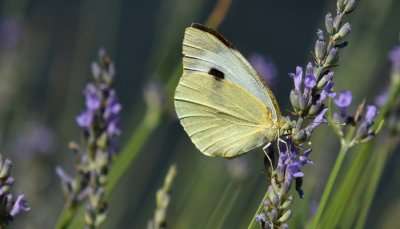
Covering an area of 380.5 acres, Nehru Zoological Park is one of the best destinations to visit in Hyderabad for nature lovers. This zoo accommodates a total of 1100 animals of 100 diverse species. One of the unique features of this zoo is that it has an artificial day-night reversal system that allows visitors to witness animals in their nocturnal habitat.
Location: NH 44, Bahadurpura, Hyderabad, Telangana 500064 Timings: 8 AM – 5 PM (Closed on Monday) Entry Fee: Weekday: INR 30 – INR 50, Weekends/Holidays: INR 40 – INR 60 Tips: You can carry food but don’t carry plastic bags inside Famous For: Nocturnal house; Butterfly park; Tortoise park, Dino park Best time to visit: Any time of the year
29. Assam State Zoo And Botanical Garden – An Abode For White Tigers
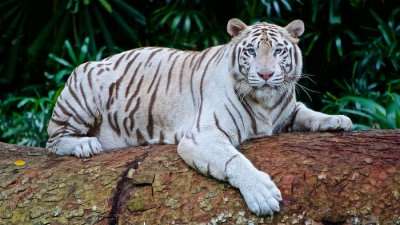
Assam State Zoo And Botanical Garden can be termed as one of the largest zoos in the world that is situated in the North eastern region of India. It was established in 1958. It covers an area of approximately 432 acres and receives an annual footfall of more than 4 lakhs travelers. One of the highlights of visiting this zoo is white tigers.
Location: RG Baruah Rd, Ambikagirinagar, Guwahati, Assam 781005 Timings: 8:00 AM – 4:30 PM (Closed on Friday) Entry Fee: Indian: INR 10 – INR 30, Foreign Nationals: INR 30 – INR 100 Tips: Avoid days with high temperatures and heavy rains Famous For: Aviary; Nocturnal house Best time to visit: September and March (winter season)
30. Indira Gandhi Zoological Park – India’s Third Largest Zoo

Indira Gandhi Zoological Park may not make its name in the list of world’s biggest zoos but it is the third largest zoo in India. It was established in 1977. The zoo accommodates approximately 850 animals. It is also a great place to spot Royal Bengal tigers, Indian Grey Wolf, Sarus Crane, etc.
Location: Near Dairy Farm, Yendada, Visakhapatnam, Andhra Pradesh 530040 Timings: 9:00 AM – 5:00 PM (Closed on Monday) Entry Fee: INR 10 – INR 20 Tips: Must carry your camera to capture amazing shots of animals and surrounding Famous For: Budgerigar; Macaw; Ostrich; Barking deer Best time to visit: Winter
31. Zoo Miami – Curate A Special Tour

Also known as Miami Dade Zoological Park, Zoo Miami is home to more than 3,000 animals. It covers an area of approximately 750 acres. It is some of the largest zoos in the world . Apart from spotting amazing animals, one can also partake in several informational activities such as feedings, rides, etc., or can arrange a special tour. Moreover, there is also an online zoo shop to get amazing stuff.
Location: 12400 SW 152nd St, Miami, FL 33177, United States Timings: 10 AM – 5 PM Entry Fee: INR 1416.8 – INR 1715.8 Tips: Wear comfortable shoes Famous For: Animal feeding; Kids Zones Best time to visit: Morning
32. Nandankanan Zoological Park – Spot Reptiles
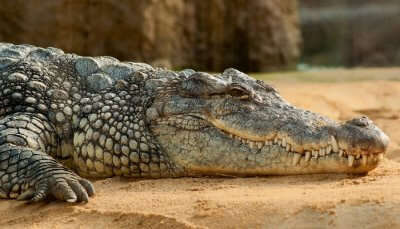
Situated close to Kanjia lake, Nandankanan Zoological Park is a beautiful place to visit for animal lovers in Odisha. This zoo is a part of the World Association of Zoos and Aquariums. It is situated at a distance of approximately 11.8 km from Bhubaneswar. It covers an area of 1080 acres. Reptile park, zoo museum, and nocturnal animal house are some of the highlights of this zoo.
Location: Nandankanan Rd, Near Police Station, Barang, Bhubaneswar, Odisha 754005 Timings: April to September: 07:30 AM – 5:30 PM, October to March: 08:00 AM – 5:00 PM (Closed on Monday) Entry Fee: Indian: INR 10 – INR 50, Foreign National: INR 100 Tips: Opt to go on a boat ride Famous For: White Tiger Safari; Kanija Lake Boating; Reptile Park Best time to visit: July to October
33. Arignar Anna Zoological Park – India’s Largest Zoo
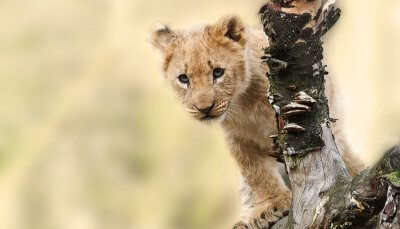
Arignar Anna Zoological Park is one best zoos in India. Also known as Vandalur Zoo, Arignar Anna Zoological Park is spread over an area of around 1,265 acres. It was established in the year 1855. It accommodates around 2700 animals that are of 171 different species. The zoo also hosts an animal rehabilitation center that provides shelter to abandoned animals. It is the largest zoo in India and is also one of the world’s biggest zoos .
Location: Grand Southern Trunk Rd, Vandalur, Tamil Nadu 600048 Timings: 09:00 am to 06:00 pm (closed on Tuesdays) Entry Fee: 30 INR (adults); 10 INR (children); INR 25 (camera fee) Tips: Make sure you keep yourself hydrated while taking a strol Famous For: Forest museum; Lion and deer safari; Animal rehabilitation center; Butterfly Park Best time to visit: January, February, November, and December
Suggested Read: 5 Best Zoos In Canberra To Witness The Charming Wildlife Of This Enchanting City
Tips For Visiting Zoos
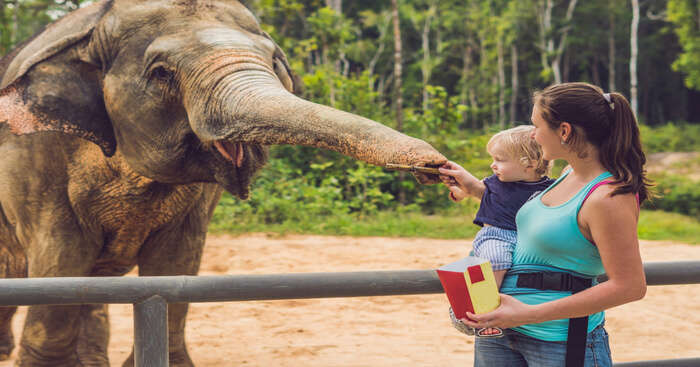
Here are a few tips to visit the zoos and also keep necessary things in mind:
- Respect the boundaries and never enter the animal’s enclosure. This can put both you and animals in great danger.
- Never feed animals anything. Feeding animals is strictly prohibited until done under supervision during a feeding activity arranged by the zoo itself.
- Do not litter around the premises and dispose of waste in the dustbin.
- Do not play music inside a zoo. It can create problems both for the visitors as well as the animals.
- Do not destroy the natural habitat by any means.
- Do not carry a food item or eat a food item out in the open.
- It goes without saying smoking is strictly prohibited.
- Go through the websites of the respective zoos to learn more about their specific rules and regulations.
- Carrying sharp objects or fire arms is strictly prohibited.
- Never tease animals and do not tamper the cages or glass walls.
Further Read: 12 Most Luxurious Villas in USA For Your Next Family Vacation
Ready for a thrilling and fun-filled adventure? Explore the largest zoos in the world by planning your next international trip right away. Are you planning your exhilarating vacation by visiting some of the biggest zoos across the globe? To click some amazing pictures, visit these largest zoos in the world with your loved ones.
Disclaimer : TravelTriangle claims no credit for images featured on our blog site unless otherwise noted. All visual content is copyrighted to its respectful owners. We try to link back to original sources whenever possible. If you own the rights to any of the images, and do not wish them to appear on TravelTriangle, please contact us and they will be promptly removed. We believe in providing proper attribution to the original author, artist or photographer.
Frequently Asked Questions About World’s Largest Zoos
Is the Bronx Zoo the largest zoo in the world?
Bronx Zoo is acknowledged as the biggest metropolitan zoo in New York city in the United States. Exploring this zoo will truly amaze you where the natural habitats of the animals will be displayed. The zoo has 4000 different species of animals.
Which country has the oldest operating zoo?
Austria has the oldest operating zoo named Vienna Zoo. The best time to visit the zoo is between October and December from 9 AM to 4:30 PM. The zoo is almost 17 hectares when considered area wise.
Which country has the most zoos?
There are more than 2400 Zoos in the United States which makes it the one of the maximum zoos in the world. San Diego Zoo is one of the famous zoos in the world where there are more than 800 species and over 4000 animals
Which is the largest zoo in India?
The Arignar Anna Zoological Park is considered as the largest zoo in India having more than 2,500 species of flora and fauna. The Zoo is also known as Vandalur Zoo which is located in Chennai, Tamil Nadu and is considered as the first public zoo in India.
Which is the biggest zoo in Europe?
Zoologischer Garten Berlin is the biggest zoo in Europe. The Zoologischer Garten Berlin covers an area of 160 acres thereby making it one of the largest zoos in Europe.
Where is the largest private zoo in the world?
Henry Doorly Zoo in Nebraska is considered as the largest private zoo across the world. World’s largest private zoo is populated with many species of exotic wild animals which roams over the hills considering it as their own native land.
Name the largest zoo in Asia?
Arignar Anna Zoological Park in Chennai is acknowledged as being the largest zoo in Asia. The Zoo is also known as Vandalur Zoo which is situated in Tamil Nadu and is considered as the first public zoo in India.
How many zoos are there in the world?
There are approx. 10,000 zoos across the globe. If you are planning to travel then avail an opportunity to visit one of the 10,000 zoos existing around the world.
Where is the largest zoo in the United States?
The Columbus Zoo and Aquarium is the largest zoo in the United States. It is located in Ohio and was opened in 1927. The zoo houses more than 7000 animals of 800 different species. The zoo even organizes summer camps for children to teach them all about animals. You will enjoy the experience of a lifetime.
What is the smallest zoo in the world?
Charles Paddock Zoo in California is probably the smallest zoo in the world. It is located on a 5-acre community and home to a male Malayan tiger named Menderu.
What is a natural habitat zoo?
Natural habitat zoos are suburban zoos that have thousands of animals and are divided by land immersions in their natural habitat. Pandas stay in the region of bamboo forests whereas reindeer stay in the tundra region.
Which is the largest zoo in Australia?
If you are looking for the largest zoo in Australia then you must visit the Australia Zoo. The Australian zoo is famous for safeguarding some of the world’s most endangered species which is located in Brisbane, Queensland.
People Also Read:
Zoos In Phuket Zoos In Thailand Zoos In New York
Recent Posts

La Suisse en juin: pour une expérience de voyage merveilleuse au milieu des sereines Alpes suisses en 2024.
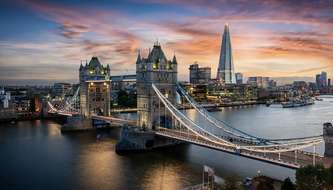
10 Endroits à visiter au Royaume-Uni qui rendront votre voyage plus classique que vous ne l’aviez imaginé
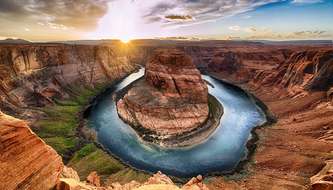
9 Hidden Facts About Grand Canyon To Explore Its Mysteries
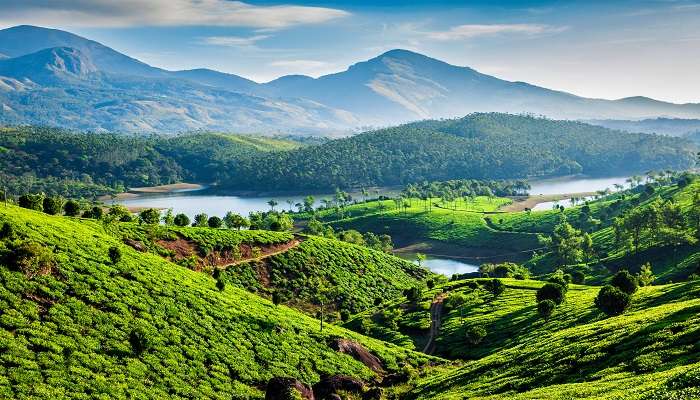
आनंदपूर्वक घूमने के लिए 52 भारत में सर्वश्रेष्ठ छुट्टियाँ बिताने की जगहें

2024 में एक ताज़गी भरी 49 छुट्टियों के लिए उत्तर भारत में घूमने की जगहें
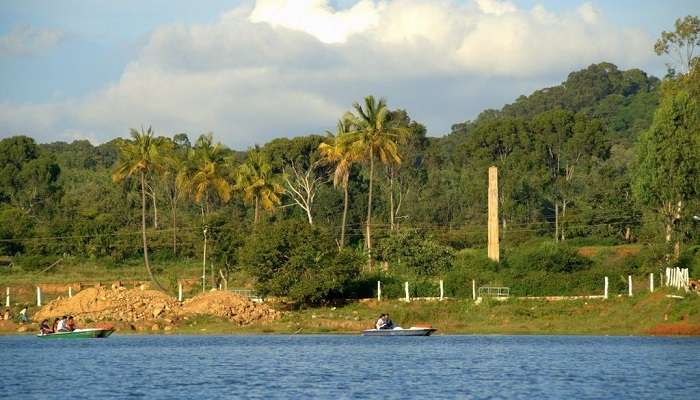
12 येलागिरी में घूमने की जगहें जो आपको प्रकृति से प्यार करने पर मजबूर कर देंगी
Trending Blogs

20 Mysterious Places In India To Visit In 2023 More Bizarre Than The Bermuda Triangle

10 Scariest Roads In India That Are A Driver’s Nightmare

101 Places To Visit In India Before You Turn 30 in 2024

35 Exotic Places To Visit In December In India 2024 To Enjoy A Surreal Vacation

60 Best Honeymoon Destinations In India In 2024

95 Best Honeymoon Destinations In The World In 2023 For A Romantic Escape!
Best Places To Visit In India By Month
Best places to visit outside india by month.
- TravelTriangle
- Zoo »
- Tour Packages
- Honeymoon Packages
- Family Packages
- Budget Tour Packages
- Luxury Tour Packages
- Adventure Tour Packages
- Group Tour Packages
- Kerala Tour Packages
- Goa Tour Packages
- Andaman Tour Packages
- Sikkim Tour Packages
- Himachal Tour Packages
- Uttarakhand Tour Packages
- Rajasthan Tour Packages
- Tour Packages From Delhi
- Tour Packages From Mumbai
- Tour Packages From Bangalore
- Tour Packages From Chennai
- Tour Packages From Kolkata
- Tour Packages From Hyderabad
- Tour Packages From Ahmedabad
- Kerala Tourism
- Goa Tourism
- Sikkim Tourism
- Andaman Tourism
- Himachal Tourism
- Uttarakhand Tourism
- Rajasthan Tourism
- Hotels in Kerala
- Hotels in Goa
- Hotels in Sikkim
- Hotels in Andaman
- Hotels in Himachal
- Hotels in Uttarakhand
- Hotels in Rajasthan
Senators reject field trip to African Lion Safari amid elephant bill study
Elephant rides took place at african lion safari in hamilton until 2019.

Social Sharing
The Senate legal affairs committee has rejected a motion calling for members to take a $50,000 field trip to the African Lion Safari in Hamilton to see the zoo's elephant exhibit.
The committee is studying a government bill that would prohibit new captivity and breeding of elephants and great apes without a license that shows it is for conservation, science or the animal's welfare.
Conservative Sen. Don Plett says the bill would have the biggest impact on the African Lion Safari, a drive-through zoo in Hamilton's ward 13 in the Dundas Valley which is home to 17 elephants.
He says it is offensive that senators don't want to take the time to visit in person before passing a bill that could kill a family-owned business.
Sen. Marty Klyne from the Progressive Senators Group, says he doesn't agree with spending $50,000 of taxpayer money to get a one-sided view of elephant captivity, and that the cost would be even higher to also visit an elephant sanctuary for comparison.
Klyne says the science on the impact of captivity on elephants is clear and the bill must pass.
Elephant rides at safari stopped in 2019 after injury
In 2023, CBC News reported that African Lion Safari was one of 55 companies that received Ontario taxpayer money for tourism losses during the pandemic.
The zoo received the maximum grant of $695,000, as did other high-profile tourism attractions, such as Canada's Wonderland.
Elephant rides took place at African Lion Safari in Flamborough, Ont., until 2019, when a trainer was injured by an elephant named Maggie.
- CBC Investigates African Lion Safari ended elephant rides after 2019 attack. So why are they still allowed in Canada?
- Canadian zoo accreditation body bans elephant rides. Advocate says change is overdue
That attack was the subject of a CBC investigation , which found CAZA continued to allow the rides a decade after its American counterpart, the Association of Zoos and Aquariums, halted the practice because of safety concerns for staff who work with elephants.
CAZA announced it had banned elephant rides for its members in December of 2019.
With files from CBC News
Related Stories
- Sask. senator hopes to see bill passed that would limit new captivity of elephants, apes
- These companies got Ontario taxpayer money for tourism losses during pandemic
Watch CBS News
How wildlife crossings protect both animals and people
By Conor Knighton
April 21, 2024 / 9:11 AM EDT / CBS News
Interstate 90 is the longest interstate highway in the United States. Spanning more than 3,000 miles, it connects Seattle in the west to Boston in the east. But it also serves as a massive concrete divide. For the animals who live to the north and south of the interstate, this road has absolutely wrecked their commute.
The U.S. Forest Service and the Washington State Department of Transportation have teamed up to develop a network of "critter crossings" in Washington – overpasses and underpasses designed to provide safe passage for wildlife.
The crossing project, with structures at areas identified where animals are likely to cross, spans 15 miles of I-90 near the Snoqualmie Pass in Washington, flanked by large chunks of what's primarily national forest land – habitat for all sorts of creatures great and small.
But if animals are protected on both sides of I-90, why does it matter if they're not connected? "Because you lose genetic variability," said Patty Garvey-Darda, a wildlife biologist with the Forest Service, "and gradually you start getting localized extinction, and populations get further and further apart, and smaller."

Around the country, most animals see a busy highway and turn around. A brave few might try to cross, but they're at risk of getting run over. A wildlife crossing is supposed to make that process far less treacherous. But there's no guarantee that if you build it, they will come. So, miles of fencing along the road serves to funnel animals towards crossing points. High concrete walls block headlights and dull the traffic noise.
"We wanna mimic the habitat on either side, native plants and everything, so that animals sort of don't even see the transition," said Garvey-Darda.
It worked. In 2022, cameras captured animals – including mule deer, elk and coyotes – using these crossings more than 5,000 times.
According to Brian White of the Washington DOT, the wildlife crossings in Banff, Alberta, Canada, were a success story to mimic. Banff's 38 undercrossings and six overcrossings along a section of the Trans-Canada Highway that cuts through Banff National Park have reduced wildlife collisions by 80 percent, and been used as a model for crossings worldwide.
Back in the U.S., there are now around 1,500 wildlife crossing structures in 43 states. In Wyoming, pronghorn run across Highway 191. In Florida, panthers and alligators creep under I-75. They can be subtle; motorists may have no idea they're driving over moose in Montana or tunnels full of tortoises in Utah.
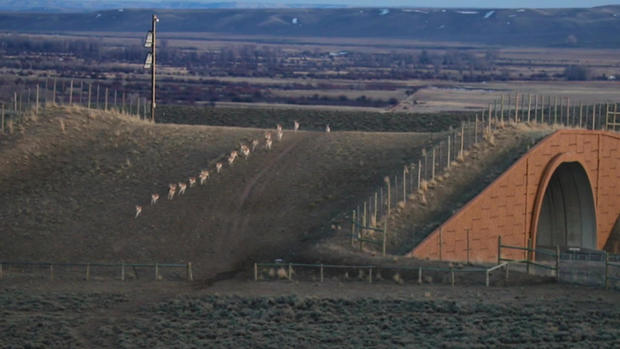
But it will be hard to miss the crossing currently being built not far from Los Angeles; once it's completed, in late 2025 or early 2026, the Wallis Annenberg Wildlife Crossing will stretch for more than 200 feet across 10 lanes of the 101 Freeway, which can see up to 400,000 vehicles a day. It will be the largest wildlife corridor in the country.
Beth Pratt, who serves as regional executive director for the National Wildlife Federation in California, said, "I think that's a real miracle, that over one of the busiest freeways in the world you're gonna be driving under it, and mountain lion, fox, might be walking over. Or a fence lizard, or a ground squirrel may have a family on top. That's a really hopeful project. And we do owe it to P-22."
P-22 was the celebrated mountain lion who roamed around L.A.'s Griffith Park. When he was younger, he somehow made it across two freeways, only to end up a lonely Hollywood bachelor until his death in 2022.
But even for the mountain lions who can find mates, the dates are a little too close to home, and biologists worry the small population here could soon go extinct. The crossing, which is estimated to cost $90 million, will expand the dating pool. That's important for all sorts of critters, even ones that aren't as obviously charismatic.

Back underneath I-90, Professor Jason Irwin and his team of Central Washington University students are focused on everything from toads to salamanders making use of an underpass. "It's really been fantastic to work in a project where they appreciate the little guy," he said.
There are also human lives at stake. There are approximately one million collisions involving large wildlife on America's roads each year, resulting in some 200 human deaths.
Last year, Transportation Secretary Pete Buttigieg announced a federal grant program awarding a total of $350 million to states looking to build crossings and improve safety.
- UC Davis study says animal crossings could save California billions
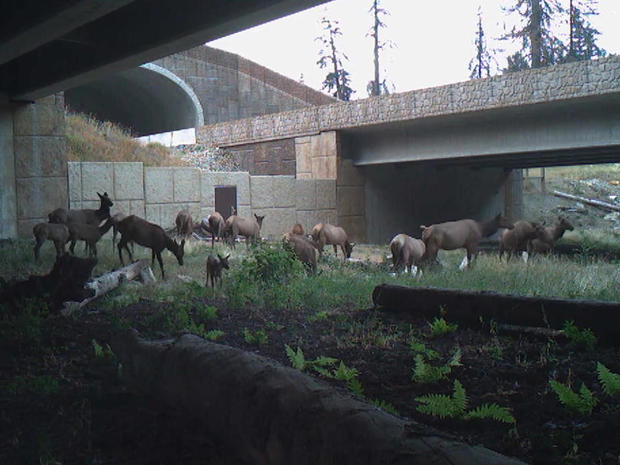
White has already seen a reduction in collisions where the crossings have been built. "If you think about it that way, and you think about how many accidents didn't happen, these crossing structures pay for themselves pretty fast," he said.
And fewer road closures mean faster commutes for everyone.
Even though the crossing construction in Los Angeles has meant occasional slowdowns and lane closures, Pratt said the public has been able to stay focused on the benefits down the road.
"Wildlife crossings are something, it doesn't matter if you're a Republican or a Democrat, or what political affiliation – people really support them," she said. "I think there's very few people who don't get upset when they see a dead animal on the side of the road. So, I think that this is something that in a time where we agree on very little, we pretty much agree on wildlife crossings."
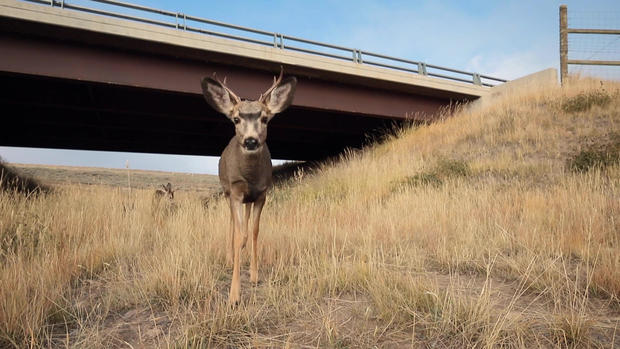
For more info:
- U.S. Forest Service
- Washington State Department of Transportation
- National Wildlife Federation
- Wallis Annenberg Wildlife Crossing (Annenberg Foundation)
- SaveLACougars.org
Story produced by Michelle Kessel. Editor: Joseph Frandino.
More from CBS News

Israeli strikes in Rafah kill 18, mostly children, Palestinian officials say

California could ban Clear, which lets travelers pay to skip TSA lines

Pro-Palestinian protests leave American college campuses on edge

Search underway for ex-cop after 2 women found dead, 1-year-old abducted

IMAGES
VIDEO
COMMENTS
Iconic safari animals list. 1. Lion. A pair of lions - the ultimate African safari animals. Leaping in at first place is the lion, also known as the king of the jungle. Lions are the largest and most sociable of Africa's cats. At up to 225 kg, the lion ( Panthera leo) really is the king of all savanna animals (not jungle!).
Just eight countries are believed to have at least 500 adult lions: Tanzania, Botswana, Kenya, Mozambique, South Africa, Zambia, Zimbabwe and Namibia. The lion is listed as Vulnerable by the International Union for the Conservation of Nature (IUCN). Where to go for your first safari in Africa.
The true icon of Africa's Big Five, the African lion is the symbol of strength and power, the epitome of any safari to wild Africa. Today, catching sight of this apex predator is one of the most sought-after prizes for almost every safari-goer, with regal prides located from East to South. Observing the social aspect of lions' lives is one of ...
Once mostly targeted by hunters, these large species are "awe-inspiring" sights for safari-goers. If you've gone on an African safari, chances are you've heard of the Big Five, the must ...
A lion's life is all about sleeping, napping, and resting. In a 24-hour period, lions have short bursts of intense activity followed by long bouts of lying around that can total up to 21 hours! These gorgeous felines are good climbers and often rest in trees, perhaps to catch a cool breeze or to get away from flies.
Although most elephants are peaceful by nature, they can be dangerous if provoked; however, they are far more at risk from humans than we are from them. Best Places to See Elephants: Vast elephant herds roam Hwange National Park in Zimbabwe and Chobe National Park in Botswana. Continue to 3 of 15 below. 03 of 15.
The lion is the most sought after species by safari goers. Lions can be observed in most of the popular, protected wildlife areas. Including areas with particularly high densities offers good chances for observing behavior. These charismatic big cats are most active at night and only eat every three or four days, however they are opportunists ...
Common Name - African Lion. Scientific Name - Panthera Leo. Current IUCN Red List Status - VU. Estimated no. of mature individuals - 23,000 -39,000. Lions are capable of living in a wide variety of habitats and are found across parts of sub-Saharan Africa (mostly Southern and Eastern Africa). Lions generally stick to areas such as ...
African lion. African lions are revered the world over, but their population has shrunk in half over the past 25 years. Conflict with humans is one of the greatest threats they face. Photograph by ...
Our African Lion Safari is the perfect way to learn all there is to learn about the lion and the other wild cat species in Africa. The characteristics and appearances of African wild cats vary greatly. There are 10 special wild cat species in Africa. They can be found in the Savannah, rainforests, and sand dunes.
The 320-acre attraction offers the drive-through safari, walk-through adventure park and award-winning KOA campground. At Lion Country Safari, large herds of animals from 6 continents roam free, while humans visiting are enclosed (in their vehicles). Hundreds of WILD animals including lions, wildebeest, giraffe, the largest herd of zebras on ...
See wild lions in their natural habitat when you visit Africa with NHA! See all of our African safaris: http://www.nathab.com/africa/ The lion, known as the ...
Explore our 4-mile drive-through wildlife park, with large herds of animals roaming wide open, naturalistic habitats. The safari preserve is divided into 7 main habitats, where you will see a variety of iconic animals, including some of the largest herds of zebra, rhino, and giraffe on record in the country.
Lion Country Safari strives to "be a leader in animal care, conservation and education to inspire people through connections with wildlife in a fun, family-friendly environment." The Drive-Through-Safari is divided into seven sections, which houses more than 900 animals, kept in large fenced areas with about five miles of paved roadway running ...
Opened in 1967 and situated on 600 acres, Lion Country Safari is Florida's largest drive-through safari and is home to hundreds of animals roaming wide open, natural habitats in large herds ...
Hours. OPEN DAILY - 365 DAYS A YEAR. 9:30AM - 5:30PM. (last car admitted into the preserve at 4:30PM) Hours. Buy Tickets. Shop. Visit. Plan Your Visit.
Monitoring Lion Reproduction. Animal collection managers occasionally need to slow or suspend reproduction in individuals that are well-represented in a population. African lions at the San Diego Zoo and Safari Park have enjoyed good reproductive success in recent years. Their offspring have been shared with other zoos and are now contributing ...
Reviews — Zoos in Europe. Moscow Zoo. During the second half of the nineteenth century the first menageries in Moscow were established as entertainment facilities. The first was founded in 1855 by two Frenchmen (names unknown), while the Kreuzberg family owned a private menagerie that opened its door to the public in ...
Henry Doorly Zoo - World's Largest Indoor Desert. Columbus Zoo And Aquarium - A Non-Profit Zoo. Toronto Zoo - Canada's Largest Zoo. Moscow Zoo - Among The Oldest European Zoos. Beijing Zoo - Largest Animal Collection In China. Berlin Zoological Garden - Germany's Oldest Zoo. Dallas Zoo - A Throne Of A Place.
Moscow Zoo Museum[edit] Founded in 2008 in a two-storey building of the 19th century, built in the late XIX - early XX centuries, located on the territory of the zoo. Since 2015, the museum has been open to the public and everyone. In the central and side halls there is an exposition devoted to the history of the Moscow Zoo and a natural ...
The Lion Country Safari Experience. Lion Country Safari is situated on nearly 600 acres of natural area and home to hundreds of animals. Explore one of Florida's wildest attractions and one of the top things to do in Palm Beach County.
A cub of a rare lion-tailed macaque was born in Moscow zoo. More... A pair of Jackass penguins from Moscow zoo became parents . More... Moscow zoo celebrates the Cats Day ... but a baby takin is always good news. Takins are rare animals in European zoos, especially this very subspecies — Sichuan takin. The animal is on the IUCN Red List. All ...
The Senate legal affairs committee has rejected a motion calling for members to take a $50,000 field trip to the African Lion Safari in southern Ontario to see the zoo's elephant exhibit.
Last year, Transportation Secretary Pete Buttigieg announced a federal grant program awarding a total of $350 million to states looking to build crossings and improve safety. Wildlife diverted ...
Aloha Safari Zoo, off N.C. 87 in Harnett County, is a 66-acre property about an hour's drive southwest of downtown Raleigh. Brown bought the zoo in 2022. Zootastic Park of Lake Norman in ...